Exceptional




The Powerful Rewards of Listening Meeting the Needs of Siblings MANAGINGHOLIDAY STRESS
Needs TODAY Issue 10 GROWING TOGETHER EASING THE “ SEX TALK ” WITH YOUR AUTISTIC CHILD TRANSITIONING FROM A PEDIATRICIAN TO ADULT PRIMARY CARE TAKING CONTROL OF ADHD AS A STUDENT TOP SPORTS VACATION IDEAS FOR FAMILIES WITH DIFFERING ABILITIES

Securities and investment advisory services offered through qualified registered representatives of MML Investors Services, L LC, Member SIPC. 4350 Congress Street, Suite 300, Charlotte, NC 28209. 704 557 9600. A Special Needs Plan is not a subsidiary or affiliate of MML Investors Services, LLC or its affiliated companies. A Special Needs Plan can help answer these questions: 1. Who is going to take care of your child after you are gone and where will they live? 2. How much will that care cost and how are you going to pay for that care? 3. Do you have a special needs trust and do you know how much money you will need in it? How are you going to fund it? How are the funding instruments taxed when you die? 4. What government benefits are available to your child and how do you apply for them? 5. What is the Medicaid waiver and how do you apply for it? 6. How will you communicate your plan to family members? www.ASpecialNeedsPlan.com Phone (704) 326-7910

07
EASING THE “SEX TALK” WITH YOUR AUTISTIC CHILD
JC Ellinger
Recognize the necessity of a safe and open discussion of sex and relationships with your child and learn four key points for facilitating such talks.
LISTEN TO OUR CHILDREN; GET INTO THEIR WORLD
Richard Schreiber, PMP, CSM, CSPO
Learn about Level Five listening as a parent shares his journey in adapting beyond his generation’s parenting standards to engage in meaningful exchanges with his autistic daughter.

SAFETY GOALS WITH NICOLE
POSSIBLE SIGNS OF CHILD ABUSE FOR CHILDREN WITH DISABILITIES
Nichole Moehring
Take note of potential symptoms of sexual abuse in children and regularly compare them with any changes in your child’s usual behavior, including actions you may attribute to a diagnosis.
EXCEPTIONAL BOOKS
SEE ME: THE INVISIBLE AUTISTIC BOY
This book, written and illustrated by an autistic middle school teacher named David Petrovic, BA, MAT, beautifully promotes the power of kindness and accepting differences in others and ourselves.
RENOUNCING RESISTANCE AS AN AUTISM PARENT
Andrea Pollack, MSEd
Understand the benefits of accepting your feelings and learning as a parent rather than getting trapped in consuming negativity.
THE VALUE OF EARLY INTERVENTION FOR BOTH PARENT AND CHILD
Karen Kaplan
Discover the benefit of early intervention for guiding parents of exceptional needs children and implementing learning supports for the child.

FINANCIAL FOCUS
FUNDING YOUR CHILD’S LIFETIME SUPPORT NEEDS
Ryan F. Platt, MBA, ChFC, ChSNC, CFBS
Learn about the various types of life insurance policies and how to use them to fund a Special Needs Trust.


COLLABORATION AMONG PARENTS, TEACHERS, AND ABA THERAPISTS IMPROVES OUTCOMES FOR SPECIAL EDUCATION

Brandon Clark, PsyD, BCBA
Recognize how working towards a positive mindset within your child’s care team can improve its efficacy.
NEURODIVERSE RECOMMENDATIONS FOR LAUNCHING INTO YOUNG ADULTHOOD, COLLEGE, AND BEYOND
Patrick LaCount, PhD
Discover how three skill areas identified as key for ADHD management in adulthood can apply to neurodiverse teens.
LEANING ON FRIENDS: HOLIDAY STRESS WHEN THERE ARE SPECIAL NEEDS
Deanna Picon
Inspire yourself to reach out to your friends when you need it this holiday season by reading a heartwarming email exchange between two autism moms centered on self-care.
42 TOPICS WITH TAMMY TRANSITIONING FROM A PEDIATRICIAN TO AN ADULT PRIMARY CARE PHYSICIAN WHEN THERE ARE SPECIAL NEEDS
Tammy Flynn
Learn the general guidelines for preparing your child for transitioning into the adult health care system.

SHIFTING SENSORY REGULATION FOCUS FOR BETTER BODY UNDERSTANDING
Laura Ryan, OTD, OTRL
Gain strategies for teaching your child about their sensory systems for improved relationships with their bodies and emotions.
Contents Issue 10
33 29 22 26 18
12 15 36 38 46 4 | Exceptional Needs Today | Issue 10
THE IMPORTANCE OF CONSISTENCY AND ROUTINE FOR THE ATYPICAL BRAIN
Beatrice (Bea) Moise, MS, BCCS
Find out the benefits of routine and consider the additional help it may offer exceptional needs individuals with mastering target skills over time.
CREATING AUTISM-FRIENDLY SPACES CAN HELP CHILDREN THRIVE
Ron Sandison
Learn how a childhood spent advocating for an autistic sister led interviewee Natalie Castro into the niche field of autism-centric real estate and home design.
MY SIBLING HAS DOWN SYNDROME, NOT ME—MEETING THE NEEDS OF SIBLINGS
Dr. Ronald I. Malcolm, EdD
Consider options for increasing communication and understanding between siblings of individuals with Down syndrome, their family members, and other people with Down syndrome.
KATE MAKES IT GREAT!
ENCOURAGING AND EXPANDING A CHILD WITH SPECIAL NEEDS’ ABILITY TO PLAY AND ENGAGE WITH YOU
Kate C. Wilde
Learn how to use a child’s interests to encourage active participation and how to show support when your child appears uninterested in interaction.
61 THE SPROUT STORY
Ewa Omahen, PhD
Enjoy a short story about tender care and appreciation of plants in a garden of life in honor of all educators and therapists who dedicate their time working with those with exceptional needs.
UNDERSTANDING WHAT IT TAKES TO BECOME A SPECIAL EDUCATION TEACHER
Karen Kaplan
Use possibility thinking to address the potential reasoning and institutional blockades causing a dearth of special education teachers and knowledge of what that career path entails.
TAKING CONTROL OF ADHD AS A STUDENT
Coral Levkovitz
Learn about some positive life habits firsthand from a recent college graduate with ADHD that may help you control a diagnosis and improve the educational experience.
EXCEPTIONAL BOOKS
I HAVE A QUESTION
The I Have a Question series, co-created by Meredith Polsky, LMSW, MS, and Arlen
MSW, LCSW-C, APHSW-C, offers
a straightforward, concise
explicitly towards
exceptional needs aged five to eleven.
TEACHING YOUNG PEOPLE ABOUT RELATIONSHIPS AND CONSENSUAL SEX WHEN THERE ARE SPECIAL NEEDS
Isabel Bullón Benito
Learn ways to provide a safe and flexible environment
teaching individuals
PEOPLE PRESENTS AND THE POWERFUL REWARDS OF LISTENING
Dr. Maria F. Gilmour, PhD, BCBA-D
Enjoy a personal account of how a behavior analyst discovered and adopted “People Presents,” the power of dedicated interpersonal engagement, and applied it to telehealth meetings.
EXCEPTIONAL ADVICE FROM MESHELL MANAGING HOLIDAY STRESS WHILE BALANCING EXCEPTIONAL NEEDS
Meshell Baylor, MHS
Learn ways to lessen the burden of holiday preparation while embracing the joy.
A MOTHER’S THOUGHTS: THE BANALITY OF AUTISM
Dr. Marlene Ringler, PhD
Share in the indignation resulting from the insensitive and misinformed usage of autism as a catchall term for a witnessed nonstandard behavior as a mother/ advocate explains the need to treat the diagnosis with respect.
TOP SPORTS VACATION IDEAS FOR FAMILIES WITH DIFFERING ABILITIES
Dawn M. Barclay
Familiarize yourself with various sports-centered vacation options for seasonal activities that are likely to prove accessible and enjoyable for family and friends.
NATURE NOTES
COMING HOME TO NATURE: AN INTERVIEW WITH PATRICK BARKHAM
Amy Wagenfeld, PhD, OTR/L, SCEM, EDAC, FAOTA
Enjoy the thoughts of an award-winning author and natural history writer on the importance of creating opportunities for children to develop joy in nature.
EXCEPTIONAL NEEDS TODAY
Exceptional Needs TODAY
Our mission is to educate, support, and energize families, caregivers, educators, and professionals while preparing all families for a healthy future.
exceptionalneedstoday.com
Founder/Publisher
Amy KD Tobik
Lone Heron Publishing, LLC
Magazine Staff
Editor in Chief: Amy KD Tobik
Editorial Assistant: Margo Marie McManus
Editorial Support: Ganesh Dhungana
Copyeditor: Derik Hicks

Social Media: Dione Sabella
Graphic Designer: Patrick Gwayi
Professional Consultants
Chris Abildgaard, EdD, LPC, NCSP, NCC
Debra Moore, PhD
Brett J. Novick, MS, LMFT, CSSW
Annette Nuñez, PhD, LMFT
Sandison
Amy Wagenfeld, PhD, OTRL, SCEM, EDAC, FAOTA
Exceptional Needs Today is published four times a year and distributed digitally to readers for free by Lone Heron Publishing.
Disclaimer: Advertised businesses and products are not endorsed or guaranteed by Exceptional Needs Today, its writers, or employees. Always follow medical advice from your physician.
Ron
Contact Us editor@exceptionalneedstoday.com advertisingdir@exceptionalneedstoday.com advertising@exceptionalneedstoday.com submissions@exceptionalneedstoday.com editorial@exceptionalneedstoday.com
Gaines,
answers in
manner tailored
children with
for
about sexuality.
49 77 80 83 86 70 74 58 64 67 51 55 COVER PHOTO CREDIT: JC Ellinger 69 Exceptional Needs Today | Issue 10 | 5
From the Editor’s Desk
TOGETHER
Life can be a bit stressful—even overwhelming at times. Whether you’re a parent, an educator, a therapist, or you have an excep tional needs diagnosis, it is paramount to find ways to work and grow together. We develop strength and confidence when we seek new methods to manage the more challenging parts of our lives, including ways to protect and support one another.
When I attended a special needs summit earlier this year, I asked participants to share the topics most important to them. I am de lighted to say this issue reflects at least a dozen of those requests.
Navigating puberty was at the top of this list, including advice on approaching the infamous “sex talk.” Fortunately, one of our writ ers, JC Ellinger, is currently navigating this stage with her teenage son and was open to providing firsthand advice. Her piece, Easing the “Sex Talk” With Your Autistic Child, emphasizes the necessity of a safe and honest discussion of sex and relationships with teens and includes tips on facilitating such talks.
Participants also stressed the need for fresh guidance on prepar ing a loved one for adulthood. Several contributors—a therapist, a parent, and a self-advocate—jumped at the chance to share their thoughts with us. In his piece, Neurodiverse Recommendations for Launching Into Young Adulthood, College, and Beyond, Patrick La Count, PhD, describes three skill areas crucial for attention-defi cit/hyperactivity disorder (ADHD) management. Tammy Flynn, author, podcaster, and caregiver to her son with special needs, has penned an invaluable piece called Transitioning From A Pedi atrician to An Adult Primary Care Physician When There Are Special Needs. Recent college graduate Coral Levkovitz shares some pos itive life habits she used to manage her ADHD diagnosis in Taking Control of ADHD as a Student.
Taking the time to step back to appreciate and support one anoth er is also essential for growth. Brandon Clark, PsyD, BCBA, has au thored an important piece directed at a large audience called Col laboration Among Parents, Teachers, and ABA Therapists Improves Outcomes for Special Education. Not only does collaboration boost awareness and progress—it makes students feel like they have a special team of support.
Finding ways to connect is critical to development. Richard Sch reiber, PMP, CSM, CSPO, founder of the NYC Autism Community Group, shares his journey with his autistic daughter in his article, Listen To Our Children; Get Into Their World. Be sure to read as he lovingly explains how he altered his parenting tactics to engage
in meaningful exchanges with his child. Another article you wouldn’t want to miss is colum nist Kate C. Wilde’s Encouraging and Expanding a Child With Spe cial Needs’ Ability To Play and Engage With You. Kate clearly ex plains how to use a child’s interests to encourage active participa tion, as well as different approaches to show support when a child appears uninterested in interaction.
With the holidays right around the corner, we reached out to au thor Dawn M. Barclay on some sports-centered vacation options for seasonal activities that are likely to prove accessible and en joyable for family and friends. We hope her article, Top Sports Va cation Ideas for Families With Differing Abilities, inspires families to seek ways to connect and grow together. For advice on easing holiday preparation stressors, read Managing Holiday Stress While Balancing Exceptional Needs by columnist Meshell Baylor, MHS. And don’t miss Deanna Picon’s piece, Leaning on Friends: Holiday Stress When There Are Special Needs, as she encourages readers to reach out to friends using a heartwarming email exchange be tween two autism moms.
When we work together, GREAT things can happen.
Best,
Amy KD Tobik
Editor-in-Chief, Exceptional Needs Today Publisher, Lone Heron Publishing

PLEASE JOIN OUR EXCEPTIONAL COMMUNITY

“Alone we can do so little; together we can do so much.”
—Helen Keller
GROWING
6 | Exceptional Needs Today | Issue 10
Easing the “Sex Talk” With Your Autistic Child
 By JC Ellinger
By JC Ellinger
AS MY SON’S NEXT BIRTHDAY APPROACHES, I AM REMINDED OF HOW MUCH TIME HAS PASSED AND HOW MUCH HE HAS GROWN INTO A SOON-TO-BE-TEENAGER. THE QUESTIONS I HEAR COMING OUT OF MY MOUTH SOUND LIKE, “ARE YOU REMEMBERING TO PUT YOUR DEODORANT ON?” AND “IS THAT YOUR THIRD PLATE OF FOOD?” WITH ANSWERS LIKE, “SOMETIMES MOM, I’M REALLY LAZY IN THE MORNING, AND I FORGET,” AND “I’M HUNGRY, MOM. I CAN EAT A LOT MORE NOW!”
Exceptional Needs Today | Issue 10 | 7 SKILLS FOR LIFE
Then recently, my son confessed to attempting research on boobs (aka breasts) on his iPad, which came up a bit short (thanks to the parental protection I somehow managed to set). So, I asked him, “Why did you want to look up boobs? Did you want to see what they look like?” and he respond ed, “Oh, no, Mom—I already know what they look like. I was trying to look up information that explains how they grow.”
Though his answer didn’t exactly provide me a level of comfort, his curiosity was scientifically driven; based on my son, that made a lot of sense.

This was the first chapter of several that followed his bar rage of poignant (and sometimes uncomfortably graphic) questions. As this stage of development quickly makes its presence known in the form of bodily changes, behaviors, and cringe-worthy questions, as parents, promoting a safe space for these conversations ensures your child’s under standing of an important topic. Of course, every family fol lows its own set of values and parenting guidelines, espe cially regarding sensitive topics such as sex.
The main purpose of discussing sex is to educate your child, thereby allowing accurate information to promote safe boundaries.
Here are four points of importance when managing the “sex talk” with your autistic child:
1. Remember, autistic teenagers develop sexually the same as any other teenager
A child’s neurological mapping does not influence their sexual or anatomical development. According to the pop ular parenting puberty book titled, It’s Perfectly Normal : Changing Bodies, Growing Up, Sex, and Sexual Health by Harris and Emberley, between the time frame of eightyears-old through fifteen-years-old, a child’s body begins its biological process that causes emotional and physical changes. There is no developmental difference between a child with autism and a typically developing child. The pro cess remains exactly the same.
However, what makes this curiously confusing time a bit more complicated for a child (and a parent) with autism spectrum disorder (ASD) is how to best approach this topic. This brings us to our next talking point.
2. Just like any other teenager, welcoming and open dialogue is encouraged
Understandably, this time brings about many questions for any child. And although the conversations can quickly turn into a squeamish or uncomfortable dialogue (I can attest), tweens and teenagers on the autism spectrum require care ful explanations from trusted sources. In addition, the con versations should include discussions about how the body changes as well as sexual feelings and different kinds of re lationships.
In Amy Lang’s blog, aptly named Birds + Bees + Kids , she shares fantastic tips on ways to steer this conversation:
• Use a straightforward and factual tone, but re member to be lighthearted about it as well
• The Sex Talk Formula: Facts + Values. Explain what something is and what your value (or stance) is about it. This formula might also look like this: Facts + Why + Values
Then Amy provides an accompanying example to demon strate the formula in action:
FACT: A condom is something a man puts on his penis be fore he has sex to capture the semen and sperm. It stops the woman from becoming pregnant and prevents passing germs.
VALUE: The rule is (or I believe) that when you have sex with someone, the man always uses a condom so you can have safer sex.
When these conversations occur, Amy also encourages us ing REAL WORDS. So instead of using the word “boobies” or “boobs” (as I have already demonstrated), one should
8 | Exceptional Needs Today | Issue 10 SKILLS FOR LIFE
use the accurate name instead: “breasts.” Additionally, she says, “skip the euphemisms” such as “lovemaking,” and instead just say “sexual intercourse” or “sex.” Following guidelines such as the ones Amy suggested prevents lan guage confusion and applies a straightforward answer to minimize any misinterpretation.
Furthermore, this type of open dialogue supports a safe and honest go-to resource for your child. Their understand ing gives them the knowledge to make safe choices that im pact themselves and others.
3. Have a conversation about good and bad touch
One of the crucial reasons for promoting continuous con versations about sex is ensuring your child’s understand ing of boundaries. Depending on your child’s age, ensuring a clear understanding of the types of relationships is one approach to starting this third talking point—boundaries of touch.
As your child ages, the discussion about relationships and boundaries will also evolve. In other words, be attentive to their changes so your talks with your child can attend to their ever-changing growth and development.
4. Use visual aids and social stories to assist with your TALK
As with just about anything that requires explanation or a demonstration with your child on the spectrum, leaning on visual aids and social stories provides your child anoth er modality to process the information. Sometimes these talks can get anatomically heavy. And when they do, using visual aids can be a great communicative support as this discussion comes up and evolves (yes, be prepared—sex talk is not a one-and-done).
Here are some helpful aids geared for tweens and teens:
• “Every Body Curious” by Shaftesbury Kids on YouTube
This is a fun and illuminating web series for young people that explores the birds and the bees with ease in today’s digital landscape. The production of this series is something I would use as a par ent. It looks to be educational and informative for young tweens.
• “Sex Ed at Home” podcast
This podcast is geared toward parents, providing examples of typical sex questions from kids fol lowed up with Rebecca’s, an experienced sex ed ucator, response to their question. Unfortunately, the available episodes are limited, but I still found her podcast helpful.
• “Sex Positive Families” website
A visual aid called Circles or Relationship Circles teaches children that there are different levels of relationships and that each relationship level is bordered by a different set of boundaries.

This discussion, which can begin as soon as your child starts school, can then evolve into what kind of touching is ap propriate and what kind of touching is not so appropriate. Again, using anatomical names and direct terms provides a consistent language foundation when these conversations arise as the child matures.
Talking about masturbation for any parent can be uncom fortable, but for an ASD parent, having this talk is part of discussing boundaries. Explaining what it is and appropri ate and inappropriate times for it are points of discussing masturbation with your autistic child. For example, you might explain that masturbation is when you touch your genitals and that this activity is normal. However, you might continue to add that although it is normal to touch yourself, it should be done in privacy.
“Provides the education and resources that help families raise sexually healthy children.” This site seems to share a variety of resources that can be useful and informative for various areas of sexual health.
The discussion at home about sex has already evolved. While researching and writing this piece, I am reminded of how technology provides us with knowledge in child-friend ly formats that a hard-covered collection of the Encyclope dia Britannica could never achieve. I recently shared with my son that I discovered a few resources I thought would be educational and entertaining in discussing sex and bod ies. And that very night, he asked to watch one of the video series I recommended. So, keep the discussion open and direct while using the same talking tone you would use in a casual conversation. There are great aids and resources to help navigate the sex talk with your child to accompany your talks. As echoed by authors Harris and Emberley, just remember: “It’s perfectly normal.”
Exceptional Needs Today | Issue 10 | 9 SKILLS FOR LIFE
The main purpose of discussing sex is to
child,
to promote safe
Works Cited Circles App. (n.d.). Retrieved June 16, 2022, from https://www. circlesapp.com/
Harris, R. H., & Emberley, M. (2009). It’s Perfectly Normal: Changing Bodies, Growing Up, Sex, and Sexual Health. Candlewick Press.
Lang, A. (2015, September 29).How to Talk to Kids on the Spectrum About Sex. Amy Lang’s Birds + Bees + Kids.https:// birdsandbeesandkids.com/autism-spectrum-sex-talk/ Cleveland Clinic. (n.d.). Puberty. Retrieved June 16, 2022, from https://my.clevelandclinic.org/health/articles/22192-puberty
JC Ellinger brings life stories and experiences as an autism mom to publications such as Autism Parent ing Magazine and Exceptional Needs Today. She is currently working on her first children’s book geared at bringing relatability and support to other ASD children just like her amazing son. She carries an MBA from Regis University and a BA in Communications from CSU Long Beach. Now, she is returning to graduate school to add an MA in English to her resume and spread her love for writing to young minds.
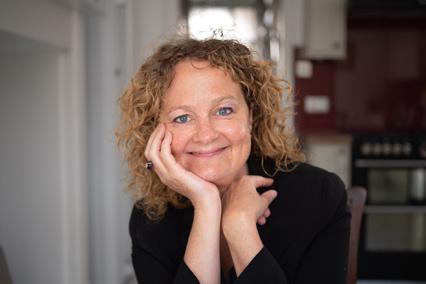

Facebook: https://www.facebook.com/jc.ellinger.writer

Instagram: https://www.instagram.com/jc.ellinger
Email: Juliet.ellinger01@gmail.com

Introducing
Autism Live
stressed? frustrat need advice? Send in your parenting woes, questions, concerns, and tricky situations with your beautiful exceptional children and Kate C. Wilde will respond in her column! ASK KATE! KATE MAKES IT GREAT! S U B M I T Y O U R Q U E S T I O N S T O S U B M I S S I O N S @ E X C E P T I O N A L N E E D S T O D A Y C O M w w w . e x c e p t i o n a l n e e d s t o d a y . c o m
Mini-Workshops Kate C Wilde
Renowned Author & Autism Thought Leader Raun K Kaufman International Speaker & Author D agnosed with Severe Autism as a Child Autism Abracadabra: 5 Magic Questions To Unleash Your Child’s Social Brain Through Play Autism: 5 Things You MUST Do For Language Development Rise Above: Boost Your Child/Adult on the Autism Spectrum’s Mental & Emotional Well Being by Boosting YOURS Autism: Diffuse Inflammatory Statements, Desires, and Decisions with Your Highly Verbal Loved One Autism Parents: 5 Keys to Make Sure Your Love Relationship Thrives Without Making You More Tired LEARN MORE Only $25 With
educate your
thereby allowing information
boundaries. 10 | Exceptional Needs Today | Issue 10 SKILLS FOR LIFE
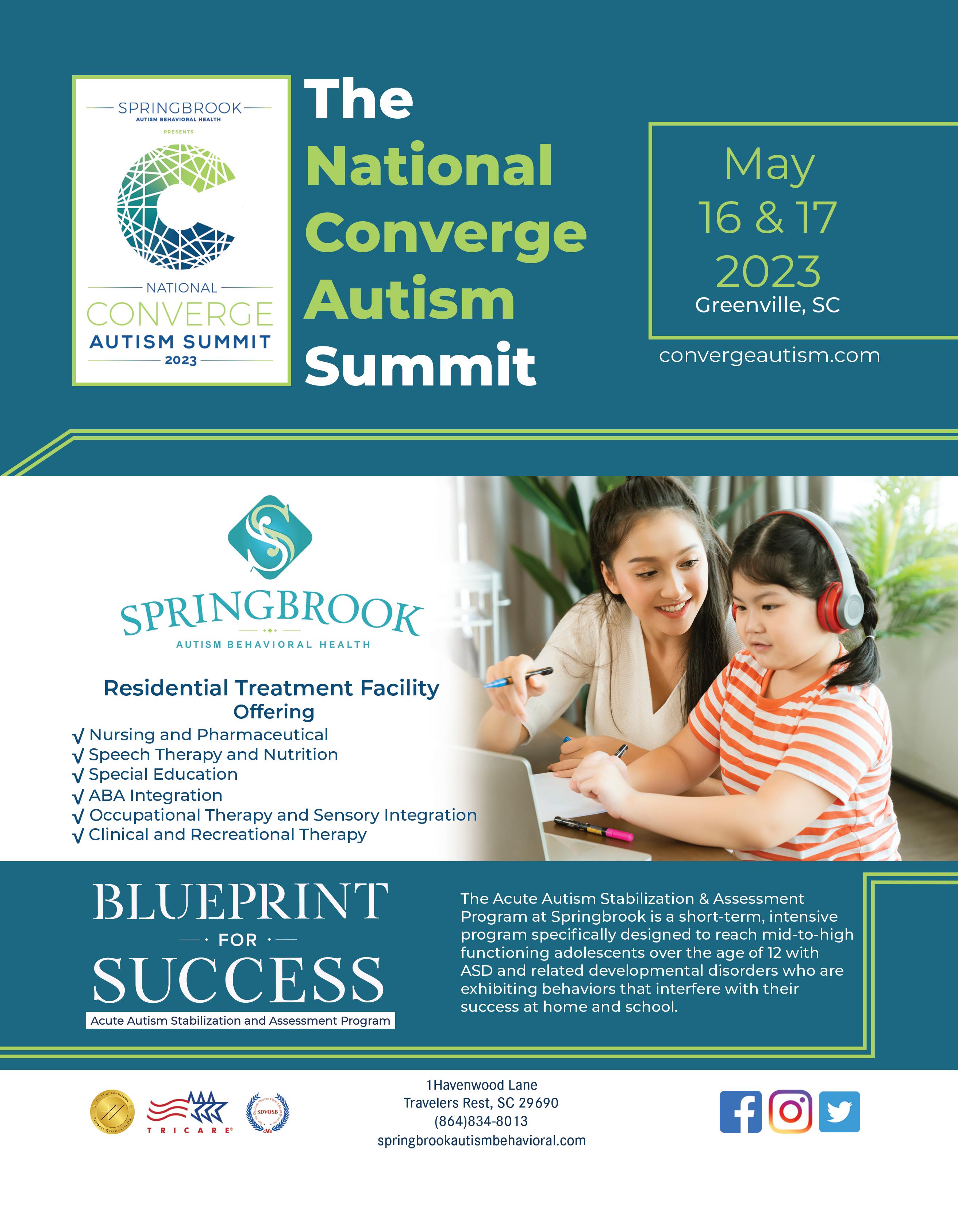
Listen to Our Children;
Get Into Their World
By Richard Schreiber PMP, CSM, CSPO
I AM A PRODUCT OF A LATER GENERATION, AND AS A 63-YEAR-OLD PARENT WITH A 16-YEAR-OLD DAUGHTER WITH ASPERGER’S SYNDROME, I HAVE COME A LONG WAY IN MY PARENTING IN TERMS OF LISTENING. MY PARENTS’ GENERATION WAS ONE OF AUTOCRATIC UPBRINGING. CHILDREN WERE SEEN AND NOT HEARD. THERE WAS NEVER ANY BACKTALK UNLESS YOU WANTED TO CONSIDER SOME UNPLANNED DENTAL WORK. I WOULD GET WHAPPED IN THE MOUTH CONSISTENTLY IF MY RETURN COMMENTS WERE NOT WELCOME BY MY PARENTS.

12 | Exceptional Needs Today | Issue 10 PARENTAL SUPPORT
So, freedom of expression is only something I learned much later in life when I embarked on a journey in school that led me to journalism. Of course, growing up watching the Watergate trials on television in history class in the 11th grade made me much more open to challenging authority, hypocrisy, and the ways of the world if they did not favor my viewpoint.
Fast forward to today, and today’s youths are bombarded
with data, information, and media from a myriad of an gles, so they are opinionated on steroids, and their per spectives—especially that of my daughter, considering her gifts—can be extremely righteous. And boy, they can spot parental hypocrisy a mile away and have no hesitation in calling you on it!
If you’re a parent from my parents’ generation, it would outrage you at the unfiltered challenge of a parent’s posi tion, statement, or, worse, belief. But that is the world we live in today with our kids, especially our special kids. And it places a greater burden on us as parents to make sure our coaching and instruction and teachings to our incredi bly bright, literal, righteous kids on the spectrum pass the litmus test of their intelligence and very black and white belief structures. Now, mind you, it’s kind of refreshing to have a teen who is so righteous they challenge you, the par ent, on where you are missing the mark in that sense!

But as a parent today of one of these incredible, special kids, you need to be on your ‘A’ game when it comes to lis tening. It is no longer a best practice to impart our wisdom, coaching, and mentoring from a place of “You need to ben efit from my experience and wisdom without question!” No, we need to drop a jewel, then wait for it to sink in for our child and be prepared to explain or quantify and reason back to their objection, but patiently.
In the personal development world, we talk about (actually, it was Stephen Covey who came up with it originally) Level Five listening. That is when you listen to the other person with intent and pay attention to their body language—what they are saying and what they are not saying, and how they are saying it—to understand what they mean. Only this way, and by repeating back to them what you have heard from their point of view, will they feel they have been seen, heard, and that what they say matters. I first heard about Level Five listening from an experiential networking, sales, and personal development group I now belong to called Unblinded. It’s a cornerstone of a better communications model.
Before I learned this distinction, I used to have tearful ex changes with my daughter that ended with “You’re not lis tening to me!” on her side. And it was true. I was trying to impart (no, make that extort!) my wisdom as a parent uncu rated, and it was being dissected, analyzed, and spat back at me with challenges I was not even entertaining. You can imagine the friction that was between us. But that state ment, “Daddy, you’re not listening to me!” said through tears once too often got me to pause.
Rewind to about six or seven years ago when I got it like a lightning bolt. I needed to learn how to listen to my daughter—get into her world. Her world then was making YouTube videos with a slew of collectibles she had. She narrated, simulating play movements, and then edited her recordings in a software program called Filmora. That was her world. I watched and studied my daughter as she made video after video, and gradually, she let me in to explain her videos and even observe occasionally. Her godmother, whom I swear can communicate with any species on the
Exceptional Needs Today | Issue 10 | 13 PARENTAL SUPPORT
planet, was someone I modeled. She provided the software and conversation around the execution of my active listen ing.
It’s really all about giving your listening, attention, and your focus fully. Even if only for 20 to 30 minutes a day, do it consistently and observe. We learn far more from obser vation than speaking, but our brains are wired the opposite way! (Don’t you ever shut up?)

Well, it was a brief few years to enjoy my new vantage point. Now my daughter is a teenager, and it’s tougher for Dad to be in her world because it’s now more specifically coded as a female thing. Mom has more of those rights, privileges, and relational understanding. But the power of listening, observation, and giving someone your full attention goes a long way to getting our special kids to open that door and
let us in. Someone’s knocking at the door—somebody’s ringing the bell—open the door and let them in, per Sir Paul McCartney!
Richard Schreiber PMP, CSM, CSPO specializes in helping Fortune 500 companies by providing proven lean agile software or business process re-engineering solutions that solve business challenges and close bottom line leakage. Richard acts as a true liaison between the creative (client) and development operations team, enabling on-time and on-budget software delivery. He looks specifically for those projects that have a social cause. In any engagement, his commitments are mentoring, leading knowledge sharing, and making sure everybody on the project wins.

As an autism advocate, Richard’s deepest passion as the father of an autistic daughter pushed him to found the NYC Autism Community Group in Manhattan to help parents with children on the spectrum navigate their day-to-day challenges. His passion is to bring tech, innovation, and career opportunities to families with autistic kids and adults to better themselves so they can live the lives they deserve. They will be hosting several events in 2022, including the Autism Support and Innovation Summit and our first NYC Autism Tech, Innovation, and Careers Expo. Both are available on Eventbrite.
Richard co-founded the Ubuntu Game (Games 2 Unite, LLC), creating an experiential multi-media board game to teach teens about diversity and inclusion through conversations, role play, and activities. Their goal is to reverse racism, bigotry, bullying, and stereotyping in the world. He welcomes everyone to join them on their journey!
Website: www.ras-consulting.com
It is no longer a best practice to impart our wisdom, coaching, and mentoring from a place of “You need to benefit from my experience and wisdom without question!”
14 | Exceptional Needs Today | Issue 10 PARENTAL SUPPORT
SAFETY GOALS WITH
NICOLE
REDUCING THE RISK OF ABUSE WITH CHILDREN WITH DISABILITY

Possible Signs of Child Abuse for Children With Disabilities
By Nicole Moehring
The United States Department of Justice reports that as many as one out of three girls and one out of five boys will be sexually abused by the time they’re 18; this rate is even higher among children with disabilities. According to one study, children with disabilities are three times more like ly to be abused than their peers without disabilities, while children with intellectual and mental health disabilities have nearly five times the risk of being sexually abused. (Smith & Harrell, 2013)
The most difficult aspect of recognizing the signs and symptoms of abuse is that individuals with developmental disabilities often exhibit physical and/or behavioral traits that coincide with their diagnosis and typical symptoms of abuse. Therefore, it is crucial to recognize any behavior changes, particularly those that would not usually be asso ciated with the personal expression of their diagnosis, as potential abuse indicators.
The symptoms of abuse when a child has a disability will vary depending on their disability, situation, degree, length, and kind of abuse. Also, the signs and symptoms of abuse may be related to something else, so no one should ever automatically assume the child is being abused. How ever, should you feel a child is being abused, please report it. Our parents, caregivers, and guardians are responsible for protecting children.
Possible signs of abuse
Possible signs of abuse often coincide with the age of the child. Younger children or children who are nonverbal are not always able to communicate what happened with words and will show signs through behaviors, which is why it is so important to begin talking to your child at a young age.
Physical indicators
Physical indicators of sexual abuse can include, but are not limited to:
• Bedwetting
• Blood in urine or stool
• Difficulty walking or sitting
• Frequent headaches
• Missing clothes
• Pain, discomfort, inflammation, or itching in the genital area
• Pregnancy
• Sexually transmitted disease
• Unexplained abdominal pain
• Unexplained or unusual bruising
• Urinary tract infections
Behavioral indicators
Not all individuals with disabilities are verbal. Some may communicate by exhibiting changing and challenging be haviors that can include, but are not limited to:
• Advanced sexual knowledge beyond their years
• Aggressiveness
• Becoming depressed, experiencing increased anx iety, or withdrawing from things they used to par ticipate in
• Change in personality
• Eating disorders (overeating or not eating at all)
• Exhibiting signs of suicidal thoughts
• Hair pulling
• Head banging
• Hurting oneself or others
• Inability to concentrate
• Increase in sexualized behavior—the child may also masturbate excessively
Exceptional Needs Today | Issue 10 | 15
Lack of self-esteem/self-worth/self-confidence
• Nail biting
• Nightmares
Not wanting to be around a specific person
Not wanting to participate in school activities/not wanting to go to school
• Onset of compulsiveness
• Resisting touch
• The perpetrator might be buying the child special gifts or paying extra attention to them (also called the grooming stage)
• Sleep issues (afraid to go to sleep or sleeping all the time)
• Using drugs, drinking alcohol, smoking
• Wanting to spend an excessive amount of time with a specific person
It is important to note that many times, physical or behav ioral changes can be indicative of other medical problems and DO NOT alone mean the child was sexually or physically abused.
Works Cited Smith, N., & Harrell, S., (2013). Sexual Abuse of Children with Disabilities: A National Snapshot. Vera Institute of Justice. https://www.vera.org/publications/sexual-abuse-of-chil dren-with-disabilities-a-national-snapshot

•
•
•
16 | Exceptional Needs Today | Issue 10 SAFETY STRATEGIES
Nicole Moehring’s daughter and son, who has Fragile X Syndrome and autism, were both victims of sexual abuse. As a mother suffering through this unbelievable nightmare, Nicole witnessed extreme differences in the justice system of how her daughter was believed and treated well when her son was not. She also quickly recognized the distinct differences in recovery, trying to find support, and resources. Nicole and her daughter Maci founded Voices of Change 2018 (VOC18), a nonprofit organization, to begin making much needed change for children with disabilities and their families.
VOC18 is a national organization piloting their groundbreaking programs in Ohio. VOC18 is in the process of developing preventative education programs for children with disabilities while empowering parents and guardians. By sharing their lived experiences and through collaborations with other individuals, mental health professionals, law enforcement, and organizations, they are building a foundation of advocacy, abuse awareness, resources, and supports for children with disabilities.

Website: www.voicesofchange2018.org
Facebook: https://www.facebook.com/voicesofchange2018/ LinkedIn: https://www.linkedin.com/company/voices-of-change-2018/ Pinterest: https://www.pinterest.com/voicesofchange2018/_created/ Email: info@voicesofchange2018.com
MindScent® Smell. Discover. Connect.

AN INNOVATIVE MULTI-SENSORY TOOL FOR SLPS, EDUCATORS & FAMILIES
The possibilities for language use are endless! It allows us to use the sense of smell, which is something I've never been able to use in speech therapy prior. We can target things such as using a communication device or generating higher level writing activities which has been an exciting way to meet goals!
Heather Palazzo, Speech Pathologist,
CCC SLP, New Orleans, LA
The Scent Guru Group, LLC www.thescentgurugroup.com
MS
Essential Smells© include: Apple, Bread, Campfire, Chocolate, Cinnamon, Coffee, Donuts, Grass, Lavender, Maple Syrup, Mint, Orange, Pine, Pineapple, Popcorn, Rose, Rosemary, Strawberry, Vanilla and Watermelon. Each 0.5ml. roller ball will last approximately 1000 swipes MADE IN USA Exceptional Needs Today | Issue 10 | 17 SAFETY STRATEGIES
ResistanceRenouncing as an Autism Parent
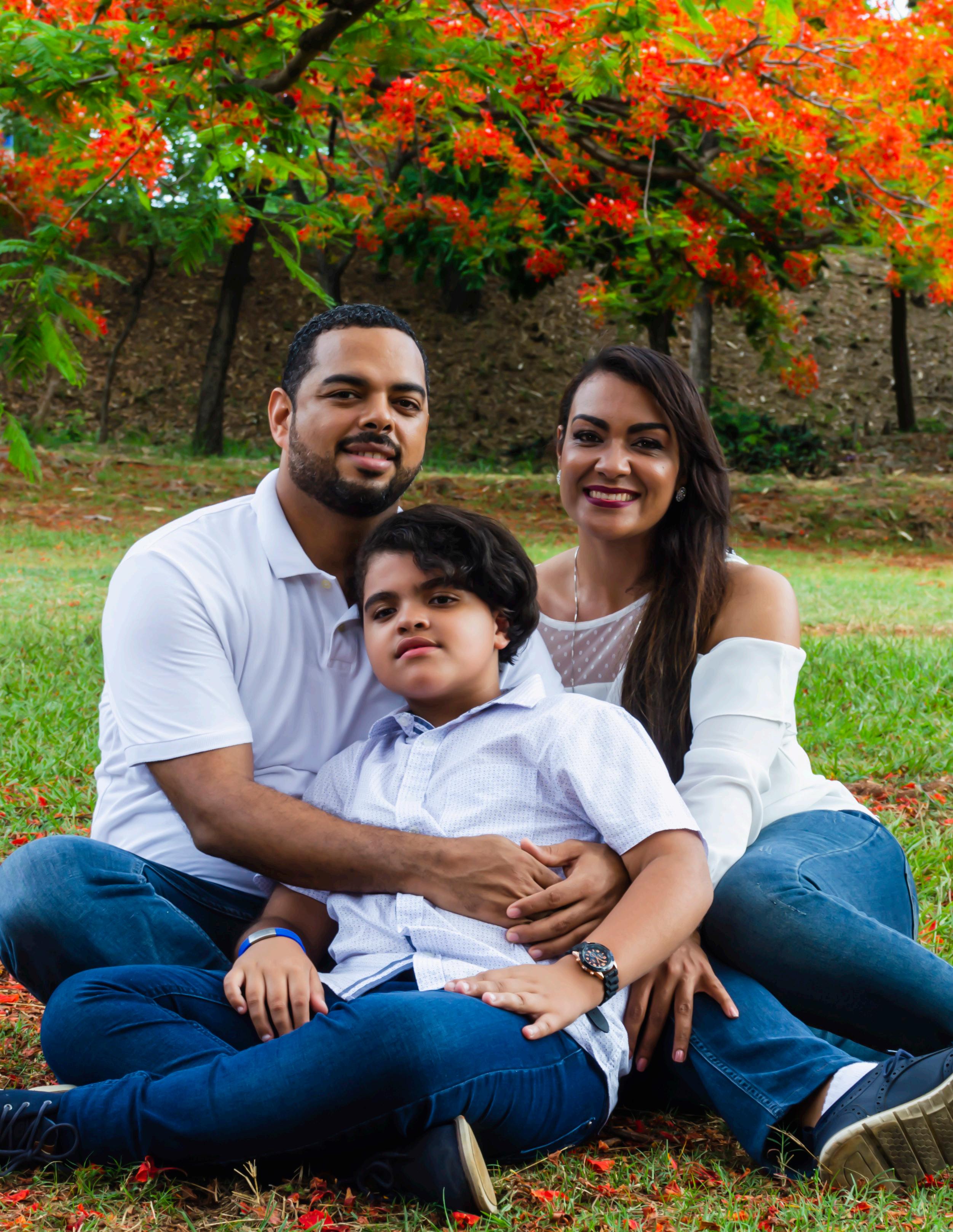 By Andrea Pollack, MSEd
By Andrea Pollack, MSEd
18 | Exceptional Needs Today | Issue 10 EMOTIONAL HEALTH
THE AUTISM COMMUNITY IS LOUD AND PASSIONATE AND DIVIDED ON SO MANY TOPICS. ONE TOPIC THAT OFTEN DRAWS OUT SHARP, ANGRY WORDS IS THE STATEMENT BY WELL-MEANING PARENTS WHO DECLARE AUTISM A GIFT. FOR THOSE PARENTS WHO LOVE THEIR CHILDREN DEEPLY BUT HAVE NOT SLEPT IN YEARS, WHO ARE REGULARLY REACTING TO STRUGGLES AND WORRY ENDLESSLY, WHO FEEL THEY ARE SOMEHOW FAILING THEIR CHILDREN DESPITE FIERCE LOVE AND FOCUSED EFFORT, IT IS SOMETIMES DIFFICULT TO SEE THE “GIFT.” I GET IT. I WAS THAT PARENT. “SURE,” I WOULD THINK, “EASY FOR YOU TO SAY. YOUR CHILD SLEEPS MORE THAN THREE HOURS A NIGHT, EATS MORE THAN THREE FOODS, AND DOESN’T BREAK THINGS ALL DAY.”
But what caused me to pause and reevaluate was that there were parents living in similar circum stances to mine who could see the gift. Were they lying? Were they medicated? How can I experi ence what they’re experiencing? The answer that emerged after years of soul searching and later working with other parents was that while I was fighting against and resisting every incident every day, those parents were bet ter able to accept and face whatever arose.
I know this sounds a bit simplistic, but it represents a huge shift in perspective, and I want to share some tips for achiev ing this shift. First, let’s look at what constitutes resistance. If your child refuses to brush their teeth or go to bed and your go-to reaction is “Why does this have to happen every night,” or “I can’t take this one more day,” or stating with impatience, “Just go to bed or else,” that’s resistance. Re sistance is fighting emotionally with your circumstances. Resistance is amping up worry every day. To be clear, this is not a statement against your child. At the core of my resis tance was the frustration I felt in myself, feeling that I was somehow inadequate for bringing out the best in my son. Is it natural to have such feelings? Absolutely. Are you enti tled to have such feelings? Absolutely, and you should not avoid them. Feel all your emotions. But what you do next can make all the difference because staying stuck in resis tance against your reality is exhausting.
So, what were these parents able to do differently that kept them more positive? They could move through situations without compounding the events with extra disempow ering thoughts. Let’s unpack that. We tend to think that events or circumstances that arise are simply objective oc

currences. Actually, we tend to make meaning from events, and the meanings we make impact our experience. I will share a personal example.
Feeling like I was failing at the office (that’s another story), I decided to entertain some colleagues, including my boss and former boss (probably mistake number one). When they arrived, I brought my then young children down to say hello. My daughter was holding a toy (mistake number two), and my son suddenly decided he HAD to have it. My sweet, gentle, autistic son went after my daughter like a ti ger in the savannah! It got ugly fast—in front of all those people. There was biting involved and lots of screaming.
Exceptional Needs Today | Issue 10 | 19 EMOTIONAL HEALTH
My brain froze. I had no idea what to say or do, and I was drowning in shame (mistake number three). I spent the rest of the evening feeling miserable.
When the evening was over, I did what any self-respecting parent would do. I decided I couldn’t possibly show up for work on Monday and resolved never to invite anyone into my home again. I was confident the “incident” was public proof I was failing at home as well as at work. That was the meaning I gave to the events.
Eventually, after wallowing in self-pity for a while, I decid ed to “write” a new story about the same events. What if this public, violent clash was the best thing to have hap pened? What if it was perfect for my work colleagues to get a glimpse of my reality? What if, instead of thinking I was a failure, they thought I handled it with grace (since we were all alive and relatively unscathed in the end)? What if I could learn not to measure my worth as a mother based on what others thought (which I was only making up anyway)? Instead of looking only at my failures, I decided to focus on triumphs. The new meaning I would give to that evening’s events was that I was heroically managing a career and par enthood (and there was plenty of proof if I chose to see it). I had two clean, healthy toddlers who happened to have a throw-down at that moment, but my guests would likely

not think about it again five minutes after it happened. Had I chosen that meaning initially, I could have saved much grief.
The point of all this is to demonstrate that while we rare ly have control over the circumstances we face, we have a choice about the meaning we take from them. You might think, “I have much bigger issues to deal with than a public biting incident,” and I get that. I did too. I use this story as an example of how we sometimes compound our pain with the meanings we give to events. Again, this is not about avoiding your feelings. It is a tool to help you get unstuck when you take yourself down a negative-thought spiral. It is about finding a decision point where you can choose to stop your brain from focusing on the pessimistic meanings and look for glimmers of light.
Perhaps it helps to think about it this way. Our children make mistakes every day, and we ask them to get back up, to keep learning and trying to do what they couldn’t do yes terday. We help them focus on what they can do and cele brate their progress. We remind them of their wins if they feel defeated and focused only on the difficulties. In effect, we ask them not to take a disempowering meaning from “failures” and instead feel empowered by the lessons they learned that help them move forward. We can follow the same excellent advice. We don’t all need to see autism as a gift, but learning how to find life’s gifts within challeng ing circumstances is how we can stop resisting what is and move more gracefully through our days.
After practicing law for 19 years, Andrea Pollack left that career to homeschool her autistic son when she was unable to find a school in which he could thrive. After nearly eight years of homeschooling, her son returned to school. Instead of returning to a law career, Andrea wanted to share her knowledge and experience with other parents. She pursued further education and earned a master’s degree in Education (MSEd) to maximize her impact in supporting parents. She started Autism Parent Solutions to educate, support, and empower parents with parent coaching to reclaim the joy of parenting as they help their autistic children reach their highest potential.
Website: https://autismparentsolutions.com/ Email: andrea@autismparentsolutions.com

We don’t all need to see autism as a gift, but learning how to find life’s gifts within challenging circumstances is how we can stop resisting what is and move more gracefully through our days.
20 | Exceptional Needs Today | Issue 10 EMOTIONAL HEALTH

ValiantFutures.com off ice@valiantfutures.com 760-854-4003 • Who will care for my child when I’m gone? • How do we access and keep public benefits? • How much money will it take to support our child? WE STRIVE TO MAKE SMART FINANCIAL PLANNING ACCESSIBLE TO ALL FAMILIES.
The Value of EarlyIntervention
 By Karen Kaplan for Both Parent and Child
By Karen Kaplan for Both Parent and Child
WHEN PARENTS FIRST HEAR THEIR CHILD HAS NOT BEEN BORN AS THEY EXPECTED, THEY MAY BE SAD, FEEL A HUGE LOSS, OR FEEL GUILTY, BUT MOST OF ALL, THEY FIND THEMSELVES IN A SITUATION WITHOUT A GUIDEBOOK.
22 | Exceptional Needs Today | Issue 10 PARENTAL SUPPORT
They
may feel isolated and anxious, but almost certainly, they are overwhelmed. New parents are faced with the unknown: they cannot yet comprehend how to help their children develop into their true potential when the path to do so will be much different from anticipated.
Ways professionals can help support families
As professionals, we can encourage families to take care of themselves, which includes:
• Getting enough sleep so they can attend to their child’s needs
• Consuming appropriate nutrition so they can problem solve well with a healthy mind
• Reaching out to others for support; understanding they need to ask for help
• Letting go of any guilt they may have surrounding their child’s diagnosis
If necessary, help overwhelmed families tackle each need by breaking things down. Let them take baby steps on the path forward, but don’t let them stay stuck in place.
When parents and professionals understand the learning strengths and challenges of the children in their care, they can identify supports and implement them to help them reach their true potential. Let’s see each child become capable. Know that each child is unique, and remember, it is OK to learn differently. Let’s help families!
Once we understand the strengths and challenges of the child with special needs, we can begin creating and implementing positive strategies for their growth and development in order of necessity.
• Support the nutritional well-being of the child

• Create an environment that supports their sleep
• The child’s pediatrician/neurologist needs to evaluate and identify their strengths and differences (diagnosis, seizures)
• The physical therapist needs to evaluate the child’s foundational motor strengths and needs
• The occupational therapist needs to evaluate the fine motor, motor planning, and sensory challenges of the child
• The speech therapist needs to evaluate any communi cation challenges
• The child’s audiologist needs to identify hearing chal lenges
• A vision specialist needs to identify any visual challeng es the child may have
Ways families can encourage a child’s development
When it comes to communication, a baby learns by watching
Exceptional Needs Today | Issue 10 | 23 PARENTAL SUPPORT
the people around them. So even if a baby doesn’t have the vocabulary to converse with you, it’s very helpful for their communication development if you talk to them!
• Just because you’ve been told your child is differ ent and may not understand your speech, never stop talking to them, pointing things out in their environ ment, playing with them, and reading to them
• Be responsive to evWery attempt the child makes to communicate; imitate all sounds they make
• When they look at you, say, “I see you!” Then, look back, wink, open and shut your eyes, and play peek-aboo with your hands
• Sing to the child, or help them clap to the music
• When they reach out, reach back. Teach them to wave bye-bye
• Read picture books to the child. Teach them to touch pages or point to objects when you name them
• Take out photos of family and friends, then call each one aloud. Have the child identify the individuals by pointing to them
• Have the child observe you doing daily activities (such as cooking, cleaning, dressing, and washing) and name your actions and activities as you do them
• When you dress them, tell the child you are putting on their shirt, pants, socks, shoes, etc. (label each item); teach them the phrases “arms up,” “arms down,” “put in,” and “take off,” as you help them dress—you are teaching verbs
• Look out windows with them and name what you see
• Take walks with the child and point to trees, birds, wa ter, rice, motorbikes, etc., while you name them
• Take the child to celebrations and events and name objects, people, and actions while there
• Give them a chance to communicate before giving them everything. For instance, when they look at something, say, “Oh, I see you looking at the toy. Do you like that?” or “Oh, do you want that?” Then name or give the item to your child
• Offer the child a choice of two things and encourage them to point or look at the one they want before giv ing it
Some children with special needs may be unable to talk
• If they have good use of their fingers and hands, teach the kid to sign, even if they can hear
• Teach them to lead you to what they want
• If the child can point or give, provide pictures of things they want and have them point or give you the picture of what they want
• If they can draw or write, have them write what they want
• If they can use a phone or computer, have them use as
sistive technology to communicate (See speech thera pist for help)
Children generally learn and develop through play, and those with special needs are no different
• Follow the child’s lead. Whatever toy they seem inter ested in, join with that and then expand
• Teach turn-taking by rolling a ball back and forth
• Play pretend with the child (using a doll, pots, pans, stuffed animals, a toy truck, trains, etc.)
• Engage in water-play outside with pots and pans and pouring and stirring
• Encourage bath time, play with toys, and imaginary scenarios
We must understand the child’s needs for proper cognitive development and make sure we take steps to help their mental growth. Memory and word recognition are the most basic functions that need to be developed. Sing-alongs are great for this. Perception and sound identification are other components. Point out dogs barking, birds chirping, cars and trucks starting, motorbike sounds, instrumental sounds, rain, thunder, lightning, and more.
• Help the kid learn the alphabet. Is there an alphabet song? Use toys that teach the alphabet; read/look at books with big letters—say their names—practice the letter sounds
Children have the best outcomes when we identify strengths and challenges and intervene early. When specialists work side by side with the family, stress, anxiety, and fears are lessened. When we expose neurotypical and abled children to children with learning differences, we develop a community of care and acceptance.
24 | Exceptional Needs Today | Issue 10 PARENTAL SUPPORT
• Help the child understand numbers; count with them; how many fingers and toes do they have? How many people are at the meal table? Count when you put things in a basket and when you go to the market; count how many scooters are parked, and count toys on the shelf and forks or spoons in the drawer
• Play matching games. Match by color, shape, and category (food, clothing, toys, family)
• Play memory games; hide things and find them; turn over cards and find matches
• Play math games: I have two apples and two pears, so how many fruits do I have?
• Read to them and ask who, what, where, and why questions
• Have them follow directions to see if they understand your words
• Let them solve different problems as each birthday comes, such as getting their own coat, dressing, finding things, putting toys away, preparing a snack, cleaning, washing, helping shop, helping cook
• Have them play with other children to learn to model what they see
Children with developmental delays are different from others in that they require more attention and support to meet their developmental milestones. Language and communication skills, social and emotional skills, cognition, adaptive daily living skills, and motor skills need to be supported early. Children with special needs need to be included with typical peers.


Child and parent-focused programs work best. First, parents need to learn the correct medical interventions. And parents need to work with therapists from the very beginning. Children have the best outcomes when we identify strengths and challenges and intervene early. When specialists work side by side with the family, stress, anxiety, and fears are lessened. When we expose neurotypical and abled children to children with learning differences, we develop a community of care and acceptance. The child with learning differences learns from engaging in the same life activities in which their neurotypical peers engage.

It’s never too early. So build understanding, acceptance, support, and inclusion in the early years.
Karen Kaplan is a native San Franciscan. She completed her bachelor’s and master’s degrees at Arizona State University, Tempe, Arizona, in Speech Pathology and Audiology. She minored in Special Education and obtained her Speech Therapist and Special Education credentials in California.

Karen worked as a speech therapist for both public schools and private schools for 20 years before opening her own residential and education program for students with autism spectrum disorders. She worked in credential programs at Sacramento State University as well as UC Davis and spent 20 additional years directing private schools for those with autism and similar learning challenges. Karan founded a small nonprofit, Offerings, which travels globally helping other cultures understand those with developmental challenges. For seven years, she founded and facilitated an autism lecture series and resource fair in Northern California. Karen still facilitates an Autism Awesomeness event yearly, showcasing the strengths and talents of those who live on the spectrum. She is currently consulting, helping families, schools, and centers for children, teens, and adults. She has published articles to help bring ideas and strategies to families and professionals, providing hope. Karen authored Reach Me Teach Me in the early 70s and went on to publish her second book, On the Yellow Brick Road Finding Hope for Autism, in 2017. Her third book, Typing to Heaven and Back, is not about autism but about having important conversations with those we love. Be sure to connect with Karen—she is always ready to listen and think of the possibilities.
Website: www.karenkaplanasd.com
ALL CHILDREN ARE SPECIAL!
F O R D E T A I L S , S E E O U R U P C O M I N G E V E N T S P A G E V i r t u a l w o r k s h o p s f o r t h o s e r a i s i n g o r w o r k i n g w i t h c h i l d r e n e x p e r i e n c i n g c h a l l e n g i n g b e h a v i o r s ! https://4children.ca/ P r o v i d i n g r e s o u r c e s t o s u p p o r t A L L c h i l d r e n Exceptional Needs Today | Issue 10 | 25 PARENTAL SUPPORT
Funding Your Child’s Lifetime Support Needs
By Ryan F. Platt, MBA, ChFC, ChSNC, CFBS

Jerry asks: “I have a Special Needs Trust for my son, and at this point, it is not funded. I was thinking about funding it with life insurance when I die. Is this a good idea?”
Funding your son’s Special Needs Trust is quite an import ant task. I know that statement sounds obvious; however, most families do not know the amount of money their child will need for their lifetime of support in order to ensure the Special Needs Trust is sufficiently funded. Most families also do not know what type of accounts are more effective to leave in a Special Needs Trust, especially as it relates to taxation. Life insurance is certainly one type of financial ve hicle that can be used and may just be the most effective.
• Life insurance offers tax advantages (as of 2022) be cause when you die, it will transfer into your son’s Special Needs Trust free of income or capital gains taxation. Please don’t overlook this advantage be cause, when compared to other types of accounts, this one fact can potentially save you tens or even hundreds of thousands of lost dollars in the form of taxes that do not have to be paid.
• Life insurance provides immediate liquidity to fund your son’s trust. This means the trustees do not have to wait until your estate is settled and your assets dispersed in order to fund the trust. There are many

26 | Exceptional Needs Today | Issue 10
families that have used real estate as their main in vestment vehicle, which is fine. However, real estate must be sold in order to fund the trust. The process of selling real estate can take time, money, and ener gy, and at the time of the owner’s death, the proper ty value may be down due to market conditions. The question with illiquid assets like real estate or a fam ily business is, “Will your child’s life stop in order to wait for the trust to be funded?”
• Certain types of life insurance also are not dependent on the stock market for their value. It is best to use these types, so fluctuations in the market do not im pact the amount of money your son’s Special Needs Trust will receive. When you are considering life in surance, it is critical to understand the various types available and which type will best fit the purpose of funding your son’s Special Needs Trust.
• Term life insurance provides a death benefit for a spe cific period with a locked-in price for that period. For instance, an individual can purchase 5, 10, 15, 20, and even 30-year term life insurance policies in which the price will stay constant for the period you select, but once that period expires, it is common for your cost of the insurance will increase substantially, which means that if you live long enough, you will most like ly not be able to afford the death benefit. Term life insurance is great for a specific purpose over a specif ic time period, but when you are trying to fund your son’s Special Needs Trust, regardless of when you die, you will most likely want to entertain a permanent life insurance policy.

• Permanent life insurance means the life insurance will continue for your entire life. All permanent life in surance policies are not created equal. The two main types of permanent life insurance are Universal and Whole life.
Universal life insurance has been commonly re ferred to as Flexible Adjustable Life insurance be cause it is designed so you have flexibility in terms
of your payments, year to year. The reason for this is that the internal pricing of the insurance is based on your current age, meaning the younger you are, the less costly it is, but the older you are, the more costly your payments are. It is important that if you decide to use a Universal Life Policy to fund your son’s Special Needs Trust, you overfund (pay more than the insurance company requires) the policy or ensure it has a Guarantee. I have seen too many Universal Life policies that were not funded prop erly, and therefore, the death benefit vanished [be fore the insured died], leaving the Special Needs Trust without funds.
Whole life insurance has always been considered more stringent than Universal Life. It is typically not as flexible; however, in recent years, it has become more flexible in terms of its funding and design. Whole life insurance will usually have a higher con tribution level than Universal Life insurance, but its internal insurance costs are more stable and do not rise as an existing policyholder ages.
• Survivorship, or Second to Die, is a joint policy that typ ically covers a married pair and pays a death benefit at the second death in order to fund a Special Needs Trust. This type of insurance is available in both Universal and Whole Life cost chassis.
Having a plan to fund your son’s Special Needs Trust is vital. Please consult an experienced special needs planner to en sure you make the most educated decision for your family’s situation.
Contact a financial advisor who specializes in serving families with special needs for more information on how to prepare for the future. The team at A Special Needs Plan is driven by their purpose of leading families to independence through an ongoing, multi-generational plan. We are passionate about families confidently moving forward.
Ryan F. Platt, MBA, ChFC, ChSNC, CFBS, is a registered representative of and offers securities, investment advisory, and financial planning through MML Investors Services, LLC, Member SIPC. Securities and investment advisory services offered through qualified registered representatives of MML Investors Services, LLC, Member SIPC. A Special Needs Plan is not a subsidiary or affiliate of MML Investors Services, LLC or its affiliated companies. This article is not a recommendation or endorsement of any products.
Website: http://www.aspecialneedsplan.com
Phone: 704-326-7910
Location: 101 N. McDowell Street, Suite 120 Charlotte, NC 28204
Exceptional Needs Today | Issue 10 | 27 FINANCIAL FOCUS
Embracing Neurodiversity

FOR OVER 20 YEARS
Special discount for Exceptional Needs Today magazine! Use the coupon code NEEDS30 for shopping on the
30
and FREE SHIPPING
SOCIAL LEARNING PROFILE is an excellent source for families, paraprofessionals, teachers, social workers, behavioral specialists, psychologists, advocates, day programs, and group home personnel

IN SEARCH OF AUTISM AMONGST THE HIMBA

Dr. Wärnlöf provides a real contribution to the study of autism and the Namibia re gion's ethnography.
THE INTEROCEPTIVE
MIND offers a wealth of information on interception and microbiome, with easy-to-follow activities for mindfulness, healthy and natural recipes.

GOLDILOCKS AND THE THREE BEARS

Understanding Autism Spectrum Disorder is a retelling of a beloved classic
books!
AAPC PUBLISHING
For over two decades, AAPC Publishing has been committed to helping people with autism spectrum disorder lead fulfilling and successful lives We offer a variety of resources to support individuals, families, and professionals Our goal is to educate, empower, and inspire others to reach their unlimited potential.
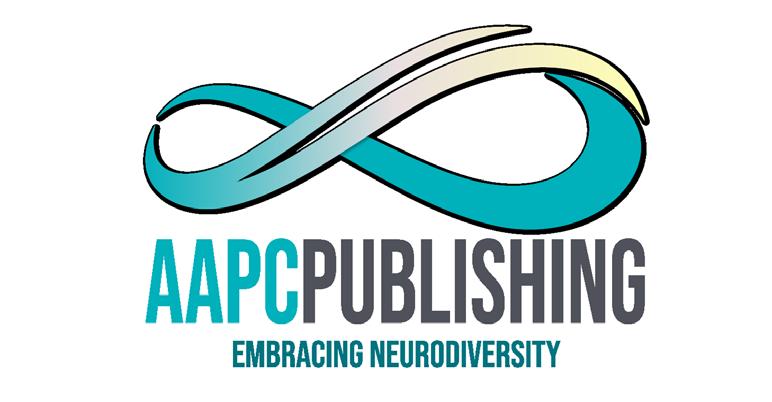
Our resources have always focused on autism spectrum disorder, but we proudly announce that we have branched out to include other neurological differences.

These include, but are not limited to, attention deficit hyperactivity disorder (ADHD), anxiety disorders, Tourette syndrome, and sensory processing differences
SOCIAL DETECTIVE ACADEMY

Learn how to become a social detective and navigate the social mysteries of your life
HIGH SCHOOL HACKS 'What people are too polite to tell you, but you need to know!
BROCCOLI BOOT CAMP will help you with the strategies to shape eating behavior Parents can choose the intervention which works best for their family s circumstances

HIGH SCHOOL HACKS
THE RETURN! is the second in the High School Hacks series, and just like the first, it is a handbook with a sense of humor A MUST READ for high schoolers


28 | Exceptional Needs Today | Issue 10 e-Catalog
AAPC website d j h
di
for all
Have you seen our new catalog?
@aapcpublishing www.aapcautismbooks.com @aapcpublishing
Collaboration Among Parents, Teachers, and ABA Therapists Improves Outcomes for Special Education
 By Brandon Clark, PsyD, BCBA
By Brandon Clark, PsyD, BCBA
BY NOW, YOUR CHILD HAS SETTLED INTO THE NEW ROUTINES OF THE SCHOOL YEAR, AND YOU CAN FOCUS ON CREATING A PLAN TO ENSURE THEIR SUCCESS IN THE CLASSROOM. BUILDING A POSITIVE RELATIONSHIP WITH YOUR CHILD’S TEACHERS AND OTHER MEMBERS OF THEIR CARE TEAM IS VITAL TO THEIR SUCCESS. MAINTAINING THOSE RELATIONSHIPS AND KEEPING EVERYONE IN THEIR OWN “LANE” WILL ENSURE EFFECTIVE COLLABORATION. AFTER ALL, EVERYONE ON THE TEAM IS WORKING TOWARD THE SAME GOAL— TO HAVE A HAPPY, HEALTHY, AND PRODUCTIVE SCHOOL YEAR.
Exceptional Needs Today | Issue 10 | 29 EXCEPTIONAL EDUCATION
Critical issues
The first and often most challenging step in helping your child or your student succeed is to identify any areas of weakness and ask for help. Whether you are a parent, teacher, or part of a broader care team, your concerns are important.
Below are some “red flags” that might mean your child needs additional support:

• A child is only making progress with one person or only during a specific part of the day
• A child is being blamed for lack of progress (i.e., “He just doesn’t listen!”)
• A child is demonstrating reduced self-esteem and loses enjoyment in learning
• A child shows an increase in problem behaviors and/or an increase in intensity or duration of pun ishment
• Professionals involved in the child’s care must be repeatedly trained on a particular intervention
Problems often arise due to environmental conditions, such as crowded classrooms, lack of resources, short staffing, or lack of time to implement behavioral plans due to competing responsibilities in the classroom. Teachers are so overwhelmed with day-to-day classroom management, lesson planning, and state testing require ments they may lack the time or ability to focus on indi vidual behavior plans, feeling conflicted with what their job expectations should entail. For example, “I didn’t sign up for this” or “It’s not my job” may be arguments used against including specialized accommodations.
Issues within the school system, such as conflict among teachers and administrators, can negatively impact a child’s willingness to succeed, particularly when school cultures do not endorse special needs programs or lack administrative support. In a Journal of Positive Behavior Intervention study of 25 teachers, school administrators, parents that serve as active participants on students’ teams, and other external and internal facilitators, 84% of teachers expressed conflicting expectations about students’ behavior outcomes. The study showed partic ipants find many school personnel practices for Positive Behavior Interventions and Supports (IPBS) to be unfair to other students. (Bambara et al., 2009) According to the study, a lack of support from building principals also creates hurdles that make it challenging for IPBS teams
30 | Exceptional Needs Today | Issue 10 EXCEPTIONAL EDUCATION
to succeed. The study showed that teachers and active partic ipants feel more confident in implementing IPBS plans when they have support and encouragement from the system admin istration.
How to improve outcomes
Everyone on a child’s team has the same end goal—to ensure the child succeeds to the best of their ability. Working as a team helps create momentum and support toward a positive out come. Below are some tips for working with your child’s sup port team to improve a child’s outcome:
• Establish a supportive culture
• Seek out administrative leadership and support
• Modify interventions to simplify the process
• Revisit training procedures and expectations
• Attend to structure and use of time

• Provide ongoing support for professional development


• Facilitate family and student involvement
Collaboration and cooperation are crucial for everyone on the team. Each stakeholder is a valuable person on the child’s team and brings a unique perspective and set of skills to contribute to the student’s success. An important component includes ex plaining the significance of each task to the parent or teacher. In reality, everyone works better when they know the answer to why something is being done. This helps team members accept constructive criticism and feedback throughout the process, which then builds a better relationship within the team.
Giving team members freedom to implement new interven tions for the child is also essential for a positive outcome. When given the opportunity, parents and teachers enjoy the freedom to implement interventions that suit their personalities and leadership style. Although an intervention might work well for one student, that does not mean it will be the best intervention for another. Lastly, providing ongoing support helps to reduce burnout. All members of a child’s team are important in differ ent ways. Individuals dealing with burnout are less likely to use critical thinking skills or take on new responsibilities.
References
Bambara, L. M., Nonnemacher, S., & Kern, L. (2009). Perceived Barriers and Enablers to Implementing Individualized Positive Behavior Interventions and Supports in School Settings. Journal of Positive Behavior Interventions, 11(3), 161-176. https://doi: 10.1177/1098300712437219
Brandon Clark, PsyD, BCBA, is a BoardCertified Behavior Analyst (BCBA) at Springbrook Autism Behavioral Health in Travelers Rest, South Carolina. He is completing his doctorate degree in Psychology. Brandon began his career in the field of Applied Behavior Analysis in 2010. Since then, he has worked in treatment schools, private settings, crisis intervention settings, day program facilities, and has owned a private practice for several years. Brandon is the author of the book, The Misfits; Told by a Behavior Analyst, detailing a collection of experiences from the treatment school where he first started. Currently, he is a Human Rights Committee member, Ethics Chair for South Carolina Applied Behavior Analysis (SCABA), and serves as a board member for Lowcountry Autism Foundation.

Springbrook Autism Behavioral Health uses a number of proven, evidence-based autism therapies to address problem behaviors and build life skills. Contact the ABA Program at Springbrook to learn more.

Exceptional Needs Today | Issue 10 | 31 EXCEPTIONAL NEEDS TODAY Working together to promote awareness, acceptance, and inclusiveness for all Exceptional Needs Today WWW EXCEPTIONALNEEDSTODAY COM EXCEPTIONAL EDUCATION
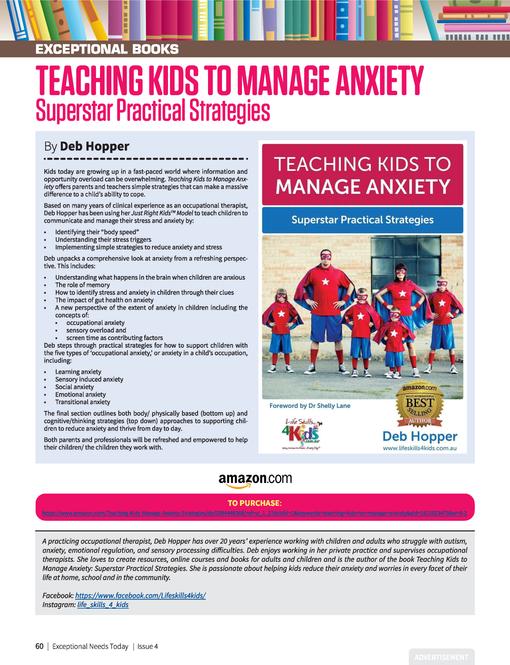

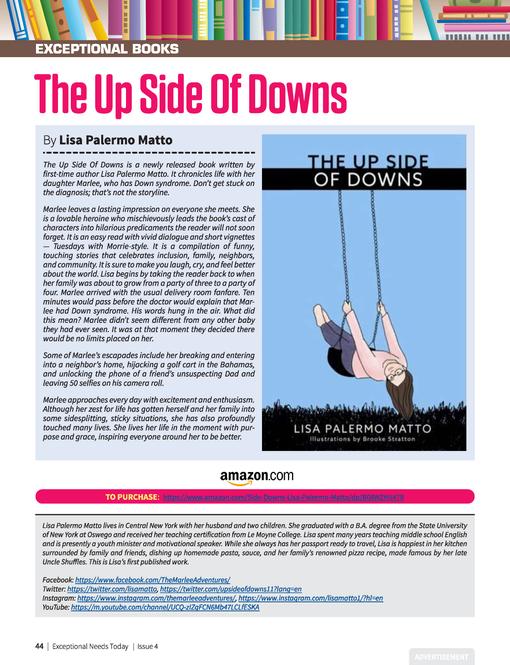
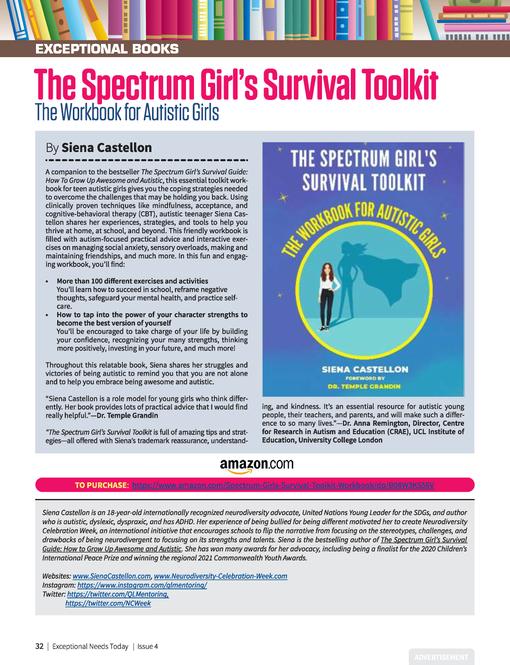



MEDIA KIT advertising@exceptionalneedstoday.com exceptionalneedstoday.com EXCEPTIONAL NEEDS TODAY H a v e y o u p u b l i s h e d a n E X C E P T I O N A L B O O K ? Exceptional Needs Today Let's tell everyone Ask us about a discounted advertorial
Neurodiverse Recommendations for Launching Into Young Adulthood, College, and Beyond
 By Patrick LaCount, PhD
By Patrick LaCount, PhD
LITTLE IS OUT THERE TO HELP NEURODIVERSE (ND) FAMILIES HOPING TO IMPROVE THEIR TEENS’ TRANSITION INTO YOUNG ADULTHOOD. THIS IS CONCERNING SINCE ADJUSTMENT DURING THIS CRITICAL PHASE OF DEVELOPMENT CAN HAVE LASTING RAMIFICATIONS FOR OUTCOMES IN LATER ADULTHOOD. THIS IS WHY I WROTE AN ARTICLE ON THIS TOPIC PUBLISHED IN THE JOURNAL EVIDENCE-BASED PRACTICE IN CHILD AND ADOLESCENT MENTAL HEALTH. WHILE MY PAPER WAS ORIGINALLY WRITTEN FOR THOSE WITH ADHD, I’VE FOUND THAT MUCH OF THE FINDINGS AND RECOMMENDATIONS FOR IMPROVING THE TRANSITION TO YOUNG ADULTHOOD ARE RELEVANT TO THE BROADER ND COMMUNITY.
Exceptional Needs Today | Issue 10 | 33 SKILLS FOR LIFE
There
are three key considerations to improve your teens’ successful transition into young adulthood: (1) engagement in treatment and support, (2) time man agement, organization, and planning skills (TOPS), and (3) health behaviors.
1. Engagement in treatment and supports
As teens with neurotypical disorders transition into young adulthood, there is a steep decrease in their en gagement with supports (e.g., therapy, academic ac commodations/services, pharmacological treatments).
There are several possible reasons behind this drop related to the transitionary period—a simultaneous in crease in one’s demands to self-regulate (e.g., keeping track of a schedule, managing their own money) and a reduction in environmental supports that come with
being a teenager (e.g., regular class schedule, parental oversight, living at home, lack of taxes). Therefore, it is essential to do some anticipatory planning, such as helping them navigate their transition into the adult mental health system. This can include having them establish care with a primary care physician, find an adult-oriented mental health provider, link with institu tional supports (e.g., university disability support ser vices, occupational support services), and navigate the dark underbelly of our health care system—insurance (*gulp*).
2. Time management, organization, and planning skills (TOPS)
Deficits in executive function (your ability to self-regu late your behavior towards adaptive, long-term goals) are a component that underlies many of the difficulties ND individuals face in young adulthood. TOPS are com pensatory strategies that can be used to manage exec utive function difficulties. These skills can include using timers or alarms to help monitor time and avoid inad vertently “hyper-focusing” on the wrong thing, using a planner to keep track of appointments and commit ments, and creating a daily task list to reduce demands on working memory.
3. Health behaviors
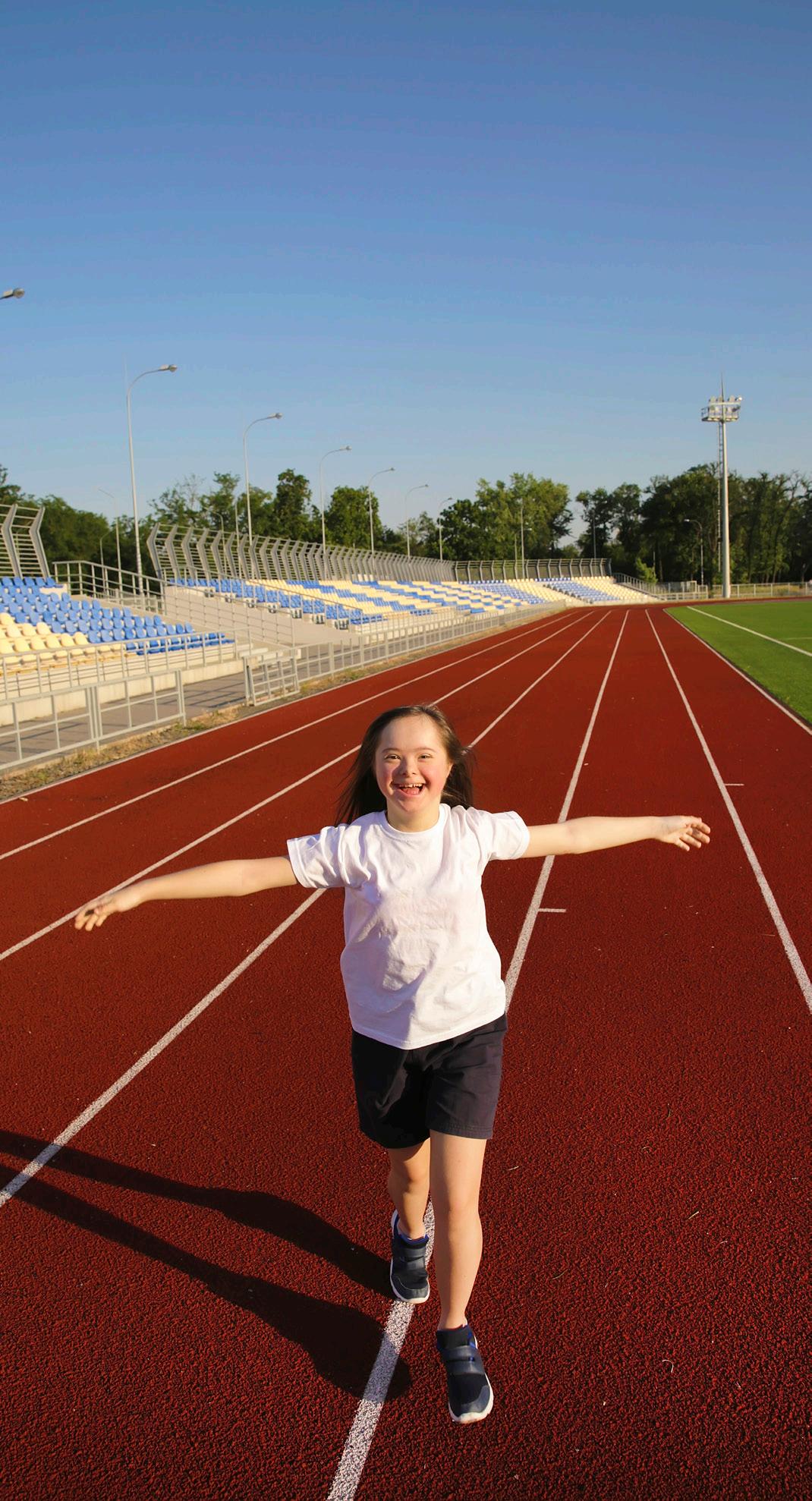
For most people, the first things to go when we are un der stress are our diet, sleep, and exercise. This is espe cially the case for many ND individuals and is particular ly troublesome since neglecting health can exacerbate existing difficulties (e.g., executive functioning) and re sult in poor health outcomes. Therefore, it is important to help your teen start to self-manage their own health behaviors before going out on their own (e.g., explor ing different physical activities, managing their sleep schedule, cooking meals). What can be helpful in this is for you to help them bring more awareness to the con sequences of their health behaviors (e.g., asking if they feel less stressed after going on a walk; do they regret eating the bag of candy—now they feel ill; did sleeping in one day actually help you catch up on your sleep debt [hint: no, no it does not]).
The transition from adolescence to young adulthood is a critical juncture, particularly for ND individuals and families. However, by helping them plan for young adult-oriented treatment and supports, develop TOPS, and bring awareness to the impacts of health behaviors on their daily life, you can help them not only navigate the transition to adulthood but THRIVE.
References
LaCount, P. A., Hartung, C. M., & Canu, W. H., & Knouse, L. E. (2019). Interventions for Transitioning adolescents with ADHD to emerging adulthood: Developmental context and empirically-supported treat ment principles. Evidence-Based Practice in Child & Adolescent Mental
34 | Exceptional Needs Today | Issue 10 SKILLS FOR LIFE
Health, 4(2), 170-186. https://doi.org/10.1080/23794925.2018.1518120
Pelham, Jr, W. E., Fabiano, G. A., & Massetti, G. M. (2005). Evidence-based assessment of attention deficit hyperactivity disorder in children and adolescents. Journal of clinical child and adolescent psychology., 34(3), 449–476. https://doi.org/10.1207/s15374424jccp3403_5

Thomas, R., Sanders, S., Doust, J., Beller, E., & Glasziou, P. (2015).
Prevalence of attention- deficit/hyperactivity disorder: a systematic review and meta-analysis. Pediatrics, 135(4), e994–e1001. https://doi. org/10.1542/peds.2014-3482
Patrick LaCount, PhD, is the director of Practical Psychological Services in Fort Collins, Colorado, and specializes in the assessment and treatment of ADHD. Dr. LaCount completed his doctorate in clinical psychology at the University of Wyoming, predoctoral residency at Duke University Medical Center, and postdoctoral fellowship at Seattle Children’s Hospital. In addition to providing psychological services, Dr. LaCount is passionate about disseminating the latest science to the ADHD community and is a research consultant for the “How to ADHD” YouTube channel.
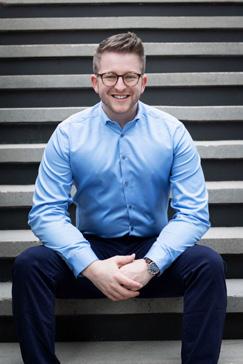
Website: https://PracticalPsychServices.com
Facebook: https://www.facebook.com/DrLaCount Instagram: https://www.instagram.com/drlacount/ Twitter: https://twitter.com/drlacount
Exceptional Needs Today | Issue 10 | 35 SKILLS FOR LIFE
See ME: The Invisible Autistic Boy
by David Petrovic, BA, MAT
What could be better than a children’s book written by an autistic middle school teacher?!
“See ME” is a book in three parts:
• Part 1 tells a beautiful and memorable story of a boy who felt invisible until a special peer “saw” him. Watch David emerge and trans form in this true tale of kindness, worthiness, and the power to make a difference.
• Part 2 presents a more detailed description of autism. David relays the information in the same story voice, and children will experience autism from the inside out via the words of someone who lives it.
Part 3 provides puzzles and other activities that reinforce the book’s vocabulary and con cepts; experiential learning is impactful and lasting.
The underlying messages of the story include the worth of every person, the power of kindness, and the acceptance of differenc es in others and selves. While “See ME” may inspire children who have experienced challeng es or special needs, it is intended for ALL children to encourage compassion and teach valuable lessons.
The book is geared to readers 7 to 12 years of age but is suitable for reading to younger listeners. Parents and teachers will love the opportunities for growth and conversation stemming from this fun read.

AVAILABLE ON AMAZON in paperback:
David Petrovic, BA, MAT, is a national speaker (including a TEDx Talk). Though virtually nonverbal until age three and the product of early special education, David graduated cum laude from Notre Dame College in 2015 with a degree in middle childhood education. He earned a Master of Arts in Theology in 2020. David is happily teaching junior high social studies in a private Catholic school in a suburb of Cleveland, OH, and aspires to teach high school theology.

and Blog: https://petro-autism.com/ Facebook: https://www.facebook.com/d.s.petro Twitter: https://twitter.com/D_S_Petrovic
Also, from this author (co-written with his mom, Sandy Petrovic) is the two-time award-winning book: Expect a Miracle: Understanding and Living with Autism. The revised second edition enables readers to experience, un derstand, improve, and embrace life with autism, whether personally or professionally. Available on Amazon in paperback or eBook formats: https://www.amazon.com/dp/B09NRBVGXR
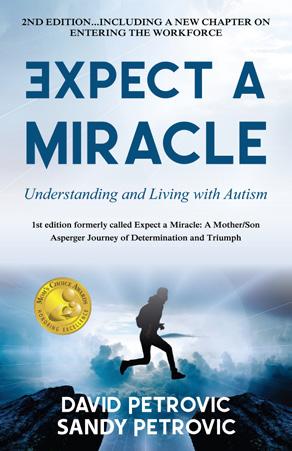
Website
EXCEPTIONAL BOOKS
https://www.amazon.com/dp/B0BDXLYMSJ?ref_=pe_3052080_397514860 ADVERTISEMENT
•
Written and illustrated
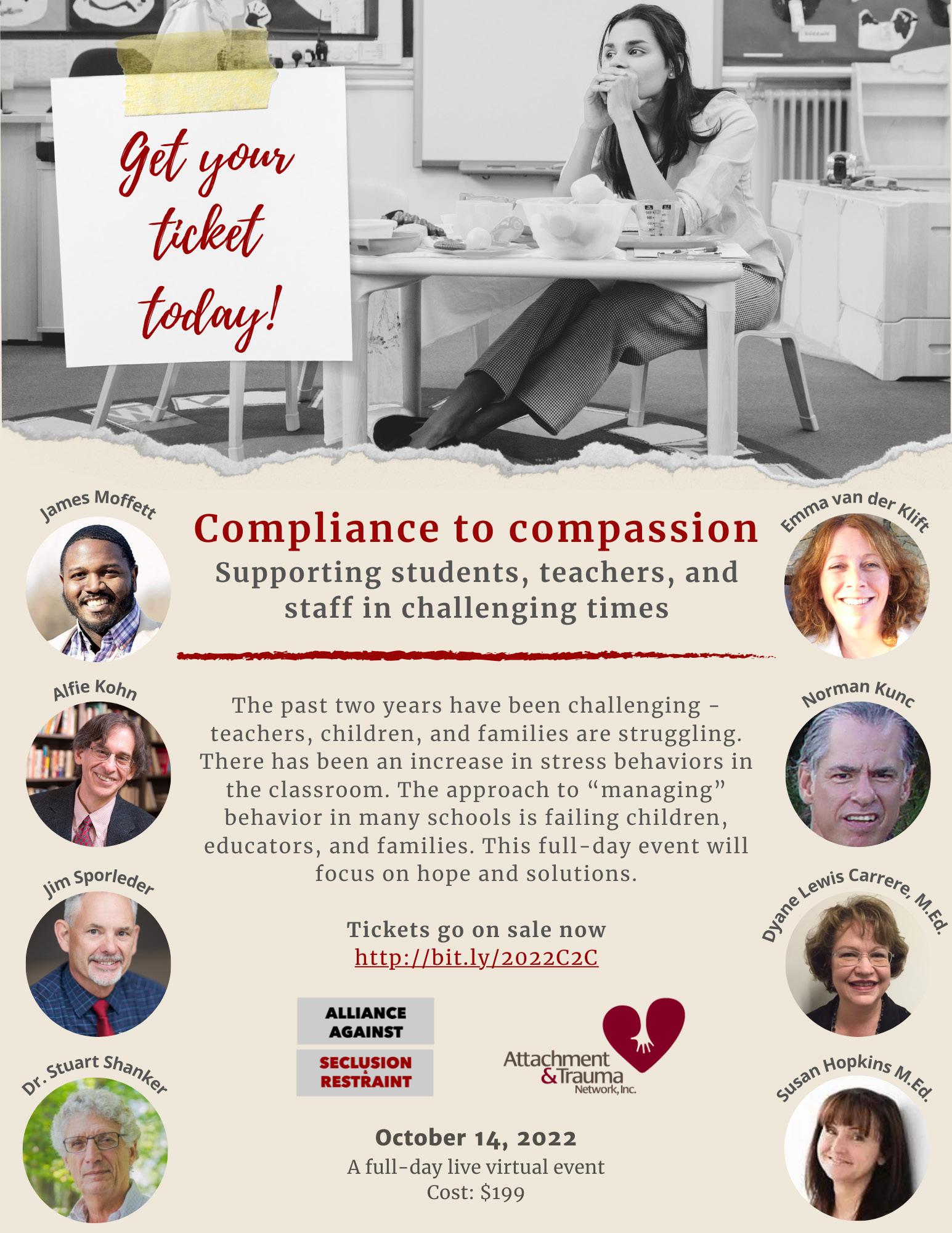
Holiday Stress When There Are Special Needs Leaning On Friends:
 By Deanna Picon Beautiful
By Deanna Picon Beautiful
holiday decorations. Spectacular public events. Gift shopping. Memorable gatherings with family and friends. For many, the holidays represent a joyous and celebratory occasion. But for others, the stress and increased pressures brought about by this time of year can lead to anxiety, loneliness, and depression. Everyone handles it differently. I’m going to share how my best friend Brenda and I managed her holiday stress. It all started with a late-night text she sent, asking me to read this email.
38 | Exceptional Needs Today | Issue 10 MY WORD
Hey Michelle!
Sorry for this long note, but I need to vent, and it’s too late to call you.

I had a really bad night. I just got back from the urgent care center near the mall. Rob and Johnny went with me. Thank goodness it has extended hours. If not, we would’ve been sitting in the emergency room at Memorial for hours.

You know I’ve been feeling bad for a couple of days. Too much on my mind. Not sleeping well. I guess my stress and worrying got the best of me. After dinner, I started having chest pressure, a rapid heartbeat and felt weak. I really thought I was having a heart attack.
The doctor examined me right away, took my blood pressure, and did an EKG. Fortunately, everything was fine. It was an anxiety attack. She said I need to take better care of myself, get more rest, eat better, and try to relax. Like, who has time to do this?
It’s been a tough week. I asked Tom if I could take my vacation week during the Christmas break so I could stay with Johnny during his recess. He keeps giving me the runaround, saying he needs a few people in the office and how everyone wants off. Tom says employees got spoiled from working from home because of the pandemic.
It’s like, “Hello! I have a seven-year-old son with autism.” It’s not like I can drop him off at my local childcare center for a week, and the staff will know how to take care of him. They’re not Special Ed teachers. Tom knows I don’t have much help. I mean, where’s the compassion?

Hopefully, my parents will visit us for Christmas. But my dad recently had knee replacement surgery and might be out of commission for a few weeks. I’m worried about him.
Rob and I have been working overtime to make extra money so we can buy some gifts and maybe treat ourselves to a weekend getaway for Valentine’s Day next year. My sister will take care of Johnny. Debbie said it’s no problem since I gave her a few months’ notice. But with all this inflation, everything keeps going up, so we’ll see. I get sticker shock every time I go to the supermarket or gas station.
And then there’s Melanie. Rob’s cousin is having her annual family Christmas dinner. You know how she likes to show off. Melanie probably had a few tantrums during the past two-and-a-half years because she couldn’t entertain due to the pandemic.
I really can’t stand being around her. Melanie always makes insensitive comments and stares at Johnny when he’s twirling his head or making sounds. She doesn’t understand why Johnny isn’t improving, especially with all the speech, occupational, and physical therapy he’s receiving. And she constantly gives me that condescending look, like I’m not a good mother. Can you believe her!?
Rob really wants to go to Melanie’s dinner because he hasn’t seen a lot of his family in two-and-a-half years. We’re having arguments about it. I don’t want to go. I’d rather stay home alone and stream some movies.
I’m so depressed. Call me tomorrow.
Exceptional Needs Today | Issue 10 | 39 MY WORD
I received Brenda’s text around 11:00 p.m. As soon as I read her email, I responded back. Here’s what I wrote.

Hey Brenda!
How are you feeling? Do you need anything?
I’m so glad you went to urgent care to make sure you’re OK. You know what, that doctor was right! This was a wake-up call. It’s time to slow down and take a breath.
I know you’ve been worried, but I didn’t think it would affect you like this.
I thought about what you said. Let’s break everything down, one step at a time.
We need to get our act together about our health. If we don’t, who’s going to take care of Johnny and Sam? There’s a ton of infor mation and videos about nutrition and exercise online. I’m sure we can download some meditation apps on our phones. We’ll find a way to fit some healthy habits into our crazy schedule, even if it’s only ten minutes a day.
The holidays are difficult for a lot of people. I think it’s tougher for us because we have special needs kids. And whether we like it or not, our families are different. Nothing like what we see in holiday commercials and movies. But that doesn’t mean we can’t enjoy the holidays.
Nobody really understands how hard it is raising children with disabilities except parents like us. We manage our kids’ daily and personal needs. We have to deal with school staff, messed up bus routes, going to doctors and therapy appointments, and fighting for services. And that’s just taking care of our sons’ needs. What about ours?
It’s overwhelming! We have too much on our plates. So, it’s OK to feel sad, frustrated, or angry. Remember, we’re human.
Tom’s a terrible boss. He probably booked his Caribbean vacation already and needs you to run things while he’s gone. You’re the best manager he has, and Tom doesn’t appreciate you. It’s time to look for a new job. Let’s update your resume and find you a better-paying job with more flexibility.

I’m sorry about your dad, but your mom will take good care of him. He hates not being able to do things, so I’m sure he’ll recover sooner than you think.
Don’t waste time on Melanie. If you’re not comfortable going to her house, don’t go. Who wants to feel like they’re under a micro scope?!
The same thing happened when my cousin Bruce came over on New Year’s Day. Sam’s nine now, so it was three years ago. Bruce treated Sam the same way Melanie does with Johnny. Needless to say, that was the last time Bruce came to our house.
Now I only visit or have people over who understand Sam’s condition and support our family. Melanie’s clueless and wouldn’t last a day with what we go through. I’m genuinely touched by how many people tell me they respect and admire Greg and me. They see first-hand how difficult it can be to raise a child with special needs.
Let Rob go to dinner, hang out with his family, and have a good time. Make sure he has lots of pictures and videos on his cellphone, so everyone can see how sweet and handsome Johnny is.
FYI. You and Johnny are celebrating Christmas at our house. And the day after, we’re going out for some stress relief, retail therapy. It’s time for a spa/shopping day. We’ll treat ourselves to a mani/pedi and catch some “After Christmas” sales at the mall. Most things will be 50% off, so we’ll save some cash and have some fun. Rob and Greg can watch the kids.
And please, no guilt trips. We need this! In fact, we should make this one of our New Year’s resolutions. Every month, we’ll do something special for ourselves. Home facials sound good to me.
Talk soon!
40 | Exceptional Needs Today | Issue 10 MY WORD
I spoke for an hour
appreciate
other
better
During the holidays, when life can become really
best gift we could ever give each other.
consider reaching out to others. You might be pleasantly sur prised. Many people
if you’re going through
happy, healthy,
mind lending a hand or an ear.
Deanna Picon is the founder of Your Autism Coach, LLC, which provides comprehensive support programs and seminars for parents of special needs children. Her personal mission is to empower parents as they advocate for their children while balancing productive work and family lives.

As the parent of a non-verbal young man with autism, Deanna personally understands the impact of autism on a family. She knows first-hand how heartbreaking a diagnosis of autism can be for parents and the personal struggles that often follow. But, through her own journey with autism, Deanna also recognizes the special joys, rewarding experiences, and unique life gifts which can result from raising a child with special needs.

Deanna’s articles have appeared in Exceptional Needs Today magazine, Autism Parenting Magazine, Exceptional Parent Magazine, and Parenting Special Needs Magazine. She is the recipient of both the 2018 “Top Parental Advice Writer Award” and 2015 “Top Life Coach Writer Award” from Autism Parenting Magazine. Her academic credits include a Bachelor of Arts degree in Psychology and a Bachelor of Arts degree in Broadcast Journalism from Syracuse University.
Website: www.yourautismcoach.com
Email: info@yourautismcoach.com
www.amazon.com
Book:
LIFE AFTER LOCKDOWN A powerful resource for people with autism, as well as those who are neurotypical, in dealing with the stress and anxiety of social situations, going back into the community, and returning to school and work. h t t p s : / / w w w . a m a z o n . c o m / d p / 1 9 5 6 1 1 0 0 3 8 D r . T e m p l e G r a n d i n D r . T o n y A t t w o o d D r . S t e p h e n S h o r e D r . P e t e r V e r m e u l e n L a r r y B i a s s o n n e t t e E l i z a b e t h S a u t t e r C o n t r i b u t i o n s f r o m 4 0 w e l l - k n o w n e x p e r t s a n d a u t i s t i c i n d i v i d u a l s i n c l u d i n g : D r . K e r r y M a g r o D r . J Â c q û e l i n e F e d e D r . A m y L a u r e n t L i l l i a n V a s q u e z K e l l y L o n d e n b e r g S a n d y & D a v i d P e t r o v i c https://www.amazon.com/dp/B0B37KWZNC/ref=tmm_pap_ swatch_0?_encoding=UTF8&qid=1654896233&sr=8-1 Brenda and
the next morning. We felt so much
afterward.
stressful, we
each
even more. Our friendship is the
Perhaps
some of the same things we were,
are filled with good cheer this time of year and may not
Have a
and prosperous 2023! You deserve it! Exceptional Needs Today | Issue 10 | 41 MY WORD
TOPICS WITH TAMMY
Transitioning From a Pediatrician to an Adult Primary Care Physician When There Are Special Needs
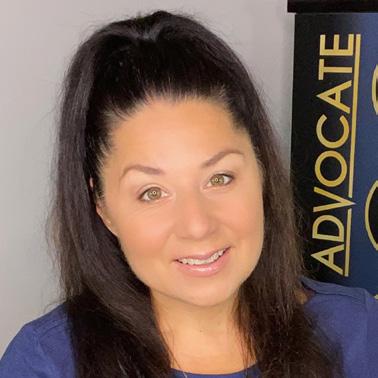
 By Tammy Flynn
By Tammy Flynn
I THINK IT’S SAFE TO SAY THAT FOR MOST OF US PARENTS, OUR CHILD’S PEDIATRICIAN BECOMES AN EXTENDED MEMBER OF OUR FAMILY. THEY SEE OUR CHILDREN FOR EVERY BIRTHDAY TO ENSURE THEY ARE GROWING HEALTHY AND STRONG, THEY SHARE THEIR WISDOM, AND THEY ARE YOUR GO-TO FOR EVERY COLD, FLU, AND ILLNESS. YOUR DOCTOR MAY EVEN BE ON THE ANNUAL HOLIDAY CARD LIST! THE RELATIONSHIP THAT HAS BEEN BUILT AFTER THEY HAVE MANAGED YOUR CHILD’S HEALTH CARE FOR YEARS, EVEN DECADES, IS TREMENDOUS. THE COMFORT OF KNOWING THEY ALWAYS HAVE YOUR CHILD’S BEST INTERESTS AT HEART IS INVALUABLE.
42 | Exceptional Needs Today | Issue 10
So,
it’s safe to say that when it comes time to transi tion your young adult from their pediatrician to an adult primary physician and adult medical provider, it can feel extremely emotional and overwhelming. Not only for you but for your child too. I can person ally attest to this: as a mother of four, I have gone through the transition process with all my children, one of whom is my son with different abilities and complex medical needs.
Fortunately, there are some important transitional steps you can take to help ease those emotions, support, and guide your child as they work on transition-readiness skills and un derstanding their personal health care information. The goal of these steps is to prepare and empower them to be as in dependent as possible in the adult health care system and in working with adult medical providers.
Before we dive into those transition steps, one crucial ques tion for parents as their child enters their tween/teen years is this: How active of a role do you feel you will be playing in their adult health care after they turn 18? This is important to consider, as much of the health care timeline, readiness skills, and questions for the doctor may fall directly on your plate if your child will not be actively participating in this process. The opposite may also be true if your child (now a young adult) independently takes on all or part of their adult health care.
With that being said, here are some possible answers to the question posed above:
1. My young adult will be independently taking on their health care at the age of 18
2. My young adult will be taking on their own health care at the age of 18, but I will still be actively participating in their care
3. I am my young adult’s legal guardian and will be taking on all their health care needs
Even if you are going with option three, I would highly encour age you to help your young adult be as involved in their health needs as possible.
This timeline outlines different health care transition items you and your young adult can work on and some beginning steps you can take. It is most suitable for those who will be independent and/or need minimal support once they are 18. Though, as stated above, I would encourage parents who have legal guardianship and currently navigate all their child’s needs to still work with their young adults on learning these items, if able.
Ages 11-13
1. Take the time at home to sit with your child and help them learn about their health conditions, diagnosis, disability, medications, allergies, etc. Also, if they use any supportive medical devices, explain what they are
and why they use them. YouTube videos and medical books with pictures can be great resources if your child is a visual learner.
2. Encourage your child to ask questions at the doctor’s office about their health and medical condition(s). A great activity you could do with your child is to create a list of questions together before you go to the appoint ment.
3. Ask your pediatrician about what age they would like your child to start the transition process to an adult pri mary care physician.
Ages 14-15
1. Continue to educate your teen on their health care, as well as start to incorporate family medical history into the discussion.
2. Work with your teen on how to make a doctor’s ap pointment. In addition, teach them the different ways you can order prescriptions. Use this time to explore ways to simplify the ordering process, whether online, through a pharmacy phone app, or simply calling di rectly on the phone.
3. Have your teen see the doctor for the first part of the visit on their own. Most doctors will already encourage this, but as your child is now a teen, helping them gain some independence in their health care is very import ant.
4. Depending on where your teen is in the transition process, give them the responsibility of keeping their health care insurance card with them to help them gain more independence.
Exceptional Needs Today | Issue 10 | 43 STAYING FIT AND HEALTHY
It is important that you and your child build a strong relationship with their adult health care team built on trust.
5. Along with your doctor, educate your teen on what to do in case of a medical emergency. Create an action plan of steps they can easily follow and remember, especially during times of an emergency when they may be anx ious and very overwhelmed. Also, encourage them to share that action plan with friends, roommates, or oth er family members they may be staying with, so they are also educated about what to do in case of a medical emergency.
Ages 16-17
1. Continue doing all the transition steps above while gradually giving more and more independence. Have your young adult make those doctor appointments in dependently as well as go to the doctor alone. If they are driving, make sure they remember to make a ques tion list and bring it along. Keep reinforcing the steps of how to refill medications, etc.
2. If your young adult is independently taking on their health care, make sure they talk to their doctor and are clear on what their privacy rights are when they turn 18. Also, if they will need your ongoing support from age 18 and beyond, make sure all documents are in place.

3. Have a medical summary/timeline in place as well as an active, editable list of medications. This can simplify much of the process.



4. At this point, you and your young adult should be ac tively looking for your adult primary care physician. If you are interested in further guidance on this part of your transition journey, check out my book, Transition ing from a Pediatrician to an Adult Physician, which is now available on Amazon.

The items in this timeline are just a starting point for your tran sition journey. It is important that you and your child build a strong, trustful relationship with their adult health care team. You want to feel that love and support, just as you did with their pediatrician.

While it may seem overwhelming now, just take it one step at a time and remember, I’m always here for you at “The On-Air Advocate.” In addition, if you found this article helpful, be sure to check out some of my latest resources:
Transitioning from a Pediatrician to Adult Physician:

You Need to Know About Phasing Out of Pedi
Tammy Flynn is the creator of the On-Air Advocate: an online platform that provides education, advocacy, and supportive services for special needs parents, caregivers, and those with disabilities and complex medical conditions. She pulls from her own experiences over the last two decades of working in the community and as a mother, caregiver, and advocate to provide the resources she found missing. Website: https://www.onairadvocate.com/ Facebook: https://www.facebook.com/OnAirAdvocate/ Instagram: https://www.instagram.com/theonairadvocate Twitter: https://www.Twitter.com/onairadvocate YouTube: https://www.YouTube.com/c/TheOnAirAdvocate
•
What
atric Care https://www.amazon.com/dp/B0B28N3Y WH?ref_=pe_3052080_397514860 • Top 10 Tips for Traveling with Your Child with Special Needs https://www.onairadvocate.com/top10tips • The Self-Care Toolkit for Special Needs Parents https:// www.onairadvocate.com/selfcaretoolkit-parents.html Working together to promote awareness, acceptance, and inclusiveness for all Exceptional Needs Today WWW.EXCEPTIONALNEEDSTODAY.COM 44 | Exceptional Needs Today | Issue 10 STAYING FIT AND HEALTHY
ADVERTISE WITH US





A C H Y O U R

U S I N E S S G O A L S
MEDIA KIT advertising@exceptionalneedstoday.com EXCEPTIONAL NEEDS TODAY R E
B
Shifting Sensory
Regulation Focus for Better Body Understanding
 By Laura Ryan, OTD, OTRL
By Laura Ryan, OTD, OTRL
WE ARE SENSORY BEINGS. WE GLEAN INFORMATION BOTH IMPORTANT AND DISMISSIVE, POSITIVE AND NEGATIVE, ALARMING AND COMFORTING FROM OUR SENSES, AND WE USE THAT INFORMATION TO MAKE DECI SIONS THAT KEEP US SAFE AND HAPPY. CONTRARY TO POPULAR BELIEF, WE HAVE EIGHT SENSORY SYSTEMS WE REGULARLY DRAW INFORMATION FROM.
46 | Exceptional Needs Today | Issue 8 SENSORY STRATEGIES
The
first five senses commonly known and understood include the visual system, which is responsible for seeing; the auditory system, responsible for hearing; the olfactory system, responsible for smelling; the gustatory system, responsible for tasting; and the tactile system, which is responsible for feeling (STAR Institute, n.d.).
The three remaining systems are equally important. They in clude the vestibular system, responsible for balance and un derstanding where our body is in relation to the environment; the proprioceptive system, responsible for understanding where our skeleton is in space and how much effort we need to expend to move it; and interoception, the understanding of the soft tissue parts of our body (STAR Institute, n.d.), such as feeling our stomach is empty because it is growling and under standing that means we need to eat.
For all humans, making sense of sensory information occurs on a continuum (Johnson, 2013). For individuals who are neurodiverse, this continuum of sensory awareness may be unbalanced, leading to a difference in how they process par ticular sensory information, impacting their interactions with the world. Miller et al. (2017) determined several patterns of sensory processing: sensory over-responsiveness, where the individual is more sensitive to input and has a large reaction to it; sensory under-responsiveness, where the individual is less sensitive to input and has a much-reduced reaction to it; and sensory craving with sensory over-responsiveness, where the individual actively engages in robust sensory activities and ex hibits large reactions as a way to satiate their sensory systems.
Children with sensory over-responsiveness may have a lower threshold for incoming sensory information. They are much quicker to note and react to this information because their threshold is met very quickly. These children are particular about how they like things and can become upset with change. They tend to notice and become distressed over small and seemingly inconsequential details, such as a new toothbrush. Involving them in decisions, like having them choose what col or their new toothbrush is, can be helpful in alerting them to a change and giving them more agency over the shift.
Additionally, environmental supports such as placing carpet in your home to reduce noise and giving them access to quiet spaces can help temper sensory information. Those who are under-responsive may have a higher threshold for sensory in formation and are slower to react because their system takes much sensory input to become activated. This is the child who may need their name called several times before looking up or the child who falls and scrapes their knee but doesn’t appear to feel the pain. In order for this high threshold to be met and acted upon, the sensory information needs to be consistent, repetitive, and robust. Environmental cues may help, including using a brightly colored placemat and dishes so they remain attentive to their meal or placing bright stickers at important points around the house, such as where they should hang up their coat.
Children with sensory cravings who are also over-responsive are typically very active and engage in many strategies to meet a high threshold but can become easily overwhelmed. This is
the child who runs, climbs, and jumps with low regard for their safety, then becomes disorganized and can display behavior such as crying. Supporting a child who seeks sensory input involves carefully tailored access to the input that feels good to them (for example, jumping on a trampoline) with mindful breaks to avoid overstimulation. It is also important to note that children who have difficulty processing sensory informa tion may also have difficulty with motor skills like managing a zipper, pulling a shirt over their head, or using a pencil to write their name. In addition, social skills such as playing coopera tively with peers may also prove difficult.
There are several ways to support a child who may process sensory information differently. First, and most important, is to respect that their perception of sensory information is val id and reliable. Seeing a sensory event from their perspective will allow you to better experience their feelings and make ad justments. For example, feeling the tag of a shirt to check if it is scratchy will allow you to proactively remove it before your child wears the shirt, thereby supporting their sensory system.
Second, directly break down sensory information into small, understandable chunks to teach sensory awareness. Interocep tion, being attuned to the soft tissue of your body and what the feelings of those soft tissues mean, is an emerging area of im portance in sensory processing. When breaking down sensory information, it is especially important to relate that information to body feelings. For instance, if your child is yawning, you can call attention to their yawning and then to other more subtle signs of fatigue, such as their eyes wanting to close or their legs feeling like they are moving through wet cement.

Exceptional Needs Today | Issue 10 | 47 SENSORY STRATEGIES
You can grade their fatigue by how big or little their yawn is. To make this information more engaging, you can demonstrate a BIG yawn with a broad expanse of your arms or a tiny yawn with the pinch of two fingers and then relate that to their mood. Re lating back to this conversation, the next time your child is tired will allow them to gauge their fatigue better and judge whether they need to take a rest. Building on these skills will eventually lead to a more proactive and independent analysis of how they are feeling and create an effective strategy to support their body.

Last, remain consistent in the language you use when describ ing sensory moods or feelings. There are programs that organize sensory feelings into concrete categories and link strategies to those categories, so when a child is having difficulty identifying a feeling that is inherently more ambiguous, they can instead relate their feeling and employ a strategy related to its color category to bring themselves back to a regulated state. For ex ample, a child may understand a stronger emotion like sadness but have difficulty understanding that disappointment and “bummed out” are variations of sadness. Collecting these feel ings together and linking a strategy to that collection will allow
the child to broadly identify how they are feeling, what to do to make themselves feel better, and ultimately build resilience and independence in the area of sensory processing.
Resources
The Zones of Regulation framework and curriculum can be accessed at https://www.zonesofregulation.com/learn-more-about-the-zones. html
References
STAR Institute. (n.d.). Your 8 Senses. STAR Institute. Retrieved July 13, 2022, from https://sensoryhealth.org/basic/your-8-senses
Miller, L. J., Schoen, S. A., Mulligan, S., & Sullivan, J. (2017). Identi fication of sensory processing and integration symptom clusters: A preliminary study. Occupational Therapy International. https://doi. org/10.1155/2017/2876080
Johnson, S. L. (2013). The therapist’s guide to pediatric affect and behavior regulation. Elsevier Inc. https://doi.org/10.1016/C2010-067272-5
Laura Ryan, OTD, OTRL, is an occupational therapist who grew up on a large horse farm in Massachusetts. She has been practicing for 30-plus years and has been using hippotherapy as a treatment tool since 2001. She enjoys seeing the happiness and progress each person has achieved through the therapeutic impact of the horse. Laura has also developed a program for breast cancer rehabilitation using therapeutic input from the horse.
Email: hooves4healingot@gmail.com
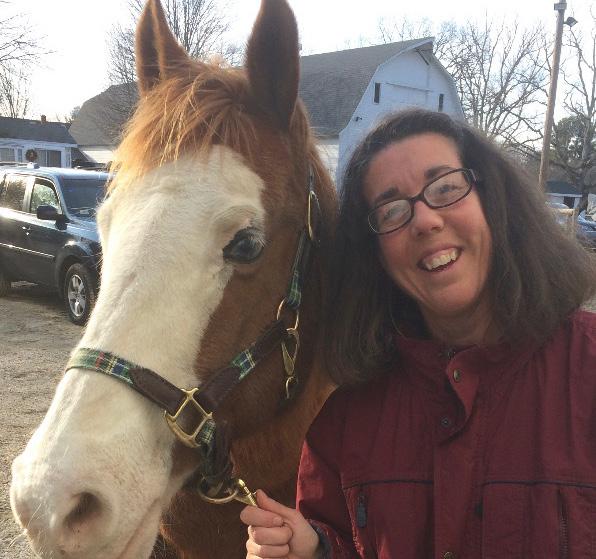
48 | Exceptional Needs Today | Issue 10 SENSORY STRATEGIES
The Importance of Consistency and Routine for the Atypical Brain
 By Beatrice (Bea) Moise, MS, BCCS
By Beatrice (Bea) Moise, MS, BCCS
HAVING A NEURODIVERGENT CHILD CAN BE CHALLENGING. WHEN WRITING MY BOOK, OUR NEURODIVERGENT JOURNEY, MY MAIN OBJECTIVE WAS TO HELP OTHER PARENTS TACKLE THE CHALLENGES OF HAVING AN ATYPICAL LEARNER. PARENTING A CHILD WHO TAKES IN INFORMATION DIFFERENTLY FROM HOW YOU LEARN IS CHALLENGING. STILL, WHEN YOU CREATE A ROUTINE AND MAINTAIN CONSISTENCY WITH THAT ROUTINE, YOU WILL FIND THOSE CHALLENGES ARE EASIER TO TACKLE.
Exceptional Needs Today | Issue 10 | 49 SKILLS FOR LIFE
Lead by example
The best way to get a child to grasp the concept you are try ing to teach thoroughly is to model this particular behavior yourself. Create a morning, afternoon, and evening routine in which you are an active participant (preferably including your completion of the target concept), so your child can see you follow a pattern. By doing this and leading by example, you will decrease the struggle of fighting this task for your child.
I have attention-deficit/hyperactivity disorder (ADHD) and neurodivergent children; routines are an essential part of my household that help me manage my ADHD symptoms and keep my family on track. For example, my nine-year-old daughter leaves me little reminders of things she needs from me next to my teacup. When I asked her, “Why do you leave these little notes there?” she replied, “You always make tea every morning before you do anything, so my note will be the first thing you see!” Her response reminded me of how import ant it is for your children to see you have a routine and how reassuring it is for them to have that sense of predictability.
Weekend morning routine example:
• Brush teeth (parent & child)
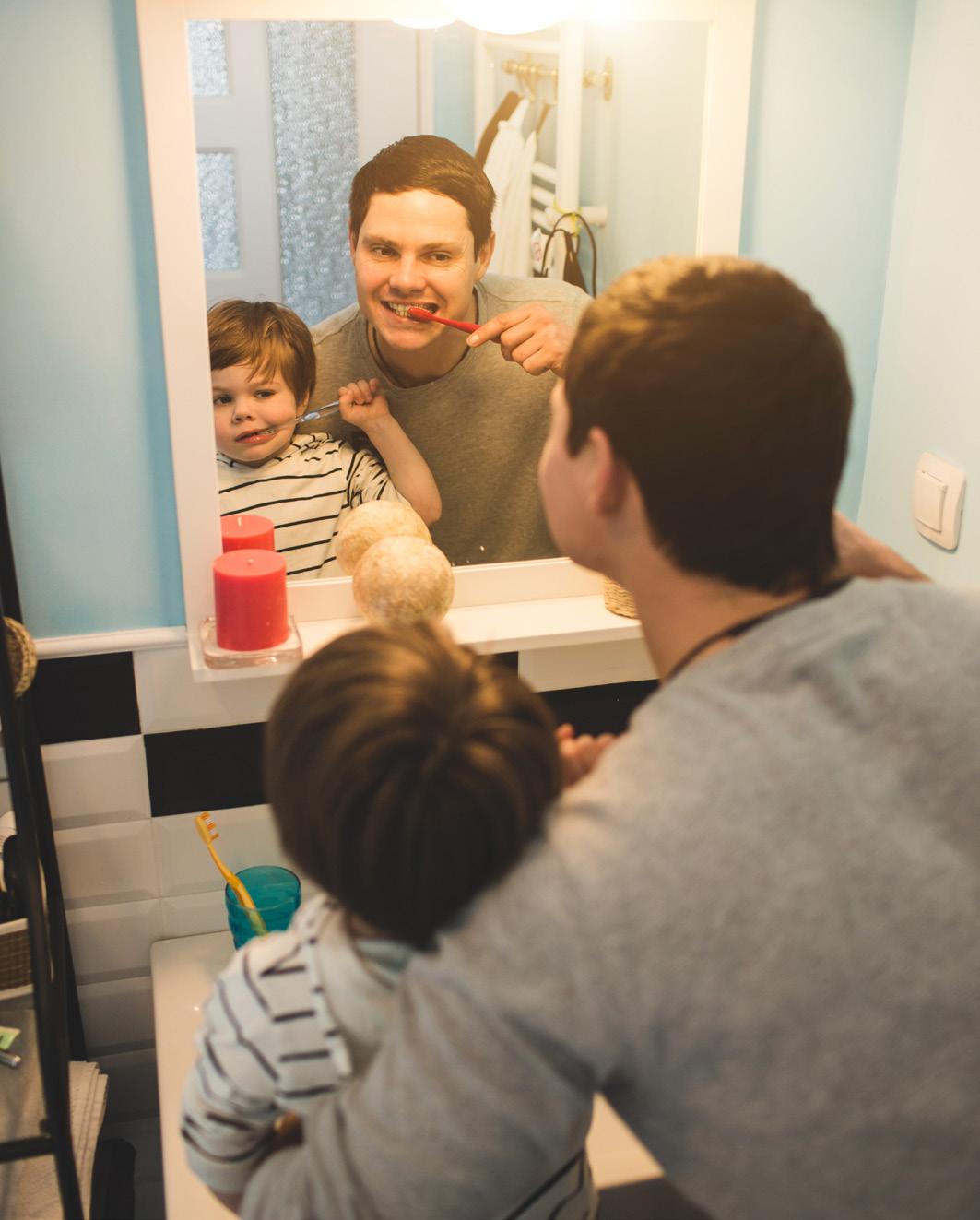
• Get dressed (parent & child)
• The chore of the day (child)
• Make tea (parent)
• Prepare breakfast (parent)
• Unload dishwasher (child)
• Set breakfast table (child)
• Eat breakfast (family)
• Start your day (family)
Structure is so GOOD!
Having a structure for your child will help you manage your household and give your child a sense of accomplishment. Growing up in a neurotypical world, the atypical child is of ten reminded of the things they can’t or struggle to do. The structure will help this child learn how things can be difficult at first, but with consistency, you will get it done. Giving a child that sense of accomplishment is priceless. Having structure in place will also help you and your child see how you are both doing. It can hold you accountable and serve as a reminder.
Having structure in your home is a win/win situation. Learning how to implement the system will ensure success with it.
Implementation 101
• Set a realistic goal of what you want
• Communicate clear expectations with your family to avoid frustrations. Have a family meeting and discus sion, so everyone knows what will happen. If you have a non-verbal or limited verbal child, use other forms of communication, so they are also part of the conversa tion
• Where do you want the structure implemented? Maybe it’s your morning or evening routine. Perhaps it’s some thing small, like brushing teeth. Start with the place that will be most beneficial to your family
• Allow room for repeated mistakes. It will not go perfect ly on the first, second, third, or even fifth try, but it will improve over time
There are many benefits to creating a routine. However, one of the most important lessons you will learn is a sense of inde pendence. Your child will acquire independence by knowing what is coming and will be able to execute tasks independent ly because they have had the opportunity to practice repeat edly. Reiterate to your child that practice makes it better.
Beatrice (Bea) Moise, MS, BCCS, is a BoardCertified Cognitive Specialist, parenting coach, national speaker, and author of Our Neurodivergent Journey. Her UNIQUE parenting channel on YouTube is dedicated to educating individuals on neurodiversity.

Website: https://www.achild-likemine.com/ Facebook: https://www.facebook.com/BeaMoise.M.S Instagram: https://www.instagram.com/achildlikemine/ Twitter: https://twitter.com/AChildLikeMine 50 | Exceptional Needs Today | Issue 10 SKILLS FOR LIFE
Creating Autism-Friendly Spaces Can Help Children Thrive
By Ron Sandison
“Growing up as an autism sibling was not easy, and there were a lot of things I never understood, but as an adult I’ve learned how to find gratitude for the journey.” —Natalie Castro

AUTISM AND SENSORY ISSUES MAKE LIVING SPACE IMPORTANT TO ME. HOME IS A PLACE FOR ME TO DECOMPRESS AND RECHARGE. WHEN I WAS SIX YEARS OLD, I BECAME OBSESSED WITH THE BOOK WELCOME TO NO MAN’S VALLEY WRITTEN BY LAURA MCCARLEY AND THE 1981 ANIMATED SPECIAL BASED ON THE BOOK. IN MY BEDROOM, I BUILT MY OWN NO MAN’S VALLEY WITH A BLANKET COVERING A COFFEE TABLE. ON TOP OF THE TABLE WAS A MOVING ANIMAL TRAIN AND A WATCHTOWER COMPOSED OF LEGOS. THIS UTOPIA WAS COMPLETE WITH ALL MY FAVORITE CRITTERS, INCLUDING PRAIRIE PUP.
When I experienced fear or anxiety, I entered No Man’s Valley through its blanket door, and I felt calm. No Man’s Valley was a stress-free environment where I could hide from the world and read and write about my creative animal adventures.
Thirty years later, I live in an apartment with my wife and daugh ter, but I still have a man cave at my parents’ home with a library of over 5,000 books and a toy collection from around the world. So, I was excited to interview Natalie Castro, an autism real estate specialist, and gain insight on creating homes capable of meeting neurodivergent children’s sensory and development needs. I have included a transcript of our con versation below:
Q: What was your childhood like hav ing a sister with autism?
A: Being a sibling to my younger sister, Angie, I remember our home looking and feeling chaotic. I felt overwhelmed by therapists constant ly coming in and out of our home. At first, I thought my sister hated me. I knew she was different and that she had a difficult time with communica tion. It wasn’t until I was nine years old
and her speech therapist helped me understand her [forms of] communication that I started to have a better relationship with Angie.
When she was young, she was very aggressive. Her speech ther apist taught me how to play with Angie using Picture Education Cards. By attending all of Angie’s therapy sessions, I learned how she processes information and better ways to help her communicate.
Q: What are some of your favorite childhood memories with your sister Angie?
A: When Angie was little and want ed to play tea party with me, I remember letting her play, and I would just be next to her and join in. Living in Florida, we often went to Disney World, and this was our favorite place. Angie did not do well in malls, but she did great at Disney World because she knew the char acters and loved them. We also had a great time going to the pool.
Q: How did your parents help your sister develop social skills?
Exceptional Needs Today | Issue 10 | 51 SENSORY STRATEGIES
A: My parents enrolled Angie in summer camps, therapy pro grams, and schools that helped her gain social skills. Angie learned best by modeling behaviors. Our church had a program [called] Best Buddies, and this provided her with a companion which she loved! My parents listened to the therapist’s ideas and learned as they went by taking one day at a time and trying new activities.
Q: What is your educational background, and how has it empow ered you to help Angie and others with autism?
A: In college, I studied many modalities to help me understand more about autism, from ABA therapy to speech-language pa thology, occupational therapy, special education, recreational therapy, and physical education. Having a variety of modalities to study helped me understand how these professions help children in a full circle. It also empowered me to understand sensory pro cessing and how the autistic mind operates.
Q: How has your sister inspired you to be an autism advocate?
A: When she was younger, no one understood her. She spoke through a communication device and would only use the device if it had my voice. I was eight years old, recording my voice during recess on her commu nication device. I made it my mission to help Angie find her voice. I also be come an advocate by participating in Best Buddies and helping other chil dren with autism.
Q: What are three ways you have ad vocated for Angie?
A: The three ways I’ve advocated for my sister are: school, social set tings, and home. I instructed Ang ie’s teachers about her learning and sensory needs and helped her with homework. I advocated for her In dividualized Education Programs to provide [the] support and resources she would need to thrive in school. In social settings, by fun activities in a variety of environments. Finally, I advocated in the home by teaching Angie basic skills for independence, like how to grocery shop and wash dishes.
Q: Could you please share a humor ous memory with us?
A: My favorite humorous autism
memory was Angie calling me an asshole in the perfect context; it was a bonding moment. After I taught Angie how to shave her legs, she loved the sensory feel of shaving and wanted to do it every day. To keep her from damaging her skin, I would only let Angie shave every other day. When she tried to shave on her off day, I took the razor from her, and she yelled, “You’re an asshole!”
Q: What are some challenges Angie experienced transitioning into adulthood?
A: I became a co-guardian to my sister at the age of 26 and went from thinking like a sibling to [thinking like] a parent. We experi enced a lot as a family, but I would say her toughest time was tran sitioning out of school and receiving services. [There are not] a lot of social groups for adults. One way it could be easier for young adults to transition is to develop more social groups and fun ac tivities for them.
Q: What sparked your career path into real estate and design for autism families?

52 | Exceptional Needs Today | Issue 10 SENSORY STRATEGIES
A: When Angie became an adult and aged out of high school, I re alized the importance of home designs. We now had her full-time at home and realized she needed more independence around the house. Creating a home routine with workouts, meal prep ping, cleaning her room, helping with house chores, and her selfcare was a challenge. I began to adapt our home to help Angie become more independent.
I recognized the layout of our home did not serve Angie’s inde pendence. Helping Angie sparked the interest, but it wasn’t until 2020 as I was watching HGTV and said, “Why isn’t anyone teach ing special needs families how to design their home to help their child’s development?” That’s when the light bulb went off, and I realized that we weren’t the only family having a struggle with this, so I decided to get a real estate license and help other fam ilies.
Q: What are some ways you can design homes to help children with autism reach their milestones?
A: Each child requires a variety of needs in the home, such as a room for a sensory gym or pool for sensory needs, a backyard for jungle gyms for their gross motor skills, different workspaces for therapists to come over but also giving the siblings a space for themselves…the list is limitless. The bedroom is the first room to start with. Each child has a unique communication style, and being able to sit down with their therapists to go over their goals is the most important part. Helping families use their child’s team to design their home is essential. The living room is a great place for comfort, and the kitchen to develop life skills like cooking or making a grocery list.
Q: What questions should a parent ask when considering buying a home?
A: Some good questions to ask when considering a home [in clude], “Where can we live that will support our child’s needs?”, “What kind of home should we buy to help promote our child to ward independent living?”, “Which city has recreational activities [our child] can enjoy periodically?” and “Which layout would be the best for us?” When considering these questions, keep in mind the resources your child will need in the next five to seven years.
Q: How did you design your home to meet Angie’s needs?
A: I designed different areas in our home for Angie to develop in dependent living skills, such as the laundry room, kitchen, bath room, and bedroom. A swing chair in her bedroom to provide sensory regulation with fluffy pillows. We decorated our living room sofa with a cute designed weighted blanket and textured pillow.
Q: What makes Utah a good state for people with autism to live in?
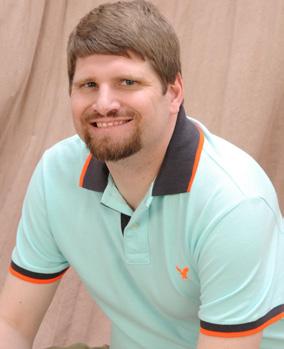
A: Lots of activities and easy access to nature! Mountains and
landscape [are] beautiful and provide a peaceful environment, and the police have autism training.
Q: What cities would you recommend for people with autism to live in and why?
A: It’s not the city I would recommend as it is the resources that are provided for your child’s needs. When considering a city to live [in], consider what resources are available. You can gain this information by talking with other families who have a child with autism and doing research.
Q: What are some topics you discuss on your podcast, and what are some projects you are currently working on?
A: I am currently working with a hospital to create a senso ry-friendly ER treatment room and will be training their ER nurses on how to work with children on the spectrum. For every three homes I sell, I design and fund a sensory room. Topics I discuss on my podcast include real estate, design, and coaching.
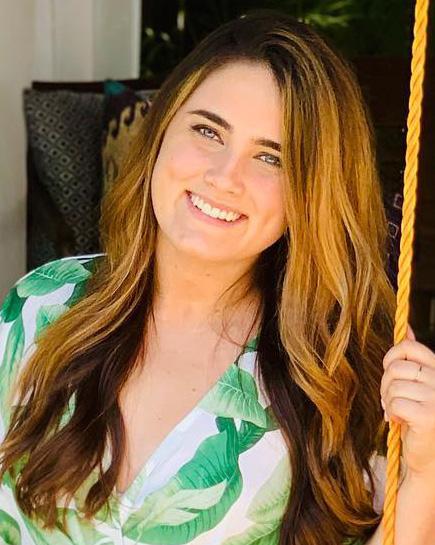
Natalie Castro is an autism-friendly interior designer who specializes in creating spaces for children’s developmental milestones. Natalie has an exclusive home buying program for autism families that includes community resources, a meeting with your child’s multidisciplinary team, and more. She is here to guide clients through the whole relocation process.
Email: natalie@piecesofinspiration.com.
Facebook: https://www.facebook.com/piecesbynataliecastro
Ron Sandison works full-time in the medical field and is a professor of theology at Destiny School of Ministry. He is an advisory board member of the Autism Society Faith Initiative of Autism Society of America, the Art of Autism, and the Els Center of Excellence. Ron has a Master of Divinity from Oral Roberts University and is the author of A Parent’s Guide to Autism: Practical Advice, Biblical Wisdom, published by Charisma House, and Thought, Choice, Action. He has memorized over 15,000 Scriptures, including 22 complete books of the New Testament. Ron speaks at over 70 events a year, including 20-plus education conferences. Ron and his wife, Kristen, reside in Rochester Hills, MI, with their daughter, Makayla.
Website: http://www.spectruminclusion.com
Facebook: https://www.facebook.com/SpectrumRonSandison
Email: sandison456@hotmail.com
Exceptional Needs Today | Issue 10 | 53 SENSORY STRATEGIES




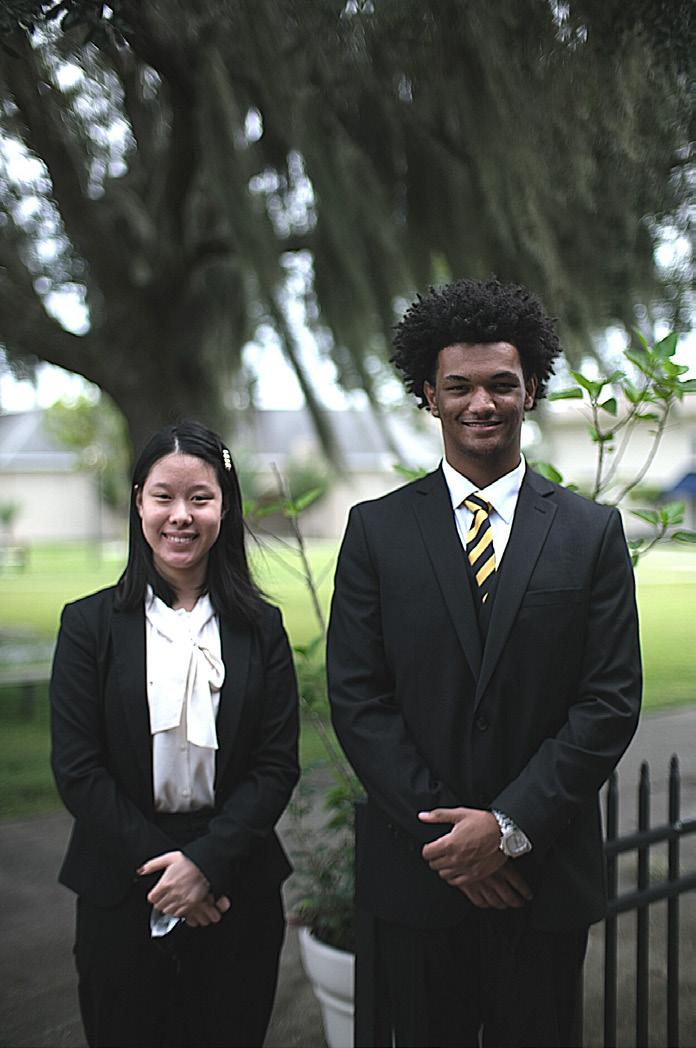
A Place to be Understood Winston Preparatory School is a leading network of schools for students with learning differences. At Winston Prep, a deep understanding of each student is at the core of the learning model. Our expert faculty conduct on-going, in-depth assessments, helping each child advance at a meaningful pace and thrive! Register today for an open house at www.winstonprep.edu/admissions/open-houses The Winston Preparatory School does not discriminate against applicants and students on the basis of race, color, or national or ethnic origin. New York | New Jersey | Connecticut | California | Online THE VANGUARD SCHOOL Guided Learning through Individualized Spectrums of Growth www.vanguardschool.org admissions@vanguardschool.org Leadership Community Integrity Empathy Resilience 54 | Exceptional Needs Today | Issue 10
My Sibling has DownSyndrome, Not Me
Meeting the Needs of Siblings
By Dr. Ronald I. Malcolm, EdD
Balancing the medical and educational needs of a child with Down syndrome and the daily needs of other children in the household can be challenging. Here are 10 simple tips for achieving that sense of balance.

1. Plan a classroom visit
Many students with Down syndrome are educated in a regular classroom or resource room at the same school as their sib
lings. As a parent, you can work with your local school system to encourage them to have an “Open House” so children can visit the classrooms of their siblings with exceptional needs. They can see the work their sibling has completed, look at some of the specialized materials they may be using during their school day, meet some of their sibling’s friends who may also have Down syndrome, or even sit at their desk in their classroom.
Exceptional Needs Today | Issue 10 | 55 FAMILY SUPPORT
2. Attend a Special Olympics event
Getting your child involved in the Special Olympics is an ex cellent way to keep your child actively engaged and healthy. It can also assist your child in meeting others like them and develop lifetime friends. Having your abled children attend one of these events is also a great idea. This will allow your family to volunteer and give back to the community. They will witness the skills their sibling with Down syndrome possess es and be able to “cheer” them on. In addition, it will allow them a unique opportunity to interact with a wide variety of individuals with Down syndrome. It will remind them that not all individu als with Down syndrome are the same, and each person has unique skills and abilities.
3. Create school displays
Almost every school has bulletin boards. Most teachers would welcome the opportunity to have some extra assistance with decorating a bulletin board with a new theme or twist. For example, siblings could be encouraged to create a bulletin board that displays the skills or talents of their sibling with Down syndrome. Other creative ideas include adding facts surrounding the diagnosis and the many ways people communicate, including augmenta tive communication devices, picture exchange communication systems, or American Sign Language. They could also include well-known people with Down syndrome.
4. Get to know your neighbors
Parents can ask school administrators to host town panel discussions with individuals with Down syndrome to highlight their contributions to the community. It’s also an excellent op portunity to invite adults or high school students into classrooms to discuss their daily challenges, the discrimina tion they might encounter, their career choices, myths surrounding Down syn drome, and their families. High school students with Down syndrome could discuss growing up with siblings who don’t have Down syndrome, what it is like going to the same school with their siblings or age-mates, and any bully ing that may occur. All children could
benefit from being exposed to these panel discussions, and it could also allow them to talk with their peers at school about their siblings.
5. Down syndrome movies
Siblings can benefit from watching movies that feature indi viduals with Down syndrome. While this may have been un common 20 years ago, a cascade of individuals with Down syn drome appear in film nowadays. They include Lauren Potter (“Glee”), Cliff Parisi (“Call the Midwife”), Megan Bomgaars, Ra

56 | Exceptional Needs Today | Issue 10 FAMILY SUPPORT
chel Osterbach, Sean McElwee, and John Tucker (“Born This Way”). These are just a few, and there are many movies/shows in which they have appeared. Those movies display individu als with Down syndrome with various skills in a healthy and meaningful fashion. Watching movies with accurate and visi ble representation can positively impact children who watch them by giving them a broader idea of what people with Down syndrome look like and can achieve.
6. Start a friendship club


Parents can encourage their local school to sponsor a Friend ship Club, which could give kids with Down syndrome the op portunity to form friendships with other students. For exam ple, they could eat lunch or study together, play at recess, or partner in physical education, art, or music class. In addition, students with siblings with Down syndrome could benefit from connecting with other individuals at school who share their siblings’ diagnosis—they may even meet another stu dent who has a sibling with Down syndrome at their school.
7. Lunch Bunch
Lunch Bunch can be a fun time for students to interact with their siblings during lunch at school or with another student with Down syndrome. They can eat in the school cafeteria with the student or invite them to their classroom to eat lunch. This will enhance the social opportunities for everyone involved.
8. Upgrade the school library

Every school library could benefit from having books focused on Down syndrome. Parents can speak to the school librari an and encourage them to purchase such books. Parents can also become involved with their local Parent Teacher Associa tion to assist with fundraising to purchase these books. These could include such books as:
• The Best Worst Brother—Stephanie Stuve-Bodeen
• My Sister, Alicia May—Nancy Tupper Ling
• Fasten Your Seatbelts: A Crash Course on Down Syn drome for Brothers and Sisters—Brian Skotko and Susan P. Levine
• Be Good to Eddie Lee—Virginia Fleming
• My Friend Has Down Syndrome (Let’s Talk About It Se ries)—Jennifer Moore-Mallinos
Children who have a sibling with Down syndrome will enjoy locating books in their school library that depict families like their own. They can also share these books with their friends at school so they can gain a better understanding of Down syndrome as well.
9. Celebrate Down Syndrome Month

Each October, parents can encourage their children to become involved with the local school system by assisting them with celebrating Down Syndrome Month. Siblings can benefit from observing and interacting with other students while they dec
orate bulletin boards to celebrate, write poetry, host a bake sale to raise funds to go to summer camp, show school-relat ed movies, sponsor a poster contest surrounding the theme of Down syndrome, display artwork related to Down syndrome, or host a variety of community speakers who have Down syn drome. October is an excellent chance to spread awareness, advocacy, and inclusion for individuals with Down syndrome. It is also a perfect way to involve the students.
10. Form small discussion groups
Sometimes children will be more open to discussing their con cerns and questions with school personnel rather than their parents. Parents could encourage school counselors or social workers to develop small discussion groups to provide this opportunity. These groups could include students with sib lings with disabilities, including those with Down syndrome. This will allow siblings to share their feelings and concerns in a safe and open environment. This will also enable these siblings to witness the feelings and concerns of other children who have a sibling with a disability. It will enhance their un derstanding that many of the emotions and frustrations they encounter are normal.
Dr. Ronald I. Malcolm, EdD, is an Assistant Director of Special Education for a public school district, an Associate Faculty Member with the University of Phoenix, and a Special Graduate Faculty member at the University of Kansas. He has bachelor’s level degrees in English and Special Education. He holds master’s level degrees in Counseling, Special Education, and School Administration. His doctorate degree is from Northern Arizona University in Educational Leadership. His post-graduate degrees are in Positive Behavior Supports and Autism Spectrum Disorders. He has worked for the past 37 years with students between the ages of 3 to 21 with various health-related concerns in both school and community-based settings.

EXCEPT ONAL NEEDS TODAY
F O L L O W U S O N S O C I A L M E D I A
W
W W
. E X
C
E P
T I O N A L
N E E D S T O D A Y . C O M Exceptional Needs Today | Issue 10 | 57 FAMILY SUPPORT
Kate Makes it Great!
Encouraging and Expanding a Child With Special Needs’ Ability To Play and Engage With You
 By Kate C. Wilde
By Kate C. Wilde
HELLO EVERYONE! AS ALWAYS, I AM EXCITED TO ONCE AGAIN ANSWER YOUR QUESTIONS. A BIG THANK YOU TO EVERYONE WHO SENT ONE IN! I LOVE GETTING TO KNOW YOU AND YOUR CHILDREN. I AM HAPPY TO ANNOUNCE THAT MY NEWEST BOOK, AUTISM ABRACADABRA: SEVEN MAGIC INGREDIENTS TO HELP DEVELOP YOUR CHILD’S INTERACTIVE ATTENTION SPAN, WAS JUST PUBLISHED IN MAY 2022. ALONG WITH THE “SEVEN MAGIC INGREDIENTS,” IT CONTAINS OVER 180 GAMES AND ACTIVITIES ESPECIALLY DESIGNED AROUND THE INTERESTS OUR CHILDREN AND ADULTS ON THE SPECTRUM ENJOY. IN CELEBRATION OF THAT, THIS ISSUE’S ARTICLE FOCUSES ON YOUR QUESTIONS ABOUT ENCOURAGING AND EXPANDING YOUR CHILDREN’S ABILITY TO ENGAGE IN PLAY WITH YOU.

PARENTAL SUPPORT 58 | Exceptional Needs Today | Issue 10
Joyce from Arkansas, USA, asks, “My 14-year-old son on the spectrum isn’t interested in doing anything. He just sits on [the] sofa and does literally—nothing! When I suggest something he could do or just talk to him, he either ignores me or says “No.” I think I might be boring him. Please help! I literally have tried everything I can think of, but nothing motivates him.”
Hi Joyce, what a great question! I have worked with many teenagers and young adults who, like your son, love to spend a lot of the time either in their bedroom alone or sitting on the sofa. In my new book, I talk about Magic Ingredient Seven: the magic of timing, which refers to the signals our children/teen agers show us when they are ready to engage and play with us and when they are not. Although it may seem like your son is doing nothing but sitting on the sofa, from your description, it sounds like he is doing something extremely useful and im portant to him: he is regulating himself.
As you most likely know, being on the spectrum means he has what I call an S4, which stands for a “super sensitive sensory system.” Because of this, his system will often get overload ed during the day, and he will need to stop and regulate it. What seems like nothing on the outside is actually him doing something extremely useful on the inside. This is not some thing you want him to stop doing, as it is helping him get to a place where he can play a game with you. Introducing games and activities at this time can impede him from getting him self into balance so he can engage. The signal he was giving you that said he was not ready for any activity was that he was not responding or saying “No.” When he gets into a sequence of refusals or lack of acknowledgment, this is a sign he is inter nally self-regulating.
There is something you can do during these self-regulating times that will show him you love, understand, and support him. It will build trust and help him be more likely to engage with you when he is ready. And that is simply to do what he is doing.
You can mirror him by:
• Sitting down on the sofa too, or in another chair in the same room
• Being as quiet as he is
• Staring or looking at what he is looking at; if he is look ing at the wall, look at the wall, or if he is looking at the ceiling, look at the ceiling
Do this with the intention of just being with him. Not to create an interaction, try to talk, or engage with him, but to “keep him company,” so to speak. This action lets him know he is not alone. Do it for as long as he is doing it. Then, when he is ready to engage, he will let you know by looking at you, talking to you, or coming over to you. He will make the first move.
Hopefully, you can see that it was not about you being bor ing—just that he was not in a place to engage yet. Try it out, and let me know how it goes, Joyce.
Franko from the Czech Republic asks, “I feel really desperate; the only thing my six-year-old daughter with ASD [autism spec trum disorder] plays with and talks about is egg timers. We have a digital one in the shape of an egg. She carries it everywhere she goes and will ask someone a series of questions about egg timers. Do you have an egg timer? Is it an egg? What does it look like? How many buttons does it have? Does it have a second button? Does it have a minute button? Then she will repeat the series of questions again. People look at her strangely. How do I stop her doing this and get her to do something else?”
Hi Franko, I am happy to answer this question for you. I am sure many people have a similar question. My first answer to this may sound silly to you as it is counterintuitive, but in my 30 years of experience, it really does work! Stop trying to get her away from talking about and playing with egg timers and get completely into it. Become an egg timer enthusiast! Create the first ever (maybe there is even one already out there) egg timer enthusiast fan group. This is the Second Magic Ingredi ent: The magic of using your child or adult’s motivation in the game.
What you really want for her is to interact successfully with her peers. The first step to that is to get her really interested in wanting to connect with you. Once she is really interested in doing that, we can start introducing different topics her peers are interested in through the egg timer world. The egg timer is
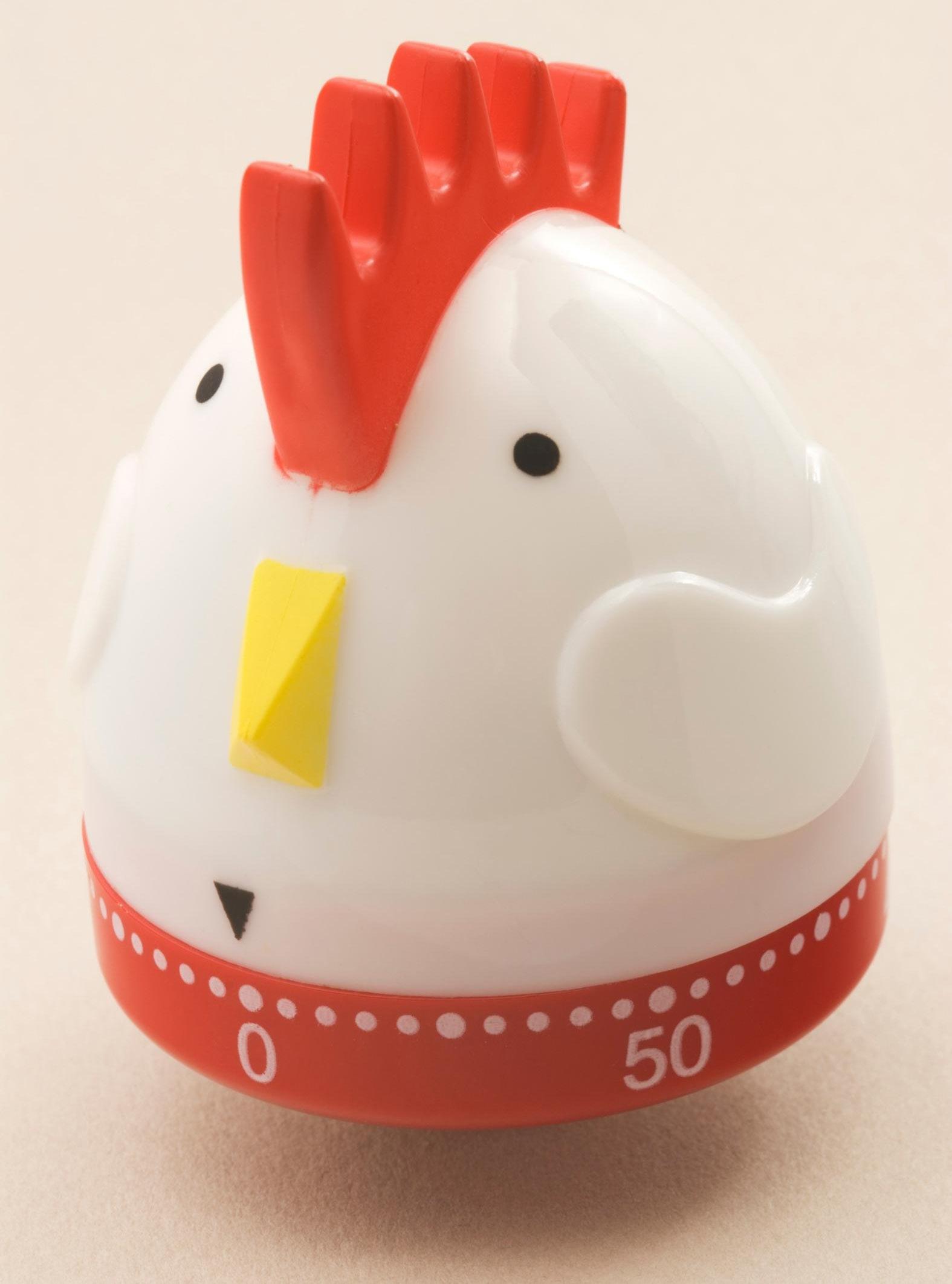
Exceptional Needs Today | Issue 10 | 59 LEARNING STRATEGIES
not getting in her way or your way—it is the doorway through which you can connect and interact with her.
Here is a three-step approach you can try:
1. Start by answering her questions enthusiastically. Each time she asks, answer her questions with a renewed at titude, one of excitement and delight. Seeing the egg timer as the doorway and your friend will really help. Think about it: we want to keep talking to someone if they are genuinely interested in what we are interest ed in. We tend to move away from people who are not at all interested in what we have to say or who keep getting us to do something other than what we want to do. Chances are your daughter does not have the experience of being with people who love egg timers. Changing that will help her want to engage with you for longer. The longer she engages, the more time you have to help her.
2. Get yourself your own egg timer. I googled some, and there are a lot of fun ones on the market today, in the shape of almost anything! There are animal and fruit shapes, timers made with sand, water, or different colors, and even egg timers with your name on them. There is a whole egg timer world. Pick one that would be fun for you. After you have answered her questions and admired her egg timer, show her yours.
3. Start creating different games around egg times. Here are some ideas:
• Get a generic egg timer, stick a monkey sticker on it, and hide it in a room, then play, “Let’s find the monkey egg timer!”
• Play pin the tail on the egg timer
• Play pass the parcel with a brand-new egg timer all wrapped up
• Stick a different letter sticker on the egg timer and have her guess which letter you put on it
• Pretend your egg timer is talking to her egg timer and they are sharing secrets together, or your egg timer is telling her egg timer a joke
In Autism Abracadabra, I have an entire section of games for children who love different household appliances. There are games for children who like vacuums and blenders; you can easily play all those games, too—just swap out the vacuum for an egg timer, and voilà, you will have many more games to play with her.
This way, your daughter’s interest is at the center of the game, making it inviting and fun for her to play, AND she is learning to take turns, listen to jokes, play regular peer party games, share secrets, and have a back-and-forth conversation all through what she loves the most. She is also being introduced to new things to play with, such as animals, letters, and stick ers.
I wish you all days filled with fun games and moments with your loved ones on the spectrum. Keep sending those ques tions in, and I will see you all again in the next issue.
Kate C. Wilde has spent the past 30 years working with children and adults on the autism spectrum and their families, as well as with therapists, educators, and schools. She is the author of the acclaimed books, Autistic Logistics: A Parent’s Guide to Tackling Bedtime, Toilet Training, Tantrums, Hitting, and Other Everyday Challenges and The Autism Language Launcher: A Parent’s Guide to Helping Your Child Turn Sounds and Words into Simple Conversations, and is renowned for the well-attended courses she teaches throughout the U.S., Europe, and Asia. Her YouTube autism quick tip videos, delivered with her trademark infectious enthusiasm, have garnered a following worldwide.
Websites: https://www.katecwilde.com/, https://www. autismcrisisturnaround.com/
IN SEARCH OF PERSONALIZED EXPERT GUIDANCE?
Send us your parenting questions, woes, concerns, and tricky situations with your beautiful, exceptional children. This includes all of you amazing professionals out there. Kate will answer up to five questions in every issue in her Kate Makes it Great! column. Kate has worked with children and adults on the spectrum for the past 30 years. She has clocked more than 20,000 therapy hours and has worked with well over 1,500 different children. Whatever you are facing today, Kate has most likely experienced it in some form. Her answers will be practical, doable, inspiring, optimistic, down to earth, and real. Together, there is nothing we cannot face with a little joy and love.
Submit your questions to submissions@exceptionalneedstoday.com

60 | Exceptional Needs Today | Issue 10 LEARNING STRATEGIES
The Sprout Story
By Ewa Omahen, PhD
ONCE, THERE WERE FRAGILE SPROUTS PLANTED IN THE GARDEN IN A TALL FOREST AMONG STURDY TREES. GARDENERS CAME AND WENT, PACKING AND UNPACKING THEIR TOOLS, SCRATCHING THEIR HEADS IN DISBELIEF. THEY HAD NOT SEEN PLANTS LIKE THIS BEFORE, AND THE TOOLS THEY BROUGHT DID NOT PROVE USEFUL. SOME OF THE GARDENERS PACKED THEIR SUPPLIES AND LEFT THINKING, “NO MATTER WHAT I DO, THESE SPROUTS WILL NOT TAKE ROOT.”
Some gardeners stayed. They tended to the fragile plants with special care, watering with love and fertilizing with hope. Storms came and went, and there were periods of drought. The delicate plants grew stronger and sturdier each day. The tall trees surrounding the plants learned to nurture them by moving their branches out of the way to let in more sunlight.
Visitors came to see the garden. Some passed by the patch of delicate plants, too busy to pause, only looking at the
sturdy trees and admiring their beauty and strength. Some visitors stopped on their way, admiring the fragile yet beau tiful sprouts and the faithful gardeners tending to them with love and care. The gardeners who stayed gained wisdom and knowledge by caring for the sprouts.
The sprouts took root and blossomed into unique and beauti ful plants. They will remain in the Garden of Life and be tended to with love by a few faithful gardeners, utilizing special tools

Exceptional Needs Today | Issue 10 | 61 MY WORD
and the ingredients of diligence, commitment, effort, wisdom, and hope. The visitors will come and go, some rushing to see only the sturdy trees.

There will be those who will linger long enough to admire the beauty and individuality of the fragile plants. They will walk away enriched by the experience, touched by the exception ality and vulnerability of the plants, with the wisdom to know they enhance the beauty of the garden and belong among the sturdy trees.
This is to honor all the educators and therapists who work with students with disabilities.

Ewa Omahen, PhD, is a resident of Oakland, Michigan, and mother of her young adult son, Patrick, who is diagnosed with autism spectrum disorder (ASD). Patrick attends the post-secondary program in Rochester Community Schools. Ewa works as a psychologist for Walled Lake Consolidated Schools. She is a passionate advocate for her son and all individuals with disabilities. Patrick and the students she works with continue to be her greatest joy and inspiration.
you wish there was a "magic" form for activities and games that
wants to participate in? and socialization?
Develops their interactive attention span
There is! Designed around common special interests enjoyed by autistic people, this book includes over 180 activities for families to do together to help strengthen relationships and develop social skills.

Kate shows how seven magic ingredients for optimal game-playing can be applied to a range of themes, from trains and planes to household appliances, the human body to animals and insects, TV and film characters, and what's more, how you can introduce your loved one's favorite topics.
She shares "Presto Chango" beliefs - the five mindsets you need to power activities - as well as how to understand the magic of timing and knowing when to start and stop an activity based on your loved one's cues.
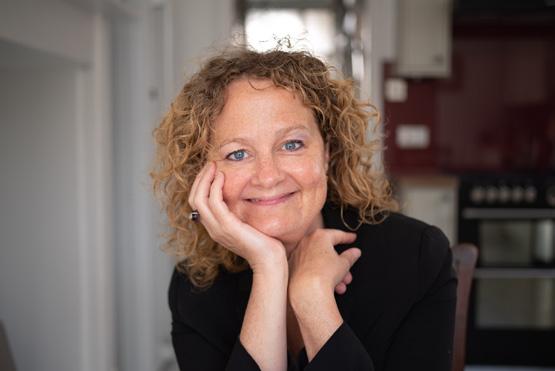
Your loved one on the autism spectru
Don't
actually
T O P U R C H A S E O N A M A Z O N h t t p s : / / a m z n . t o / 3 j C 8 6 h u 62 | Exceptional Needs Today | Issue 10 MY WORD
R F R E E



O u r m i s s i o e d u c a t e , s u p e n e r g i z e f a c a r e g i v e r s , e a n d p r o f e s s i o p r e p a r i n g a l l f a h e a l t h y EXCEPTIO NEED TODA YOU ARE NOT ALONE ON THIS JOURNEY e x c e p t i o n a l n e e d s t o d a y . c o m J O I N U S F O
Exceptional Needs Today | Issue 10 | 63
Understanding What It Takes To Become a Special Education Teacher
 By Karen Kaplan
By Karen Kaplan
WHAT I WISH I KNEW BEFORE I BECAME A SPECIAL EDUCATION TEACHER WAS THE TOPIC OF A VIDEO THAT CAME ACROSS MY FEED RECENTLY. I REMEMBER IT LISTING ALL THE POLICIES, PROCEDURES, ROLES, RE SPONSIBILITIES, AND PAPERWORK REQUIRED. I THOUGHT, IF THAT IS WHAT IT TAKES TO BECOME AN EFFECTIVE TEACHER, THEN SOME EXTREMELY IMPORTANT KEY FOUNDATIONAL SKILLS ARE MISSING. I WAS REMINDED OF THE LESSONS IN THE FILM THE WIZARD OF OZ: LEAD WITH YOUR HEART; HELPING OTHERS AND STANDING UP FOR WHAT YOU BELIEVE TAKES COURAGE, AND GAINING KNOWLEDGE AND EXPERIENCE HELPS YOU BECOME A GREAT LEADER.
I believe teachers need to know how to be leaders with soul, as described in the book Leading with Soul: An Uncommon
Journey of Spirit. They need to know how to inspire, include, and celebrate the paraprofessionals, students, and families
64 | Exceptional Needs Today | Issue 10 EXCEPTIONAL EDUCATION
with whom they will work closely. Teachers will need to devel op effective listening skills and teamwork. They will need to be trustworthy and model positive interaction skills, commu nication skills, and motivation skills.
Teachers will need to develop patience and resilience and practice the art of possibility thinking laid out by Robert Shul er in his book Move Ahead With Possibility Thinking. When we believe or think solutions are possible, we approach problems very differently. Teachers will probably remember the book The Little Engine That Could. The little engine had to believe he could, and then he did.
I am reminded of when individual education goals were not totally met, and it was time to send out a quarterly progress report. Teachers are given the option to just check the box that says more time is needed. I advise parents to explore that check mark. Is it true more time is needed, or does the approach need to change? Are the materials, tools, or lessons truly working? Are the right motivators in place? Does the student really understand what is expected of them? Is the goal meaningful? Is there another way to teach it? To become a special education teacher, one must look more closely at progress.
I believe teachers will need to develop detective skills so they can truly understand the individuality of each student and that student’s family. A teacher should be open to ongoing professional development in the latest curriculum, strategies, interventions, and wellness techniques that are constantly re fined and renewed.
I wish teachers could be provided with mentors who have suc cessfully traveled the special education path. We all need our heroes and guides. Years ago, Alliant International University in San Francisco provided mentors to all teachers obtaining their specialist credentials in autism. These teachers had a seasoned professional observe, listen, and brainstorm with them on challenges. I believe this is another piece to becom ing a successful special education teacher.
I wonder, are teachers encouraged or discouraged to ask for help, for additional therapy, time, or tools and equipment? I wonder. I know it takes courage.
It is also not always encouraged, developed, or supported in schools to keep parents consistently involved. It seems some processes in special education need to be rethought. We all know it takes a village to develop independence in a student who learns differently. It doesn’t just happen 180 days a year from 9:00 a.m. to 2:00 p.m. on a school site or just by adding another 20 shortened days in the summer. Parents need to be empowered, educated, trained, and included, and their feel ings understood. To become a successful special education, teachers need to learn how to work with the family. Do teach ers truly understand they embody HOPE for the family? Do
teachers understand the fears, anxiety, and sleepless nights of those parents?
In order to become a successful special education teacher, the individual needs to be provided with the needed resources. Do paraprofessionals have enough support to manage the needs of the students? Has effective therapeutic support been given to the teacher? Has the district provided a speech ther apist and occupational therapist to offer collaboration? Are there vital tools within the classroom (computers, appropri ate desks, chairs, sensory regulation equipment)? Have a va riety of curriculums been explored, and are the most effective reading programs provided? In whatever job we hold, we all know that to be successful means we have all the tools and equipment we need.
There are indeed very specific things credentialed teachers need to learn. So, is that happening? Are the University pro grams evaluating their success in turning out prepared teach ers? Do they know what it takes to be a successful special education teacher? Do the professors get out into the field? Have the Universities completed any type of evaluation on the success of their programs? Are universities also boxed in by process, limited procedures, or funding?
Perhaps the systems surrounding the development of special education teachers need to take a fresh look at themselves. Perhaps districts, universities, and special education local planning areas need to connect and collaborate more. May be the state department for teacher credentialing programs

Exceptional Needs Today | Issue 10 | 65 EXCEPTIONAL EDUCATION
needs to be included in the assessment and collaboration.
The truth is there are not enough teachers to teach in class rooms for special needs children. Public, private, and non-pub lic schools compete to recruit and hire the limited teachers available. Some classrooms are getting bigger. Some private schools and non-public schools have reduced their admis sions. Non-credentialed individuals are being waivered in to help support the crisis. Some say it’s about salaries and ben efits. Some say it is about all the layers of paperwork and doc umentation required. Some say it is the pressure from parents
and their legal advocates. Some say it is about the districts’ lack of support, knowledge, and resources. We know that COVID-19 reduced many universities’ ability to complete cre dentialing programs, but is the cost of obtaining a credential way out of line as well?
I believe in the art of possibility thinking. Let’s look at ALL the pieces. Let’s believe the solutions are out there. Let’s get cre ative. Let’s get collaborative. Let’s get real. Let’s help individu als become the special education teachers we need. Let’s bring HOPE back to families.
Karen Kaplan is a native San Franciscan. She completed her bachelor’s and master’s degrees at Arizona State University, Tempe, Arizona, in Speech Pathology and Audiology. She minored in Special Education and obtained her Speech Therapist and Special Education credentials in California. Karen worked as a speech therapist for both public schools and private schools for 20 years before opening her own residential and education program for students with autism spectrum disorders. She worked in credential programs at Sacramento State University as well as UC Davis and spent 20 additional years directing private schools for those with autism and similar learning challenges. Karan founded a small non-profit, Offerings, which travels globally helping other cultures understand those with developmental challenges. For seven years, she founded and facilitated an autism lecture series and resource fair in Northern California. Karen still facilitates an Autism Awesomeness event yearly, showcasing the strengths and talents of those who live on the spectrum. She is currently consulting, helping families, schools, and centers for children, teens, and adults. She has published articles to help bring ideas and strategies to families and professionals, providing hope. Karen authored Reach Me Teach Me in the early 70s and went on to publish her second book, On the Yellow Brick Road Finding Hope for Autism, in 2017. Her third book, Typing to Heaven and Back, is not about autism but about having important conversations with those we love. Be sure to connect with Karen—she is always ready to listen and think of the possibilities.
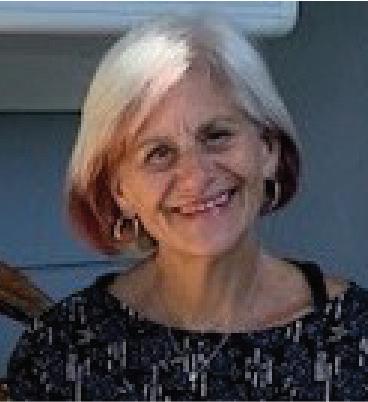
Website: www.karenkaplanasd.com
Autism Evaluation Resource
The Inland Empire Autism Assessment Center of Excellence

a non‐profit, evaluation‐only center
We provide the
Evaluations
Gold Standard
autism
We’re a trusted resource
other
other
We look forward to collaborating
COMMITTED TO PROVIDING THE HIGHEST LEVEL OF CARE YOU AND YOUR CHILD DESERVE THE HIGHEST LEVEL OF CARE FROM CHILD EXPERTS

in supporting the children and families of our shared community!
“
” in Comprehensive Diagnostic
for
and
neurodevelopmental disorders through a transdisciplinary team of experts in the fields of neurology, neuropsychology, occupational therapy, and speech and language pathology.
for thousands of caregivers and hundreds of physicians for children with medical, behavioral, sensory, social, or
complexities.
(AAC) is
that provides a singular solution to a multi‐specialty evaluation process. Email us at info@ieaace.com Call us today (909) 799‐3777
More info www.autismassessment4ie.org Follow us ieautismassessment@inlandempireautismasssessmentcenter 66 | Exceptional Needs Today | Issue 10 EXCEPTIONAL EDUCATION
Taking Control of ADHD as a Student
By Coral Levkovitz
I WAS DIAGNOSED WITH ADHD DURING MY JUNIOR YEAR AT UNC-CHAPEL HILL. DESPITE MY 20/20 VISION, MY DIAGNOSIS FELT AS THOUGH I HAD PUT ON A FRESH PAIR OF PRESCRIPTION GLASSES AFTER YEARS OF A BLURRED PERCEPTION OF REALITY. MY FIRST THREE YEARS OF COLLEGE HAD CAUSED MY CONFIDENCE IN MYSELF AND MY ABILITIES TO PLUMMET, AND I WAS COMPELLED TO RECONSIDER MY ENTIRE LIFE’S PURPOSE. I ALMOST GAVE UP ON MY DREAMS OF BECOMING A PHYSICIAN. AS A DAUGHTER OF ISRAELI PARENTS, I WAS A FIRST-GENERATION STUDENT IN AMERICA WITH A PATH TO CARVE FOR MY TWO YOUNGER SIBLINGS, BUT I WAS HITTING ROADBLOCKS THAT WERE HINDERING ME FROM REACHING MY DESTINATION. MY ACTIONS WERE BEING HEAVILY IMPEDED.

Initially,
I saw my ADHD diagnosis as a disability that would deter me from reaching my full potential. Blessings and burdens, however, are not mutually exclusive. This fresh pair of glasses was allowing me to see I was not being pun ished with my new medicine, testing accommodations,
and “special attention” in class; rather, I was given an advan tage. Since my diagnosis, I have been a successful student with the grades to prove it. If you are a student (or a parent of a student) newly diagnosed with ADHD, let me be your re minder that sometimes our biggest obstacles are, in fact, paths
Exceptional Needs Today | Issue 10 | 67 SKILLS FOR LIFE
disguised as impediments that we must conquer to reach our full potential.
Along with my diagnosis, I had to make a few changes to the way I managed my studies in order to succeed. I had to be come organized in a way that worked for my brain, and I real ized I could not adopt the study habits of my non-ADHD peers. So instead, I created my own. Below are some practices that changed the game for me. I hope they help you as well!
1. Schedule and plan
Regardless of if it is two days or two months away, I ALWAYS write down my deadlines and due dates for any projects, as signments, or exams. Using a weekly/monthly planner (the one I use is $9.34 on Amazon) allows me to have my to-do list in one place, rather than having numerous journals and apps and lists to check to ensure I am fulfilling my responsibilities. In addition to a due date, I write reminders 24 hours and one week before the date itself, just so I am aware of what is coming up and I can stay on top of my work. Color coding my dates is also a lifesaver—exams are one color, homework/assignment deadlines are another, etc. (the colored erasable pens I get are on Amazon for $11.99 and have lasted me two years).
2. Start early so as not to fall behind
As a person with ADHD, I’ve found that completing assign ments and studying for exams usually takes me longer than my peers, and I have come to accept and love this! Because of this, I have learned it is best for me to begin early rather than procrastinate and stress out. Give yourself the extra time. If you end up not needing it, great! You will have extra time for some self-care. This brings me to my next point.
3. Take care of your body
Exercise has been a blessing in my life. Even 10 minutes of movement is better than nothing, and it makes such a dif ference in energy levels and motivation in school! In a study published in the Journal of Clinical Medicine, it was found that “exercise positively impacts executive functions and atten tional control in children with ADHD” and that consistent and long-term exercise is correlated with improvement in several cognitive functions (Christiansen et al., 2019). For further mo tivation, follow my fitness page @coralsfitness on Instagram! I post daily workouts for all levels of experience, as well as nu trition advice and tips on balancing health with life as a stu dent. Eating a nutritious, balanced diet is important too! I find limiting my caffeine intake and setting alarms for eating and drinking has allowed my body to recalibrate to my usual appe tite. ADHD medicine can reduce appetite, so it is crucial to set up reminders to feed your body!
4. Take care of your mind
Alongside my diagnosis, I began practicing meditation and mindfulness. This helped reduce my testing anxiety and gain control of my focus. This can be done by watching/listening to free videos on YouTube (search guided meditation for ADHD/ anxiety/sleep, etc.) or downloading Headspace, which is an app you can use that will provide you with daily meditations and will track your progress (for students, it costs $9.99 per YEAR)! Learning to control ADHD is empowering. If I can do it, I know you can too.
5. Find support
Before my diagnosis, I was never one to ask for help; I thought I could do everything on my own. If I want you to take anything away from this article, let it be this: YOU ARE NOT ALONE! You can find people to support you through this journey, and you can find others just like you that can help you with whatever you need. For example, after watching a TedX talk by Jessica McCabe, I joined her “How to ADHD” community and have felt empowered and inspired by her content. Reach out to your school and discuss ways they can accommodate your ADHD. Be proud of who you are and find others you can teach and/or learn from.
Long story short, set yourself up for success! You can be in con trol of your ADHD rather than having it control you. Being a stu dent with ADHD can be difficult at first, but once you find what works for you, the world is full of endless opportunities! You can do whatever you set your mind to, no matter what anyone says. Set goals for yourself and go out there and crush them. Believe in yourself, and the world will follow suit. Best of luck!
Sources
Christiansen, L., Beck, M. M., Bilenberg, N., Wienecke, J., As trup, A., Lundbye-Jensen, J. (2019) Effects of Exercise on Cogni tive Performance in Children and Adolescents with ADHD: Po tential Mechanisms and Evidence-based Recommendations. Journal of Clinical Medicine, 8(6), 841. https://doi.org/10.3390/ jcm8060841
Coral Levkovitz is a 23-year-old future physician. She graduated from the Uni versity of North Carolina Chapel Hill with a bachelor’s degree in Biology. Coral is a second-degree Black Belt in Taekwondo and a licensed EMT. She currently works as a group fitness instructor for cancer survi vors and is pursuing medical school. She hopes her journey with ADHD will inspire others to become the best version of them selves and to pursue their dreams.

68 | Exceptional Needs Today | Issue 10 SKILLS FOR LIFE
I
a
By Meredith Polsky, LMSW, MS and Arlen Gaines, MSW, LCSW-C,
The I Have a Question book series
children
grapple with
death,
their caregivers as
topics, in
inclusive, and gen der-neutral, this series helps reduce fear and anxiety
providing families, therapists, and teachers a roadmap for challenging
Designed initially for children with au tism spectrum disorder (ASD) and other special needs, who are often under-rep resented in children’s literature, these books have become a go-to resource for helping ALL children understand complicated life transitions.
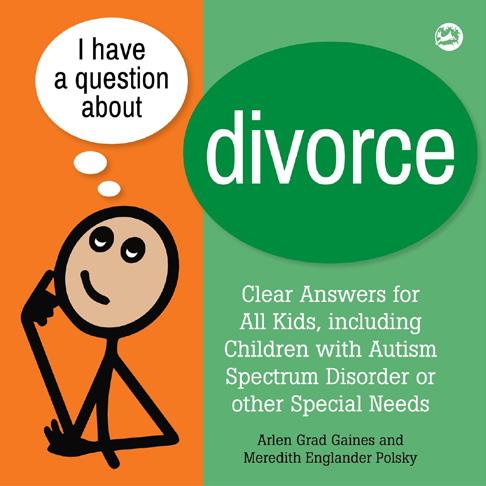


Meredith Polsky, LMSW, MS Special Education, has been working at the intersection of social work and special education for more than 20 years. She has a proven track record of recognizing an unmet need and creating a successful solution. She founded Matan, Inc. (www.matankids.org) in the year 2000 and has successfully taken it from the idea stage to a nationally recognized nonprofit organization that has changed the face of faith-based education for tens of thousands of families. Ms. Polsky is also a child and family therapist specializing in Selective Mutism and lives in Gaithersburg, MD, with her husband and three children.


Arlen Gaines, MSW, LCSW-C,
a
manager
licensed clinical social worker with an advanced certification in hospice and palliative social
is currently pursuing her PhD in Palliative Care through the University of Maryland. Over her fifteen years of hospice
in supporting families with children with special needs
death
developed
husband and two children.
APHSW-C, is
hospice clinical
and
work. She
work, she has
a specialization
around
and dying. Ms. Gaines lives in Bethesda, MD, with her
Website: www.ihaveaquestionbook.com Facebook: https://www.facebook.com/IHaveaQuestionBook EXCEPTIONAL BOOKS
Have
Question Amazon: https://www.amazon.com/s?k=i+have+a+question+about&crid=1RUWVTAXDTLTR&sprefix=i+have+a+question+about% 2Caps%2C44&ref=nb_sb_noss_2 ADVERTISEMENT
sup ports
and
they
difficult
cluding
divorce, and cancer. Straightforward,
while
conversations.
APHSW-C
Teaching Young People About Relationships and Consensual Sex When There Are Special Needs
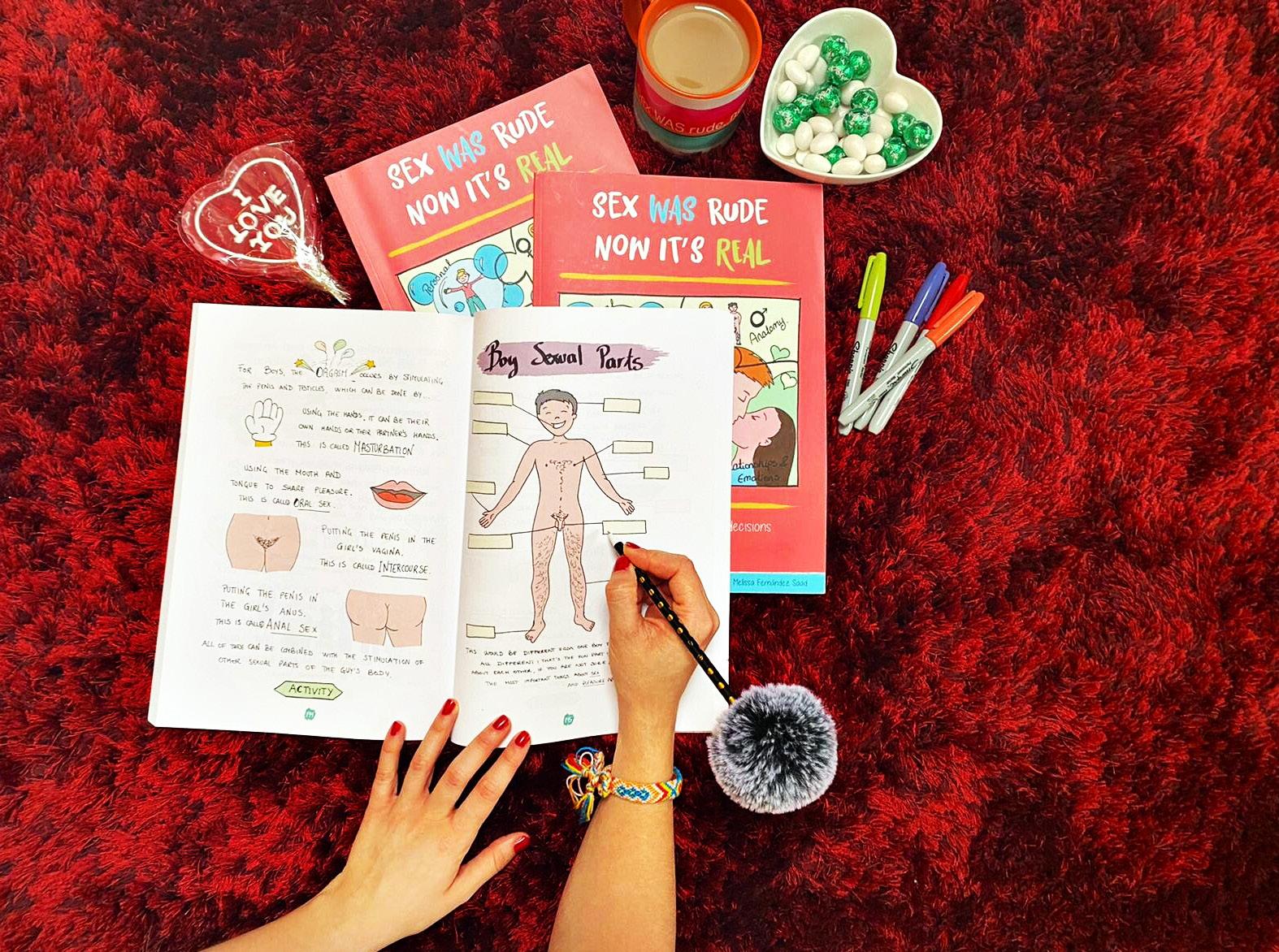 By Isabel Bullón Benito
By Isabel Bullón Benito
AS SOON AS WE ARE BORN, WE CONNECT WITH OTHERS. SOME PEOPLE EVEN SAY THAT BEFORE THEN, WE ARE ALREADY ABLE TO RECOGNIZE AND DISTINGUISH OUR PARENTS’ VOICES FROM ANY OTHER VOICE. THEN SOMEHOW, WHEN WE ARE BABIES, AND WITHOUT PROMPTING, WE START COPYING BEHAVIORS FROM OTHERS. WE GET CURIOUS ABOUT WHAT THESE BEHAVIORS MEAN, AND AS WE GROW AND ASK THE RIGHT QUESTIONS, WE OBSERVE RESPONSES FROM OTHERS. AND SOMEHOW, AGAIN, WE GET AN UNDERSTANDING OF WHEN THOSE BEHAVIORS ARE APPROPRIATE AND WHEN THEY DEFINITELY ARE NOT.
70 | Exceptional Needs Today | Issue 10 SKILLS FOR LIFE
But
what happens if you cannot decipher these codes? How would you feel if, for some reason, you could see everyone around you has unwritten rules you can’t understand? Nobody explains these rules, but you can see they exist. Even worse, they automati
cally expected you to know them. You are supposed to follow these silent rules blindly without explanations or answers— the world tells you, “Just do it this way because it’s everyone’s way,” and “It’s what is accepted and expected.”
Children who feel or act differently shouldn’t be considered wrong. It’s frustrating for them as they have feelings, love oth ers, and enjoy connecting, just in ways that may appear differ ent to others. That’s why, when someone with an exceptional ity, such as autism, cannot understand other people’s “rules instinctively,” they may appear unpredictable. Some autistics don’t intuitively know which social response is expected, and even when provided the “correct” response, they may not un derstand the reason behind it. This can make life scary, frus trating, and exhausting.

These experiences can get more complex as a young person matures. People diagnosed with exceptional needs are equally capable of feeling sexual desire, and many will want to enjoy sex in the future. But it’s not so simple for everyone, especially when expectations are unknown.

When you must control your impulses, not because you know the immediate consequences for yourself and others and you understand other people’s feelings, but because you will get told off, you will be emotionally punished without understand ing why. If the reason is never explained to you because every one assumes you should know, but you don’t, frustration can build with little chance of a reprieve. This can lead to nonstop anxiety that pushes the limits.
You might run away, hide, and avoid dealing with the pain and anxiety of hidden expectations and those who uphold them. You may feel forced to find your own way, your solution to achieving peace. You feel alone, and it’s scary, but in isolation, you finally feel safe...and that’s exactly the time when you hear
Sexuality and relationships are like games; fun, exciting, and full of mystery that allows us to learn more about others and ourselves—but they can also be unpredictable. They involve pressure and expectations; sometimes, they can even mean pain. This can happen to anyone. So, how do we help those who cannot instinctively understand the unwritten rules? How do we help them stay safe while allowing them to be happy? How do we make an unpredictable journey predictable? How do we make something so abstract as emotions into some thing with logic, with a structure?
people say: “They are autistic, so they prefer to be left alone.”
Exceptional Needs Today | Issue 10 | 71 SKILLS FOR LIFE
Well, it may not always feel like an easy journey, but the way to start is always from the beginning. My book, Sex WAS Rude, Now It’s REAL, started as a small project to help an autistic young man understand his erections and body. As I began to create materials, I soon realized I couldn’t explain what an erection was without first explaining sexual attraction. I couldn’t ex plain sexual attraction without talking about anatomy and the differences between genders. And I couldn’t explain all that and expect it to make sense while keeping everyone safe if someone didn’t understand the meaning of personal space and boundaries and how others feel when we break them.
And what would be the point of explaining all that without talking about emotions in greater depth, without talking about everyone’s right to say “No,” and how rejection hurts but doesn’t make you less valuable? At the end of the day, we all want to be respected as individuals who can make our own choices about our interpersonal relationships, and though many of us desire to turn sexual attraction into something more, something that might touch our hearts to the point of maybe even falling in love with someone, that isn’t the case for everyone.
I think talking about sexuality should give structure to some thing very complex, to explain step-by-step what relationships are. I believe the conversation should start with the simplest concepts like personal space and explaining boundaries de pending on the relationship we have with someone. Then it should progress through anatomy and how the individual’s body works in detail, as well as how it is similar or different to other bodies, before moving on to something as personal and complicated as sexual attraction.
This part of the discussion should include the difference be tween sexual attraction, romantic attraction, and sexual arousal; various sexual tendencies; masturbation; safe sex; sexual orientation; etc. Finally, the topic should shift towards relationships and emotions, which will allow someone to learn about their own emotions and those of others in the romantic and sexual context.
This was my choice, my way of planning a very complicated lesson and break it down into small pieces. If you are a pro fessional or a parent trying to find answers, remember that you don’t have to include all these “pieces” in your plan or use them the same way. You don’t even have to use my materials! The main thing is that we, as professionals, understand this is not something purely academic: this is a lesson of life, our student’s life, and we need to offer a structure that is flexible enough to be adjusted to what the person needs, what they want to learn about, their interests, and their curiosities.
We need to offer a safe place where people can finally ask all their questions, where they can finally get those unwritten rules written down for them in a way they can understand, and where you, as a professional, as a parent, as the person guid

ing them, must just keep a very open mind, because we are all different. Our perspectives will never be the same. Sadly, their experiences could be marked by fear and anxiety coming from an environment that has always been telling them sexu ality is not for them—sex is something to hide, forget about, or fear. You may even be the first person allowing them to express themselves with a smile and showing understanding.
Once you have chosen the pieces you want to include, you are ready to offer an open mind and are comfortable maintaining a ‘flexible lesson structure.’ Here comes the final question: “How do I keep them safe while they learn about sex?” Adulthood, privacy, trust, and consent. These are the main concepts to dis cuss, explain, and work on from the beginning of this journey because they will allow them and others to be safe while learn ing and discussing sexuality.
We live in a world where social media pushes younger peo ple to grow up quicker than they should, and talking about adulthood as part of learning about sexuality will be our way of teaching that there should be no rush to explore sexuality. Privacy should be discussed because both sexual activity and even conversations about sexuality are part of our own intima cy and private lives. Trust is important because we don’t talk about or share our private lives with everyone. Finally, consent
72 | Exceptional Needs Today | Issue 10 SKILLS FOR LIFE
is probably the most important aspect of this lesson because we are ALL allowed to say “No.” Rejection may hurt, but it also makes us stronger. It can push us to be confident about who we are and what we deserve, so we can either find the right people who will value us for who we are or be comfortable and secure in our independence.
Sexuality is a difficult subject to discuss, but if we could look at it from a more human, connection-focused perspective, where we understand what our students are looking for and allow them to love and be loved, we will make their journey a lot eas ier while keeping them safe and happy.




Isabel Bullón Benito is a social worker and educational psychologist who has completed a master’s in new creative ways of teaching people depending on their specific needs. She is also training herself as an Art Therapist to assist with many mental health issues through art and creativity. She is the author of Sex WAS Rude, Now It’s REAL, a comprehensive and interactive guide to help autistic people and others with exceptional needs to understand their sexuality through games, comics, stories, and activities that will make such a tedious task into something natural and fun.
Isabel is also the cofounder of Personal-Eyes Education, a project created to make education and environment accessible and adjustable to anyone’s needs through creative materials that explain everyday situations in a very simple, natural, and fun way. The Personal-Eyes Sex Ed Program, or PSE Program, is her latest and more exciting project. It is an interactive educational course to train professionals to work with autistic and exceptional needs people in understanding sexuality and relationships. It explains how to talk about the subject in a natural and realistic way and provides the ability to remain flexible, allowing for the adjustment of materials to accommodate whatever the student wants to learn about.
Website: https://personal-eyes-education.com/ Twitter: https://twitter.com/bullon_isabel




Visit Us for Free Trial access to the world's largest autism focused streaming library of world renowned experts Register Today worldautismconference.org/all-access-pass Register Today with code EXCEPTIONAL for 60% off the All-Access Pass! Now: just $299 $120 for 12 months of access Limit one coupon code per registration. Cannot be combined with any other offer. The US Autism Association presents the Video Streaming Library All Access Pass Subscribers Get a Full Year of Access Online, On Demand Video Streaming Library Featuring over 60 World Renowned Experts Continuing Education & CEUs available Access to US Autism Online Events including webinars, summits, and more Exceptional Needs Today | Issue 10 | 73 SKILLS FOR LIFE
People Presents and thePowerful Rewards of Listening
By Dr. Maria F. Gilmour, PhD, BCBA-D

IN THE 1970S, PASSIONATE GRATEFUL DEAD FANS BEGAN TRAVELING TO AS MANY SHOWS AS POSSIBLE. THESE “DEADHEADS” WOULD SELL TIE-DYE T-SHIRTS, VEGGIE BURRITOS, AND ILLICIT SUBSTANCES FROM THE HIPPIE CAMPS THAT POPPED UP AROUND VENUES TO SUPPORT THEIR CONCERT LIFESTYLE.
AS A RESULT, A SPRAWLING COMMUNITY DEVELOPED, ALL DETERMINED TO STAY IN THE GRATEFUL DEAD VIBE.
74 | Exceptional Needs Today | Issue 10 MY WORD
What
does this have to do with me? Rather than spending my young adult years following a counter-culture jam band, I traveled from con cert to concert following a guy from Australia who played solo acoustic guitar. You should be asking, “Maria, there is no shortage of solo acoustic guitar players in the United States; why did you follow Tommy Em manuel?”
Tommy is an extraordinary guitarist. Some critics say it would take three musicians, or more, to do what Tommy does solo. I could have followed Jeff Beck or Ry Cooder if I was seeking a superb guitarist, but Tommy’s “People Presence” or “ People Presents” created an instant bond.
My Tommy journey began when I was learning to play guitar, and my instructor encouraged me to see him play. So, I bought a ticket and chose a meet-and-greet option as it didn’t cost ex tra—I guess Tommy liked to talk to people.
After the show, I gathered with the other fans; I was just a no body, but Tommy looked into my eyes with a depth of kind ness that awakened a profound feeling—what I call People Presents. I still carry this palpable sensation to this day. Having enjoyed the experience, I went to the next day’s show, and he remembered my name even as I was thinking, “Aren’t you too famous for little people like me?” We ended up hanging out over the next few days.
I followed Tommy for a few years until it was clear my concert follower days were drawing to a close; my career loomed. At my last concert, I approached Tommy with fondness in my heart, gave him my business card, and said, “If you ever need anything, feel free to reach out.” A year later, I got an email from him. This may not mean much to you, but for me, it held the same significance as being contacted by Eric Clapton or Paul McCartney.
So now, another 10 years had gone by, and Tommy was in town. No way would I miss it. To my surprise and satisfaction, he gave me a wonderful embrace. Connecting deeply, he asked, “Ma ria, are you still taking care of autism in the world?”
“Yes, Tommy. I haven’t given up,” I answered, feeling a little giddy. “Just like you inspiring millions with your music.”
Tommy smiled in his eye-to-eye way, “We’re all connected; we’re doing this together.”
You may take this as Maria’s gushy girl fandom, but I consider him one of my teachers. When he talks to me, he makes me feel like I’m the only person in the world. I learned this superpower from Tommy and use it today in my dealings with others. Tom my may be a musician, but people come first in his life. And when you’re with him, you feel he is there to bestow a gift from his depth as a person—a People Present.
People Presents are the superpower of listening. By listening, you can see challenging behavior as innocent and an expres sion of real needs.
When the pandemic disrupted every sort of relationship, it also created an opportunity to experience real needs and appreci ate people as gifts. Suddenly, our therapy practice was forced to switch from in-person to telehealth. Like everyone else, we had no idea whether full-time behavior therapy through a camera lens would affect clinical outcomes. It takes a lot of attention to stay connected during a Zoom meeting, and atten tion is in short supply with kids.

Exceptional Needs Today | Issue 10 | 75 MY WORD
Contrary to what we expected, we had tremendous success with teenagers on telehealth. Why is that? We expected them to be distracted by the myriad things in the room and the fact they could shut the computer off at any moment.
Unlike a group on Zoom, our telehealth sessions offered a one-on-one relationship. Like all people, these kids wanted to connect with another human being—and there we were, eye to eye, screen to screen.
When we start work with each new client, we assess the prob lematic behaviors that brought them to our program. To our surprise, we did not see these behaviors during the session. This freed us up to focus on interaction and interpersonal skills, then build from that. It became clear how telehealth forced us to talk with the person and become People Present.
The kids had personal agendas, and like everyone, they need ed someone to confide in who was on their wavelength. They came through our digital front door starved for that connec tion—for a People Present. Suddenly, we were pairing with them through telehealth, and wow, it felt good! The reported behaviors were not evident, suggesting the children were us ing behaviors to get what they wanted. And what they wanted was attention.
Consider your children. At their core, they are highly re ceptive—and highly absorbent. Absorbent children open their hearts and minds, trusting that what they receive from their family and the world will meet their needs. When that open-hearted purity is not met with love, they register alarm. They tighten, react, and exhibit behaviors challenging to social standards, but they are not misdeeds. Instead of being met, their alarms go off. They seek safety and a calm, co-regulated nervous system.
My dog, Emma, is also an obedient and loving co-regulator. Scientists understand how having a companion like Emma, who receives you with total acceptance, can keep your heart rate at a calm level. That’s why service animals not only sup port the blind or people with other physical disabilities but also help people with autism. They can reduce agitation by a calming action. The dog or other animal might lean against the child or gently lie across their lap.
It’s a tall order to ask you to perform your parenting skills as well as Emma, but that’s the task. Emma draws from her heart of total acceptance to help me open my own and settle my ner vous system. She wags, frolics, snuggles, and follows my lead in play. If I want to play ball, she pairs perfectly by playing my silly game until I want to move on to tug-of-war. Best of all, Emma provides noncontingent reinforcement throughout the day—often in the form of a lick.
Emma can’t help with my paperwork or explain why the dish washer is broken again, but she draws from the totality of her being to serve. As a parent, you have more tricks up your sleeve than Emma and, importantly, more lived experience. Parents and caregivers have many gifts to give to their children.
Maybe you served in the military, excelled in sports, or won the science fair. These successes form the fabric of who you are. Conversely, you may have faced abuse, had parents who divorced or suffered a childhood disease. These also form the mettle of who you are.
As a parent, you are on a sacred mission. With an open heart, you transmit your presence and listen to your child’s needs. Yet, you may feel life shoved you into a parenting role without the skills or fortitude required—especially if your kids behave in ways you never expected. I work with many families whose kids are newly diagnosed. These parents don’t realize they have a well of untapped superpowers that will be tested on the journey ahead.
We all have these powers, and like Superman, you only discov er how to melt steel or stop bullets in a critical moment. You discover your calmness or how to see children in an innocent light when all hell is going down.
What’s difficult today will become easier tomorrow. One thing is certain—your relationship with your children is sacred. Even when you are 70, and they are 40, the heart your children bring to you will remain open, waiting to receive your People Pres ents.
Dr.
modeling
experience
in the field
the Chief Clinical Officer of Gemiini Systems, a
on providing caregiver education

pursue research
video modeling.
Maria F. Gilmour, PhD, BCBA-D is a behavior analyst with over two-and-a-half decades of
working
of applied behavior analysis and developmental disabilities. Dr. Gilmour is
video
company, and president of Wynne Solutions, an ABA agency focusing
and direct intervention services via telehealth. Dr. Gilmour collaborates with multidisciplinary team members across the globe to provide clinical supports in a variety of settings while continuing to
in
Websites: www.wynnesolutions.com, www.SevenSuperpowers.com, www.gemiini.org 76 | Exceptional Needs Today | Issue 10 MY WORD
Managing Holiday Stress While Balancing Exceptional Needs

 By Meshell Baylor, MHS
By Meshell Baylor, MHS
THE WINTER HOLIDAYS ARE SOME OF THE MOST WONDERFUL TIMES OF THE YEAR, WHERE WE ARE ENCOURAGED TO GET TOGETHER WITH ALL OUR FRIENDS AND LOVED ONES AS WE CELEBRATE GETTING THROUGH THE YEAR WITH GRATEFULNESS.
EXCEPTIONAL ADVICE FROM MESHELL
“The holiday season is a perfect time to reflect on our blessings and seek out ways to make life better for those around us.” —Unknown
Exceptional Needs Today | Issue 10 | 77
Aswe approach the holiday season, it can be alarm ing, especially for parents, to realize just how much goes into preparing for them. Activities like gift giv ing, decorating, buying, or making holiday-themed items, setting up for annual traditions, preparing special meals, and giving back to the community make for a hectic few months. It’s enough to make anyone question their ability to multitask! For those already balancing exceptional needs, it might prove even more daunting. So, how can we pre pare our exceptional needs families so they can share equally in their favored festivities?
Managing holiday prep, parenting, and work-life balance is a super job for any parent, but as equipped as supermoms and superdads already are, their management process needs to be streamlined as much as possible to maintain a healthy holiday experience for everyone (including themselves). According to a Healthline study, 60% of people experience some form of stress when preparing for the holiday season. Making sure ev ery loved one has a gift while also preparing for a huge holiday
dinner or another event can be overwhelming, especially for an exceptional needs parent or child. No one wants to spend a joyful time in a state of misery, overwork, or overstimulation, and children easily recognize if their parent or guardian is ex periencing holiday blues.

Here are some healthy ideas to help you decrease stress during the season:
• Do not overdo it: Rome was not built in a day; take time to plan out each holiday activity you need to do. Grab the old-fashioned pen and paper and jot down your list of to-dos. Set a specific time and date to have each one done. Try not to cram and allow time for you and your loved ones to breathe between activities. Don’t overburden yourself!
• Power in numbers: ‘Tis the season to rely on fam ily and community. Allow your children or loved ones to join the holiday to-do list. You can make it a game: give each person in the household a specific job assignment so everyone has a task and there is a positive form of inclusion. If needed, break down complex tasks or split a more difficult job between two people to accommo date everyone. Things like grabbing all the holiday or naments out of storage or writing down recipes for the dishes you will make may seem faster to do on your own but delegating enough of these small tasks can add up, saving you a lot of time and stress. Let those you are working so hard for help and spend time with you. Ev erything can get done with some family participation!
• Set your budget: Take time to determine an official holiday finance budget. If you have things from the pre vious holidays that are in mint condition, utilize them. This can include used, unmarked gift bags, open rolls of gift wrap, novelty lights, and more. If there is nothing wrong with it, reuse it. If you must do some shopping, refer to your holiday budget and write down the things you absolutely need. Pay attention to store newsletters and find coupons to clip; trust me, you will be happy when a coupon comes in handy and knocks 20% off that toy, ingredient, or item you need. There is no shame in being thrifty.
• Ask for help: We understand exceptional parents are superheroes and may sometimes be too indepen dent or prideful to ask for help but understand that even Superman had the Justice League when he needed as sistance. If you do not have family members to help you, reach out to your closest friends and ask for backup. The season brings out the merriment in all of us, and we want to spread that holiday cheer. So do not be afraid to ask for help when you are in need.
• Breathe: Preparing for the holidays can be extreme ly overwhelming, so take out the time to practice some deep breathing exercises. Yes, holiday stress can cause
78 | Exceptional Needs Today | Issue 10 EMOTIONAL HEALTH
your blood pressure to elevate, panic attacks, and ex treme emotional distress, but taking a five to ten-minute mindful break and taking time to depressurize allows the mind and body to recharge on positive energy which can help relieve tension. Remember, self-care is the best care!

• Have fun: Preparing for the holiday season is like running in a stampede but remember: the entire point is about having fun with family. Always recognize the joy of having close friends and family to be grateful for and invite them to spend quality time with you. Play some fun trivia games, sing songs, and do some amaz ing arts and crafts together in the season where we cel ebrate the joy of living and loving those close to us. In closing, managing the holidays can be a major undertaking, but remember, it’s all about the joy, laughter, and memories that will live on within our hearts. Take time to recognize that the holiday season is about celebrating life, love, and happi ness. Not everything will be perfect, nor does it have to be, but the perfection in knowing you have everyone there to support and love you is priceless.
Meshell Baylor, MHS, is a mother of four children—two of whom are on the spectrum. She serves her community as a social worker and community advocate within the Los Angeles area. She has a bachelor’s degree in Human Services from Springfield College and a Master of Science in Human and Social Services. Meshell continues to volunteer and give within her community while serving the special needs community. Website: http://meshellbaylor.wixsite.com/website Instagram: https://instagram.com/imalittlebigb?utm_medium=copy_link
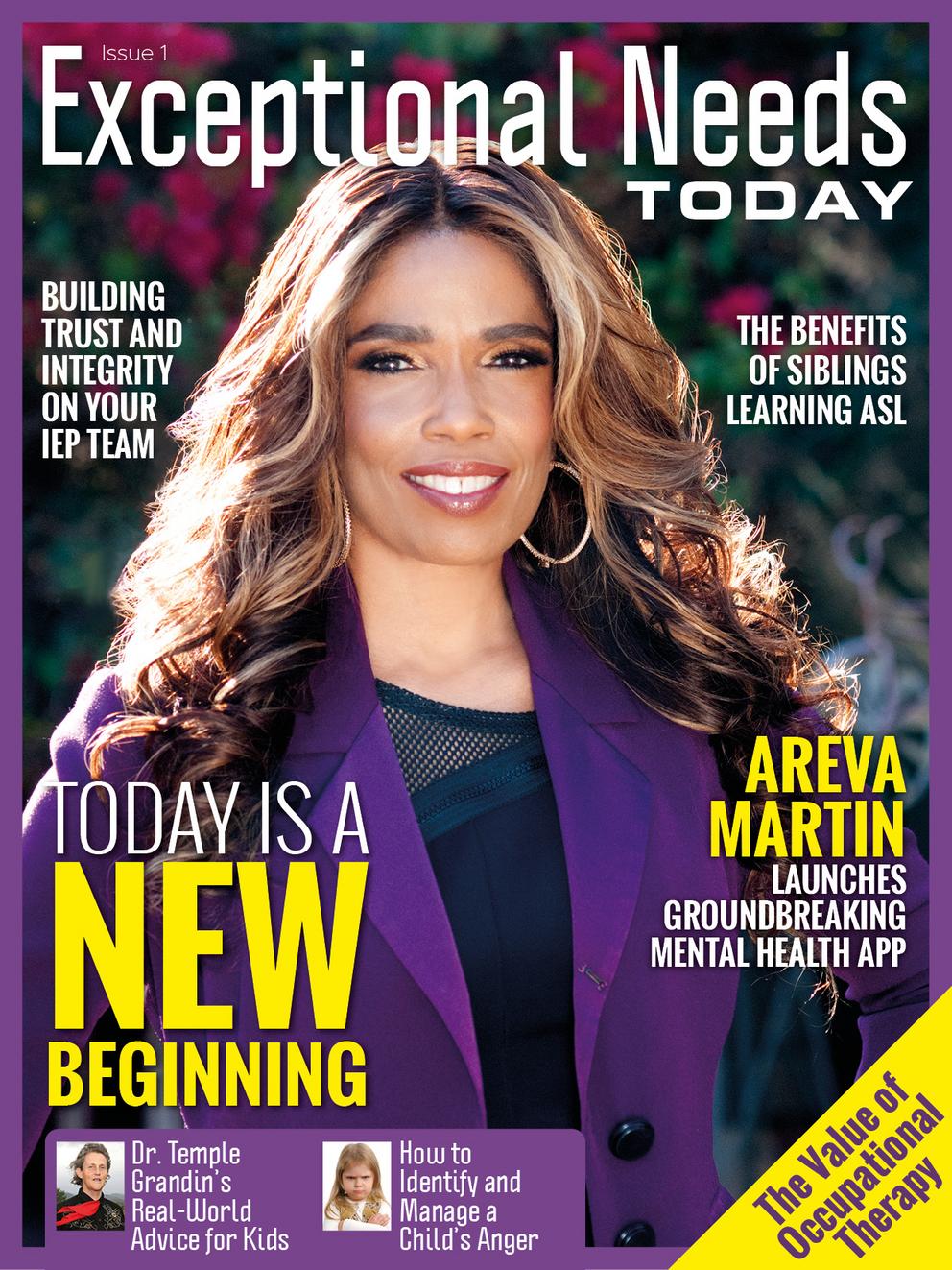
References Holiday Stress
Greenberg Quinlan Research https://www.apa.org/ Healthline https://www.healthline.com/

HOW CAN YOU HELP? Exceptional Needs Today is funded entirely by advertisers and sponsors. Please go to https://exceptionalneedstoday.com/support/ to help keep the magazine a FREE resource. Exceptional Needs Today | Issue 10 | 79 EMOTIONAL HEALTH
A Mother’s Thoughts: The Banality of Autism
 By Dr. Marlene Ringler, PhD
By Dr. Marlene Ringler, PhD
AS THE MOTHER OF A NEARLY 50-YEAR-OLD SON WHO WAS GIVEN A HIGH-FUNCTIONING AUTISM SPECTRUM DISORDER (ASD) DIAGNOSIS, OR ASPERGER’S SYNDROME AS IT WAS KNOWN MANY YEARS
AGO, I WISH TO SHARE MY HURT, DISMAY, AND ANGER WHEN PEOPLE THROW OUT THE COMMENT, “OH, THEY MUST BE ON THE SPECTRUM,” TO EXPLAIN UNUSUAL BEHAVIOR, DRESS COMBINATIONS, OR FACIAL EXPRESSIONS SOMETIMES ASSOCIATED WITH PERSONS DIAGNOSED WITH ASD.
Sometimes
these comments follow a quick observa tion of some “weird” or inexplicable behavior not expected from an adult. Other times, the statement is made to describe a friend, relative, or acquain tance who remained on the sidelines during discus sions or interactions with family members and friends. And sometimes, the comment follows a discussion about family members or the inner circle who was labeled by other family or friends years ago as being stubborn, insensitive, or lacking empathy.
An autism spectrum diagnosis is serious. It is a lifelong dis
ability that can be associated with comorbid psychiatric conditions, including schizophrenia or paranoia. While the disability itself does not present as life-threatening, having a diagnosis of autism can define what a person is able to achieve and often how the world perceives them too often in negative terms. The perceptions of persons in a community in which an autistic person lives can strongly impact what that person achieves, as well as their self-perception. Unfortunate ly, if outside criticism or restrictions are too damaging to one’s self-perception, the individual may eventually experience clinical depression and/or a level of impairment and dysfunc tionality that, sadly, may become life-threatening.
80 | Exceptional Needs Today | Issue 10 MY WORD
Those of us who parent autistic kids and have raised them from childhood into adulthood understand that life for our children is often an ongoing struggle. We celebrate their ac complishments, achievements, and successes with pride and joy. Their pain and hurt as they navigate a world they often misunderstand and a world which, in turn, misunderstands them is something parents of the autistic population often ex perience alongside their children. The pain and hurt are pal pable.
Hannah Arendt once described Adolf Eichmann in a famous journalist piece she wrote for The New Yorker in 1961 on his war crimes trial. She suggested he was a person who was not inherently evil but merely shallow. She put forth the notion of the “banality of evil”—that a person could do evil without being evil. This often-controversial description of Eichmann continues to stir debate, as it is difficult to understand how Eichmann could participate in the Nazi genocide without hav ing evil intentions. The word “banal” means trite, common place, or even overused. Thus, Arendt’s intent to characterize Eichmann’s evil actions as not unusual can be tough to accept, but it is perhaps her way of coming to terms with Eichmann’s horrific and evil behavior.
The expression “the banality of autism” suggests persons can display behaviors sometimes associated with ASD, which can be seen or described as unusual, quirky, or strange, but the person is not professionally diagnosed as having autism. Smugly describing these behaviors as autistic or throwing out a comment which suggests a person’s actions can be general ized as a diagnosis is unfair and cruel. We parents of autistic family members know the difference. We feel the pain like a stab wound when a person uses the term “autistic” in a cava lier and foolish way. While we may not always be able to de scribe autistic behavior, we know it when we see and experi ence it. It is not banal.
Dr. Alycia Halladay, Autism Science Foundation’s Chief Science Officer, recently summarized some of the sessions at the In ternational Society for Autism Research meetings held in May, in Texas, by observing that autism means different things to different people. Autism affects 78 million people worldwide. It is not a banal condition. Over 30 years have passed since autism became an official diagnosis in the DSM-IV: Diagnostic and Statistical Manual of Mental Disorders, published in 1994. The term Asperger’s syndrome was also added to the DSM-IV. Today, we recognize the diversity and heterogeneity of per sons diagnosed with ASD. The definitions of exactly what we mean by a spectrum diagnosis continue to evolve. The notion, for example, of profound autism as a defining category was recently put forth in the New Lancet Commission Report “The Lancet Commission on the future of care and clinical research in autism,” written by prominent researchers, including Pro fessor Catherine Lord. (Lord et al., 2022) The debates and dis cussions continue—as they should—as we speak about a con dition that needs to be taken seriously and not simply used
as a catchall term by people who totally misunderstand what ASD implies.
So, please stop and correct persons who say silly things such as, “They must be on the spectrum,” with a knowing smile or nod to explain away a behavior they perceive as nonstan dard. Throwing out such a comment is insulting and just plain wrong. I believe it is our duty as parents of autistic family members to speak out and not to allow people to simplify and reduce our children’s condition with disrespectful, unin formed, and misguided comments. Autism is not banal.
References
Lord, C., Charman, T., Havdahl, A., Carbone, P., Anagnostou, E., Boyd, B., ... & McCauley, J. B. (2022). The Lancet Commis sion on the future of care and clinical research in autism. The Lancet, 399(10321), 271-334. https://www.thelancet.com/jour nals/lancet/article/PIIS0140-6736(21)01541-5/fulltext
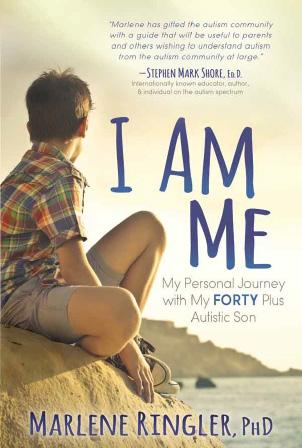
Dr. Marlene Ringler has a PhD in English Language and Literature and is a trained and certified teacher, CEO, and founder of the international Ringler English Language Institute. Her company was recognized as a lead vendor for global training for multinationals to include Toyota, Intel, IBM, and Microsoft. She pioneered the concept of in-house training, specifically in business settings. When living in the United States, Marlene was the co-coordinator of the English for Specific Purposes and English as a Second Language adult training programs for refugees and immigrants in Montgomery County Public Schools in Maryland. Her program was nominated for special recognition by the White House for its work in adult literacy.
An advocate for persons with disabil ities, Marlene encouraged people in school systems in the U.S. and Isra el to develop programs for students who might not otherwise be able to function in a typical classroom. She counseled and guided teachers, ad ministrators, and parents to recognize the needs of the disabled population. Today, Marlene works closely with service care providers to maximize the potential of the autistic popula tion in a work setting. In addition, she counsels and advises parents about resources, opportunities, and the legal aspects of raising an autis tic child to adulthood. Marlene and her family currently reside in Israel and sponsor, host, and organize conferences, social events, and gatherings to promote awareness about the needs of the au tistic adult.
Website: https://www.marleneringler.com Facebook: https://facebook.com/authormarleneringler/ Twitter: https://twitter.com/MarleneRingler LinkedIn: https://www.linkedin.com/in/dr-marlene-ringler/

Exceptional Needs Today | Issue 10 | 81 MY WORD



Exceptional Needs Today is committed to remaining a FREE publication to provide guidance to ALL individuals. Please consider advertising with us to support the exceptional needs community. Let's ensure no one is left behind... MEDIA KIT exceptionalneedstoday.com advertising@exceptionalneedstoday.com EXCEPTIONAL NEEDS TODAY
Top Sports Vacation
Ideas for Families With Differing Abilities

 By Dawn M. Barclay
By Dawn M. Barclay
Exceptional Needs Today | Issue 10 | 83 STAYING FIT AND HEALTHY
ARE YOU PLANNING TO TRAVEL THIS FALL OR WINTER WITH YOUR NEURODIVERSE CHILD? OR PERHAPS WITH A FAMILY THAT IS A BLEND OF NEUROTYPICAL AND NEURODIVERSE? SPORTS VACATIONS ARE AN EXCELLENT CHOICE, WHETHER YOU’RE GRAVITATING TO COLDER CLIMES OR WARMER ONES BECAUSE THERE’S SOMETHING OF INTEREST FOR EVERYONE. MANY RESORTS OFFER PROGRAMS DIRECTED TOWARD PARTICIPANTS OF VARYING ABILITIES.

For those who love the snow, consider skiing. Individual sports like skiing have long been advocated for children on the spec trum because they can participate without stress-filled social interaction. One favorite resort for Starr Wlodarski, a Certified Autism Travel Professional (CATP) with Cruise Planners in Per rysburg, Ohio, is Beaver Creek in Colorado for its adaptive ski ing program. “The quality of the instructors is probably some of the best I have come across [and I’ve skied] in quite a few different locations. … My son [who is neurodiverse] can spot an insincere person a mile away and also someone who is not used to being around people on the spectrum. [They need to be] very patient as Alex (26) has motor planning issues.” Read more about Beaver Creek’s program at beavercreek.com.
Another strongly recommended ski resort is Smugglers’ Notch in Vermont. Sarah Marshall, a CATP and Accessible Adventures Consultant with TravelAble LLC in Midlothian, Virginia, praises its adaptive ski program: “I interviewed the woman that runs the program, and it is truly amazing. They [offer] both private lesson options and group lesson options. But there is also the SNAP program (Smugglers’ Notch Adaptive Program) which is a full-day or half-day, week-long camp experience for special youngsters. If the children have mobility difficulties, they can use a mono-ski or a bi-ski. If they need balance work, there are sliders.”
“They also offer inclusion programs, with individual experi ences tailored to meet the needs and goals of each kiddo,” she continues. “They can do one-on-one or one-on-two if needed. There is no age limit for the program.” The lady I spoke with said the biggest challenge is the parents. They don’t believe their child will be able to ski, but by the end of the week, [the kids] are able to go down most of the ski runs. It is my num ber one recommendation for family ski programs. You can find out more at smuggs.com
Moving into warmer destinations, popular activities for those on the spectrum include horseback riding. Any interaction with horses can be positive, says Gene Kilgore of Top50Ranch es.com. In his 2015 article, Horseback Riding for Kids with Autism, he writes: “Many autistic children struggle with ver bal development and eye contact and other ways that peo
ple use to bond with each other. With equine therapy, since the children are working with horses who interact in a purely physical manner, they can learn other ways to connect, create, and nurture bonds … [The therapy] can be very soothing for autistic children who may experience high anxiety or frequent tantrums.”1
A dude ranch is a wonderful venue for children on and off the spectrum who enjoy horses and other sports activities. One favorite of Nicole Thibault, a CATP with Magical Storybook Travels in Fairport, New York, is the Saguaro Lake Ranch in Mesa, Arizona. Not only is the venue a Certified Autism Cen ter, receiving that designation from the International Board of Credentialing and Continuing Education Standards (IBCCES), but the entire city of Mesa is a Certified Autism Center as well, which means they’ve had intense training on how to deal with
84 | Exceptional Needs Today | Issue 10 STAYING FIT AND HEALTHY
travelers with invisible disabilities. Located in the Tonto Na tional Forest near the banks of the Salt River, Thibault says that for children who aren’t big equine fans, the ranch also offers adaptive kayaking as well as astronomy nights. These activities will be a big hit with children with a passion for wa ter-related activities or space; planets and stars are easily visi ble in the unobstructed expanse of the Mesa night sky. Her last visit was in February when her family enjoyed temperatures comfortably in the 70s. Learn more at saguarolakeranch.com.
Going full tropical offers possibilities for golf, as well as adap tive watersports such as scuba diving and surfing.
There are more and more golfers on the spectrum who have found playing golf to be both soothing and satisfying, says Carl W. Johnson of Adventures in Golf (incorporated as Hamill Travel Services, Inc.) in Amherst, New Hampshire. “Golf cours es are quiet, [with] not many people near you, nothing truly unexpected will happen (no fire alarms or other unexpected noises). Truly, golf is one of the only sports which can apply to anyone of nearly any skill level. Almost any limitations can be overcome.”2 The other wonderful thing about golf is that golf courses are everywhere, and many offer discounts when children play alongside their parents.
Scuba is an especially relaxing activity for spectrum travelers, considering the quiet and beauty of the undersea world is far from typical social interaction. In addition, autistic divers may find the deep compression from wet suits therapeutic and comfortable.
Diveheart, an organization specializing in scuba diving for those with physical and invisible disabilities, offers a directory of instructors who work with children on the spectrum around the country. Check it out at diveheart.org. Owner Jim Elliott says for those people seeking vacation destinations, they usu ally refer spectrum families to dive operations that have expe rience working with individuals with autism and other disabil ities, such as Rainbow Reef in Key Largo, Gold Coast Scuba in Fort Lauderdale, and Dive Paradise in Cozumel. “We may also send families to one of our teams around the world or to one of our partners that have adaptive buddies and instructors on staff or independent adaptive scuba instructors or buddies that we’ve trained,” he explains.3
Tour operators at Il Viaggio Travel have long served the needs of wheelchair travelers who want to explore Costa Rica. After consulting with Nicole Thibault, they developed a program for those on the autism spectrum that includes adaptive surfing. Thibault said her son spent two hours on the board learning to navigate the surf while wearing the biggest smile she’d ever seen. Other surfer students may just sit or lie on their stom achs on their boards and paddle in the water, but the beauty of the program is that it serves all abilities, she explains. For more information, contact General Manager Stephanie Shee hy at accessible.ilviaggiocr.com.
Of course, booking your fall or winter vacation through a CATP, such as any of those mentioned in this article, can put their expertise to work while saving you time and energy. Check the IBCCES website at https://bit.ly/3NSJuxI to find their contact information.
Source
1,2,3 Barclay, D. M. (2022) Traveling Different: Vacation Strategies for Parents of the Anxious, the Inflexible, and the Neurodiverse. Rowman & Littlefield

Dawn M. Barclay has spent a career in the travel industry, both in sales and market ing. She’s also held senior or contributing editor positions at four major travel trade publications and is the author of the new release, Traveling Different: Vacation Strategies for Parents of the Anxious, the Inflexible, and the Neurodiverse.
Website: http://www.travelingdifferent.com

Exceptional Needs Today | Issue 10 | 85 STAYING FIT AND HEALTHY
Nature Notes
Coming Home to Nature: An Interview With Patrick Barkham
 By Amy Wagenfeld, PhD, OTR/L, SCEM, EDAC, FAOTA
By Amy Wagenfeld, PhD, OTR/L, SCEM, EDAC, FAOTA
Ihad
the pleasure of having a Zoom interview with Patrick Barkham. He is an award-winning author and natural his tory writer for The Guardian. Patrick’s books include The Butterfly Isles, Badgerlands, Coastlines, Islander, and Wild Child. He has edited an anthology of British nature writing, The Wild Isles, and a soon-to-be-published biography of nature writer and wild swimmer Roger Deakin. Patrick lives in Norfolk, England, with his family. I highly recommend reading Wild Child and hope you find this interview to be an inspiration to be out side with your children.
Amy Wagenfeld (AW): Patrick, thanks so much for mak ing time to speak with me. Let’s start with this question. Would you please tell us what your favorite place in nature is and what makes it special?
Patrick Barkham (PB): My favorite place in nature is a beach in Norfolk in England called Wells-next-the-Sea. It’s a small port on the varied marshy North coast, and next to it, about a mile beyond the marshes, is the sea. I love it because
86 | Exceptional Needs Today | Issue 10 STAYING FIT AND HEALTHY
it has an enormous golden sandy beach and sand dunes and pine woods behind it.
It’s very reminiscent of beaches on the East coast of North America, and in its scale, it is a place you can go and just find peace and space, both of which are at a kind of premium in today’s world. It’s also this vast arena of freedom for children, where they can run free and enjoy themselves. Obviously, it’s a place very rich in nature, but for us humans, it’s the blank canvas on which we can play and create. My children love drawing in the sand or building the classic motif castle as the tide comes in over the sand. There’s just no end to things you can do in this environment by engaging peacefully with it.
AW: Thank you, Patrick. Now, shifting course a bit, what was your inspiration for writing Wild Child: Coming Home to Na ture?
PB: I became a parent over 10 years ago, and obviously, for every person becoming a parent, it is a life-changing experi ence. I began to reflect upon the sort of childhood my children were going to have, and I realized that it was going to be very different from my own. We had been living in London, and I moved back to Norfolk, which is a very rural county in England where I’d grown up; 35 years before, I had roamed pretty free ly.
From about age eight or nine, from my home onto a common nearby, I would cycle three miles to primary school occasion ally. And as a 10-year-old on my own, I cycled to other plac es, so I had some degree of roaming freedom, and I realized that my children weren’t going to have that. I was concerned that they would be unable to develop a relationship with oth er species, with wildlife, without that freedom to roam and discover for themselves in the outdoors. That’s really when I started looking at ways in which we could raise our children in the modern world that still gave them roaming freedom and an ability to make relationships with other species, and so I guess that’s what drove me.
AW: This is perhaps a follow-up question—how did you get interested in forest schools, a focus of the book?
PB: I’ve worked for a long time as a reporter and writer for The Guardian, and I still work for them, writing mainly about the environment and nature. I think I saw a story about a new kind of forest school, a fairly radical nursery for young children in which they would be outdoors at all times in all weather, opening up near me in Norfolk. I pitched it as a story to my ed itors, and they said yes, so I went along to research and write about this particular school. My twins, Esme and Milly, were 18 months old at the time, and coming up to nursery school age, so I took them along as well. They played there whilst I interviewed the two teachers who had founded Dandelion Forest School, as it’s called. Seeing that setting—just a simple kind of muddy field with a few tents in it, a yurt, a campfire, and some trees to climb—and talking to other parents whose
children were going to outdoor settings like that and seeing it for myself had a kind of magic.
Things like children having to learn how to climb a tree them selves and assess the risk and then have to get down again themselves without too much mollycoddling. It all made sense. It seemed kind of idyllic and lovely, so I set about find ing out more about this movement, which is relatively new in the UK since the 1990s. In Denmark and Northern European and Scandinavian countries like Sweden and Norway, they’ve had these outdoor schools for preschoolers for quite a long time. Since its arrival in the 1990s, the forest school movement has steadily developed here without any government support whatsoever and is an entirely grassroots organic process.
It seemed quite significant, so my children ended up going to Dandelion for nursery school. I began volunteering there, and I spent more than a year there, volunteering one day a week, and that formed the basis of my explorations in Wild Child, seeing what sort of effect this kind of school outdoors has on

Exceptional Needs Today | Issue 10 | 87 STAYING FIT AND HEALTHY
young children. I’ve seen the positive impact that it has had on them.
AW: What do you hope for this and future generations of chil dren and their relationship with nature?

PB: A really good question. I hope that children will contin ue to develop a great love of nature and realize that they can find great joy and happiness and pleasure in more intimate relationships with species other than our own and in natural settings and natural places. We’re seeing a huge awakening amongst young people about the climate crisis and an extinc tion crisis if you like. So many very inspirational young people and teenagers are becoming increasingly politically active on the environmental stage, and that’s wonderful, but my fear is that nature becomes another thing for a very anxious genera tion to be anxious about.
So, that’s why my greatest hope is that children spend time in nature and learn what great pleasure and joy is found there as well because I think we need those two things. We need the sense of jeopardy and the realistic sense that our nature is in great peril and life on this planet is in great peril, but we also need to realize that nature not only needs saving, and we must be anxious about it, but that we can find great pleasure and joy in it. It enhances our life and is a fun thing, as well as a provider of food and clean air and everything we need to live and survive.
AW: That’s beautiful. Do you have any special stories to share about being in nature with your children?
PB: My stories are all small and modest, but I hope they illus trate a point that all of us can find pleasure in nature. Children are seriously inventive, and they will always find something to do, and we, as parents or grandparents or guardians, don’t have to provide them with complex experiences. We don’t have to guide them in nature; we can just let them play and explore and find their own fun and games.
Recently, we’ve been on holiday to a stony beach in Britain. The children found lots of what they called sea glass, which is bits from old broken bottles that have been rolled around on the pebbles in the sea for so long they’ve become beautiful and smoothed over bits of rubbish. Essentially, the children went about collecting it as if it was the most priceless trea sure, and in doing so, they were undertaking a sort of beach clean, removing these pieces of glass from the sand. I was amazed at my son Ted as he spent hours collecting the sea glass until he had a jam jar full of it. My greatest pleasure as a parent was just being there on the beach and hearing him singing to himself as he was collecting his sea glass; it was such a picture of childhood contentment. It was nothing that I had done; I hadn’t pointed this out. He discovered it for him self. I think children need to discover things for themselves because then they decide what’s magical. They don’t need a parent necessarily pointing going, “That’s magical,” or “That’s amazing, isn’t it?”
AW: What do you see is the most challenging issue that’s pre venting children from fully embracing nature?

88 | Exceptional Needs Today | Issue 10 STAYING FIT AND HEALTHY
PB: One thing that’s inhibiting children from being given a kind of modicum of freedom to play outdoors and discov er nature is the absence of green space close to homes in cities. I feel like this is a particular problem certainly in British cit ies, but it would be an incredibly popular government policy or a policy of states or any authority anywhere to say we believe it’s a modern-day human right for urban dwellers to have high-quality green space with a bit of wildness within a kilometer or within a mile of home. It could create a new generation of urban parks in our towns and cities. Again, I think this would help facilitate children’s freedom to play outdoors in nature. I do think there are things that we can do, and I think those three things—psychological fears about parenting and the danger of strangers,
the predominance of traffic on roads, and the absence of high-quality green space in urban areas—are preventing our children from having independent, joyful relation ships with neighborhood nature.

This interview was originally published as a three-part series on the American Society of Landscape Architects Children’s Outdoor Environments Field Blog. It has been adapted and is reprinted here with the permission of the ASLA. It has been edited slightly for the magazine.
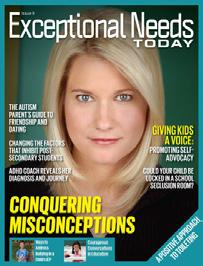

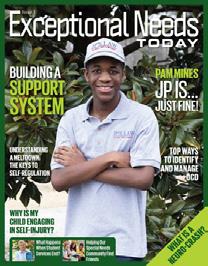



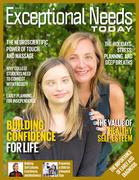


Photo credits to Patrick Barkham except for the image with him and his children, which is © Marcus Garrett

Amy Wagenfeld, PhD, OTR/L, SCEM, EDAC, FAOTA, is Principal of Amy Wagenfeld | Design and Lecturer in the Post-Professional Occupational Therapy Doctoral Program at Boston University. She is a Fellow of the American Occupational Therapy Association and the Center for Health Systems and Design at Texas A&M University and holds evidence-based design accreditation and certification (EDAC) through the Center for Health Design, specialty certification in environmental modifications (SCEM) through the American Occupational Therapy Association, and certification in health care garden design through the Chicago Botanic Garden. Amy presents and publishes widely on topics relating to access to nature and is coauthor of the award-winning book Therapeutic Gardens: Design for Healing Spaces, published by Timber Press. When not designing gardens, researching, or developing garden and nature programs, Amy can be found happily digging in the dirt.
Website: www.amywagenfelddesign.com
Blog: http://workjournal.org/nurture-through-nature

Email: amy@amywagenfelddesign.com

L E T ' S W O R K T O G E T H E R
(AW): Thank you, Patrick!
A D V E R T I S I N G @ E X C E P T I O N A L N E E D S T O D A Y . C O M W W W . E X C E P T I O N A L N E E D S T O D A Y . C O M EXCEPTIONAL NEEDS TODAY
Exceptional Needs Today | Issue 10 | 89 STAYING FIT AND HEALTHY
ADVERTISE WITH US





A C H Y O U R

U S I N E S S G O A L S
MEDIA KIT advertising@exceptionalneedstoday.com EXCEPTIONAL NEEDS TODAY R E
B
















 By JC Ellinger
By JC Ellinger















 By Andrea Pollack, MSEd
By Andrea Pollack, MSEd




 By Karen Kaplan for Both Parent and Child
By Karen Kaplan for Both Parent and Child



















 By Brandon Clark, PsyD, BCBA
By Brandon Clark, PsyD, BCBA













 By Patrick LaCount, PhD
By Patrick LaCount, PhD







 By Deanna Picon Beautiful
By Deanna Picon Beautiful






 By Tammy Flynn
By Tammy Flynn









 By Laura Ryan, OTD, OTRL
By Laura Ryan, OTD, OTRL



 By Beatrice (Bea) Moise, MS, BCCS
By Beatrice (Bea) Moise, MS, BCCS


















 By Kate C. Wilde
By Kate C. Wilde











 By Karen Kaplan
By Karen Kaplan











 By Isabel Bullón Benito
By Isabel Bullón Benito














 By Meshell Baylor, MHS
By Meshell Baylor, MHS




 By Dr. Marlene Ringler, PhD
By Dr. Marlene Ringler, PhD








 By Amy Wagenfeld, PhD, OTR/L, SCEM, EDAC, FAOTA
By Amy Wagenfeld, PhD, OTR/L, SCEM, EDAC, FAOTA
















